








KRISTEN HAZARD
















With years of community service under his belt, JOHN SPATAFORE shares his thoughts about our local homeless population and the new center at 40 Prado.
After more than 40 years, local living legend MONTE MILLS is still rockin’ his country sound.
There’s more reason to watch San Luis Obispo High School junior OLIVER HICKS than his left-handed pitching.
Always on the hunt for new and now, we take a look at the latest trends in fitness, beauty and nutrition.
TOM FRANCISKOVICH reports on the history behind Justin Vineyards & Winery oak tree clear-cutting.

This historic San Luis Obispo home boasts eclectic, yet sophisticated styling.

In partnership with the American Institute of Architects we present two top ranking projects along the Central Coast designed by local architects.
We share the year-to-date statistics of home sales for both the city and the county of San Luis Obispo.
Looking for laughter and entertainment, PADEN HUGHES takes the short trip to Oceano for an evening show at the Great American Melodrama.
In this ongoing feature exploring the 25-year-old San Luis Obispo County institution known as LEADERSHIP SLO, we get to know a few of its graduates from classes sixteen through twenty.
From salad to salsa, JAIME LEWIS shares her favorite Central Coast midsummer treats.
With an oyster farm as close as Morro Bay, these tasty bites are a must have in every local kitchen. Discover how CHEF JESSIE RIVAS fries and serves them up in a traditional po’ boy sandwich.
With exotic flavors and cutting edge brewing techniques, BRANT MYERS explores the new direction in microbrews.
Check out the calendar to discover t he best e vents around the Central Coast in August and September.

Probably 99.9% of the time, the two questions that every parent dreads—“What is there to eat?” and its close relative, “What’s for dinner?”—are directed to my wife. But the other day, when my seven-year-old son said, “Dad, I’m starving. What do we have to eat?” it made me chuckle as I thought back to the days when I, too, would “starve” between meals.
Growing up, my sisters and I, motivated by equal parts of boredom and hunger, would often ask our mother a similar question. Invariably, her cadence slowed way down as if we were in the Deep South somewhere: “There’s peanut butter, there’s cheese, there’s apples…” But, the amazing thing was how long she could stretch out those words, which I believe she thought would make it sound like we had more in the cupboard than we actually did. Each syllable would be over-enunciated as if she were still standing in front of her ESL class that she would have taught earlier that day, “There’s pea-nut but-ter.” Somehow, miraculously, she could turn “cheese” into a compound word that would take a few counts to get out, “There’s cheeeeee-eeeeese.”
It was all the healthy stuff that we—much like my kids now—did not want to hear about. To this day, I put my mom up there with Colonel Sanders as one of the greatest food marketers of all time. Whenever we would respond with a chorus of groaning objections to the options presented, my mom, in the same hushed tone a pirate would use to discuss buried treasure, would suggest, “Well, if you kids are really good, I’ll make you a surprise plate.” No matter how many times we heard this line, we always thought we had hit the jackpot when she asked us to close our eyes, “and be really, really quiet,” and then place in each of our laps a plate with apple slices slathered in peanut butter framed by hastily cut strips of cheddar. Somehow the surprise plate, just like the Colonel’s chicken, was incredibly popular with us kids, while the raw materials, individually, were of little interest.
Yet, Mom’s mastery in the kitchen began, it did not end, with the surprise plate. Nearly every single morning I could count on one thing as I rubbed the sleep from my eyes and shuffled my bare feet over the brown, shaggy carpet leading down the hallway from my bedroom to the kitchen. On the countertop, next to the sink would be a pound of ground beef; its plastic packaging sweating in the early sunlight as it began the magical transformation from frozen to fresh. Spotting this hunk of meat created an immediate Pavlovian response, “Mom, what’s for dinner?” The only thing that I have ever seen that comes anywhere near rivaling her imagination as it concerned ground beef was when Bubba, in the movie Forrest Gump, describes all of the different ways to prepare shrimp. “You can barbeque it, boil it, bake it, sauté it…” Only for us, it was, “We’re having meatloaf, or we’re having meatballs, or we’re having hamburgers…” My favorite was when she would make tacos.
It was not so much the tacos themselves, but the theatre that went along with their production. She would fill the bottom of a frying pan with Wesson oil then submerge a corn tortilla, one at a time, to make her own homemade taco shells. In one hand, she would wield a pair of salad tongs, in the other she hoisted a pan cover that she held up like a knight in shining armor charging into combat. With the electric-coil burner set to “High,” the battle was on. After the oil reached a certain temperature, it snapped and popped firing randomly at anything within a five-foot radius. Occasionally, she would get nailed by 500-degree drops of liquefied cottonseeds. “Ow, dammit!” she’d cry out as she bobbed and weaved looking for an opportunity to slip in and turn the tortilla under a hailstorm of ballistics. “Sonovabich!” she yelled after another direct hit, then reflexively dropping behind the shield as another projectile rocketed overhead. My sisters and I were careful to stay out of harm’s way, but we never missed the show, which would end as it always did, with the words, “Dinner’s ready!”
I would like to take this opportunity to say “thank you” to everyone who has had a hand in producing this issue of SLO LIFE Magazine and, most of all, to our advertisers and subscribers—we couldn’t do it without you.
Tom Franciskovich tom@slolifemagazine.com







4251 S. HIGUERA STREET, SUITE 800, SAN LUIS OBISPO, CALIFORNIA SLOLIFEMAGAZINE.COM info@slolifemagazine.com (805) 543-8600 • (805) 456-1677 fax
PUBLISHER
Tom Franciskovich
CREATIVE DIRECTOR
Elder Placements realizes the IMPORTANCE of listening to the client, in order to find the appropriate:
Independent Living Assisted Living Alzheimer’s & Dementia Care Homes

Let their experienced Certified Senior Advisors take you on a tour to find the Retirement Home or Community that fits your loved ones Medical, Financial and Social needs, at NO Cost to you.

Nicole
Sheryl Disher

Paden Hughes
Dawn Janke
Jessie Rivas
Jaime Lewis
Brant Myers
Vanessa Plakias
Trevor Povah
Renoda Campbell
Steve Corey
Steve Hilstein
Kathy Mills
Have some comments or feedback about something you’ve read here? Or, do you have something on your mind that you think everyone should know about? Submit your story ideas, events, recipes and announcements by visiting us online at slolifemagazine.com and click “Share Your Story” or email us at info@slolifemagazine.com. Be sure to include your full name and city for verification purposes. Contributions chosen for publication may be edited for clarity and space limitations.
If you would like to advertise, please contact Tom Franciskovich by phone at (805) 543-8600 or by email at tom@slolifemagazine.com or visit us online at slolifemagazine.com/advertise and we will send you a complete media kit with loads of testimonials from happy advertisers.
Ready to live the SLO Life all year long? It’s quick and easy! Just log on to slolifemagazine.com/subscribe. It’s just $24.95 for the year. And don’t forget to set your friends and family up with a subscription, too. It’s the gift that keeps on giving!
The opinions expressed within these pages do not necessarily reflect those of SLO LIFE Magazine. No part of this publication may be reproduced in whole or in part without the expressed written permission of the publisher.
Complete details regarding circulation, coverage and advertising rates, space, sizes and similar information are available to prospective advertisers. Please call or email for a media kit. Closing date is 30 days before date of issue.
LETTERS TO THE EDITOR info@slolifemagazine.com 4251 S. Higuera Street, Suite 800 San Luis Obispo, CA 93401
Letters chosen for publication may be edited for clarity and space limitations.

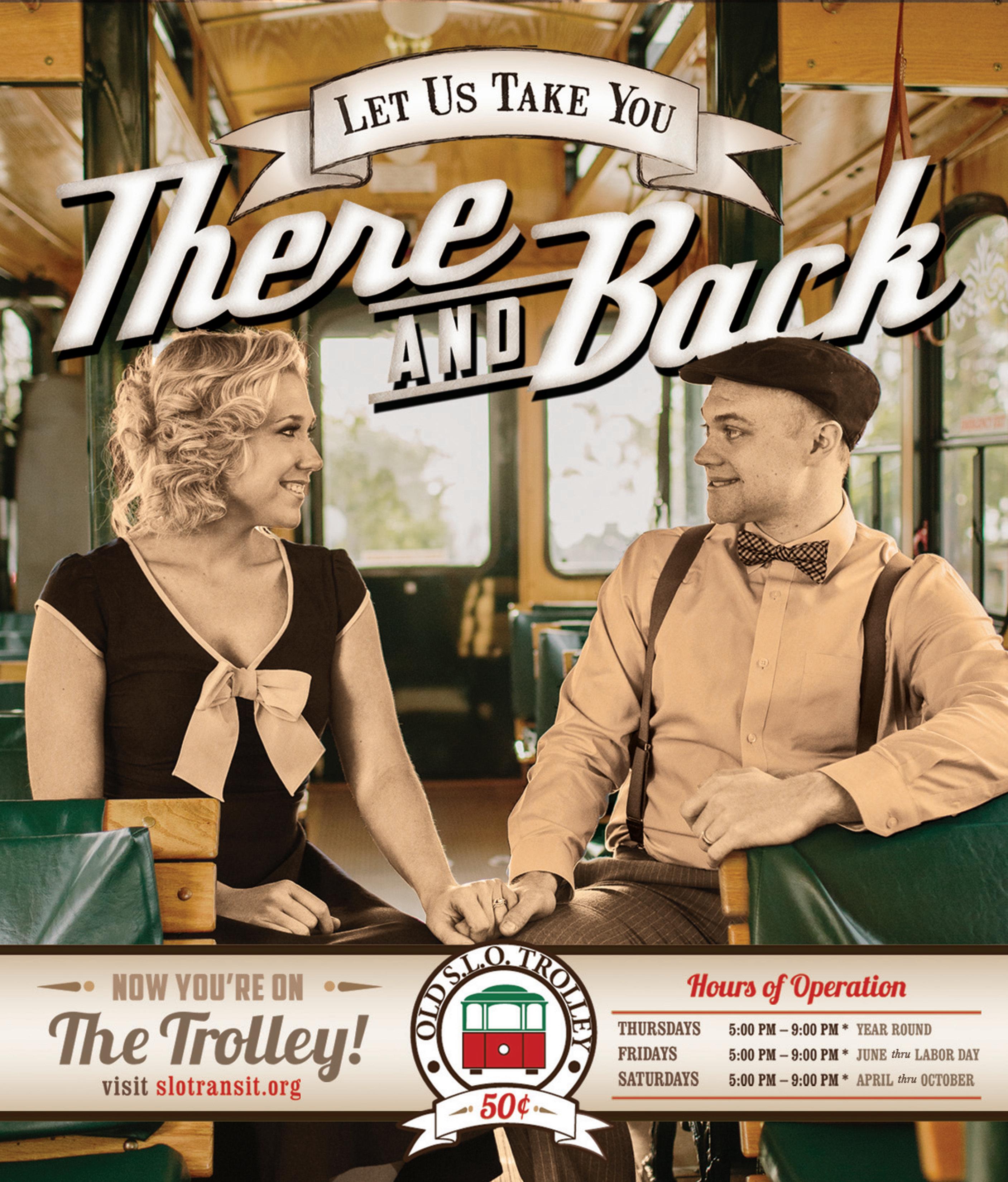

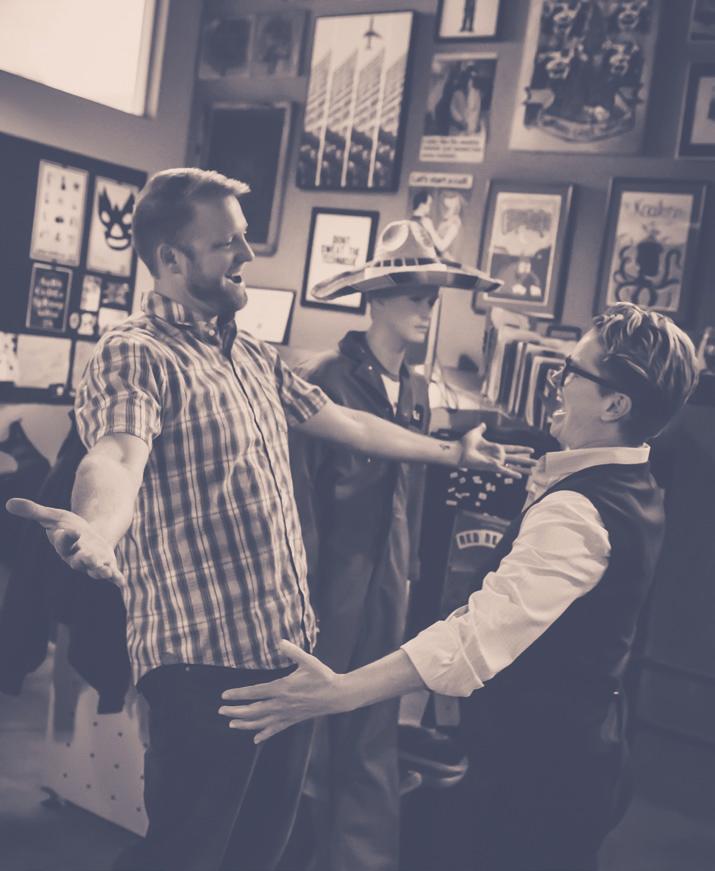
I’ve had some exposure to the high tech world because my dad was a programmer when I was growing up. He worked really hard, sometimes writing code until 3 o’clock in the morning. My immediate impression of Kristen’s office was, “Wow, this place has really good energy.” It was a little drop of Silicon Valley, only SLO style. You could tell that people were working really, really hard. But they were all so happy.


I’m super into music, and always like to ask what people are listening to. Kristen told me that she gets pumped up and can really crank out a ton of work when she listens to “All I Do is Win” by DJ Khaled. It’s a playful sort of over the top rap song that features Ludacris, T-Pain, and Snoop Dogg. I downloaded the song and listened to it the whole time I was editing her photos; and now it’s on my playlist for when I work out.
 BY VANESSA PLAKIAS
BY VANESSA PLAKIAS
They had this little bottle, a canister called “mood shifter,” and when something goes wrong and something “breaks”— programmers refer to it as a “break” in the code—and frustration sets in, they start spraying the mood shifter around and things go smoother. The team was goofing around with the spray for a while, but it was amazing how quickly they would sit back down to their computers and get right back to work. It was like a switch flipped and it was, “Okay, it’s back to work.”
Kristen is a big hugger, and so am I, and so were many of the people there. When we were done with the shoot we all got to hug it out. By the time I left my brain was just exploding with all of the interesting things to see around the office, and my energy was off the charts from all the good vibes and inspiration. What an awesome bunch of people, and what an amazing place to work—extremely creative, but also a super professional problem solving environment.





Generally I read MEET YOUR NEIGHBOR in SLO LIFE Magazine with a large grain of salt. However, I know Wally!! (We called him “Walter” when he worked for Art’s and my spouse got back to cycling after we raised our kids.) It was a real pleasure to read his history and marvel at his drive and intelligence. It also is an incredible response to those who accuse immigrants of bilking the system. He’s a county treasure.
Another County treasure is Terry Elfrink, featured in EXIT
I want to convey my very best wishes to he and Vicki for a great life in Templeton and our sincere thanks for his efforts in the classroom. He made real impact in our lives when he encouraged one of our sons to join ‘Leadership’. I mostly just wanted to wish them well.
2016

My husband and I love the MEET YOUR NEIGHBOR article about Wally! Should be required reading for all middle school kids!
Keep up the great articles, we enjoy them very much!
- PATRICIA MILLER - JEFF EIDELMANHowever, this article should be blown up, circled in red and read by ANYONE involved in public relations at the university, including the President, especially the President. These are the kind of people Poly needs on their side. The fact that the university can’t be forthcoming enough, to its immediate neighbors, about its plans for expansion and housing of students will only boomerang and build a bigger wall between town and gown.
- THERESA PERRYIsn’t this a pretty picture? So peaceful. It’s my greatgrandson feeding horses in a field off Slack Street. This is the same field where President Armstrong is considering building a 420-unit employee housing complex. We, up here on Slack and Grand, not only are putting up with building a 1,475-bed dormitory with construction trucks going up and down Grand all day, but now a 420-unit complex! I was born and raised in San Luis, 5th generation, and it is breaking my heart to see what is being done to this neighborhood. It’s just not right!!
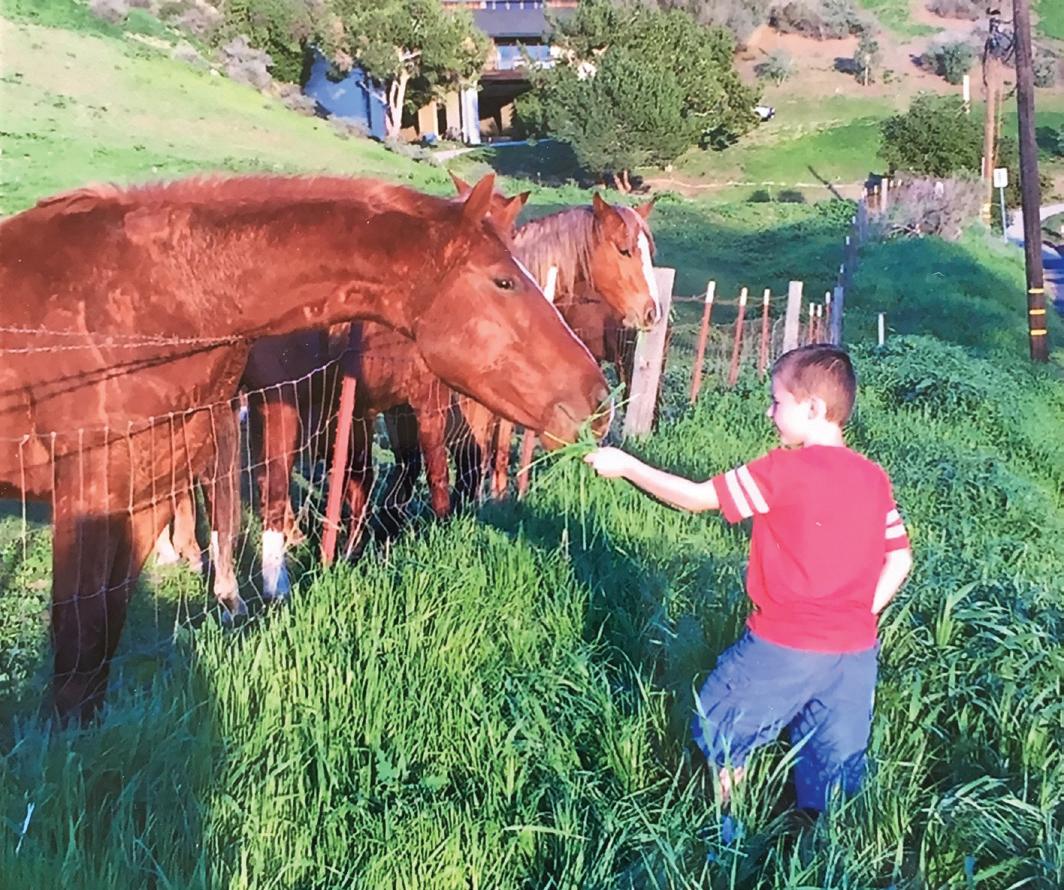
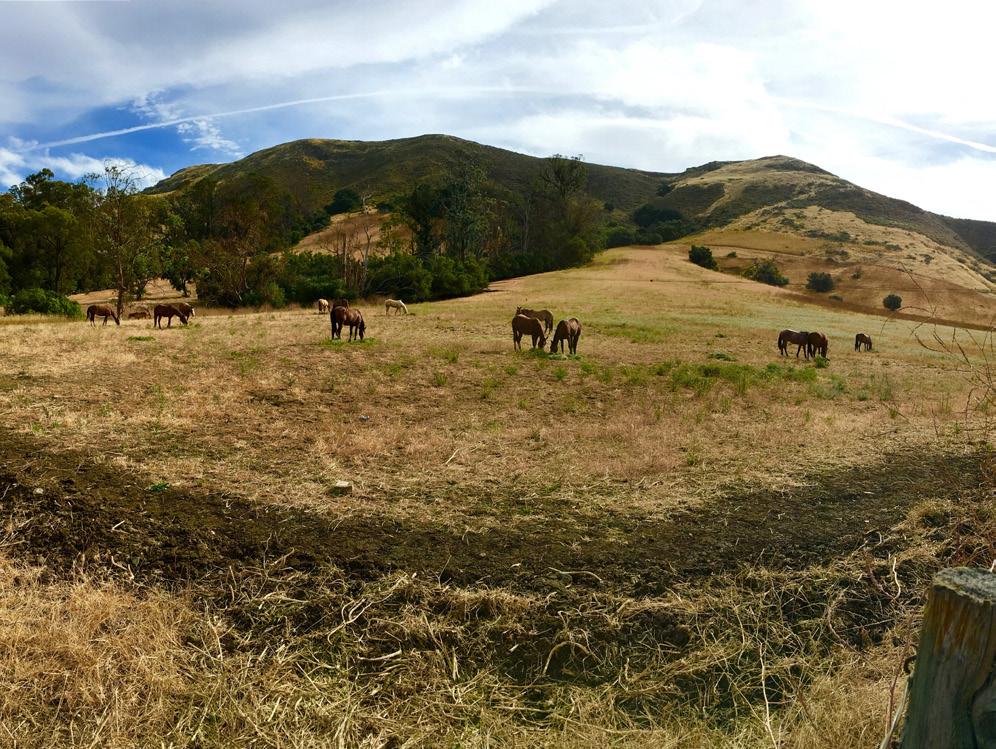 - JOAN SALES
- JOAN SALES
Thank you for the poignant EXIT INTERVIEW. You captured not only
Terry and Vicki’s feelings of loss, but also those of the few remaining “Flatlands” permanent residents. My children babysat for Terry’s children back in the day.
Buying in SLO has never been easy. In the 70’s, my ex-husband, then a recent Cal Poly graduate, and I had to scrimp and save to buy our home on Slack Street and to make the high monthly payments. The house was smaller and older than we would have liked but it was in SLO, the town we chose to raise our two children.
Monterey Flatlands, when we moved into the neighborhood, housed teachers, nurses, plumbers, electricians, city employees, Cal Poly staff and newly hired professors. Monterey Heights and neighboring Alta Vista housed doctors, lawyers, Cal Poly department heads and full professors. We were “Workforce Housing” long before the term was coined.
For many recent years, we tried to get the city to take notice of our plight. However, they have refused to acknowledge or act on the fact that former “Workforce Housing” is being converted to Poly mini-dorms. Our homes now accommodate the ever-expanding student population that Poly has neglected to provide on-campus for over 25 years.
I understand the economic advantages for city businesses to have an ever-increasing student population with the attendant visiting parents. I understand the fiscal advantages for the city to fill its coffers with exorbitant development fees for new construction. However, the city cry for workforce housing is hypocritical when one realizes that the city has ignored the transformation of Flatlands workforce housing into “Isla Vista North.” Did they ignore us because defending us would not have produced a need for new workforce housing and new development income?
After 46 years in SLO, I will soon be leaving also. However, unlike Terry, I don’t see how a family or Poly faculty or staff could afford my well loved, continually improved, now 4-bedroom, 4-bath home. I will keep it, but rent it as yet another minidorm. If you can’t beat them, join them before your soul dies along with your neighborhood.
The well-written article, EXIT INTERVIEW, by Tom Franciskovich in the June/July issue of SLO LIFE, about Terry and Vicki Elfrink’s decision to leave their Monterey Heights home after almost 40 years, was heartbreaking. The Elfrinks, and what they have done with their home over the decades, are the epitome of what, until recently, has made San Luis Obispo so special. In that charming and loving home, they raised four of their own children, in addition to four foster children. They steadily improved the house and surrounding yard over the years. As you view it, it shouts out to you about how warm, comforting and inviting a family home should be.
Their decision to move away from San Luis Obispo underscores the thoughtless and uncaring actions of Cal Poly President Jeff Armstrong and his disastrous planner/developer administration. They are destroying the character of what were good family neighborhoods near Cal Poly. By steadily increasing enrollment, and not housing enough students deeper inside their very large campus, they are changing the core nature of the entire city. Under Armstrong’s “leadership,” the guiding principle has become “Cal Poly (and me) first, everything else dead last.”
By planting a monstrous, intrusive dormitory complex as close as possible to the city, without any buffer zone, they are crowding what were previously a good elementary school and family neighborhoods. In addition, they have now proposed building 420 condos, apartments and rentals on a gorgeous iconic hillside that is a rare treasure and a work of natural art. The “faculty housing” project planned along Grand and Slack will destroy both the Monterey Heights neighborhood, and the special, charming pasture and hillside across from the main entrance to Cal Poly. To all who enter the campus, that open hillside pasture makes a strong statement about what Cal Poly students should really value and protect. To replace it with condos and urban sprawl is criminal.
Given the ongoing, devastating developments of the last few years, I find myself agreeing with Terry and Vicki. Despite raising my own family and having lived here for over 45 years, and having treasured life in (the old) San Luis Obispo, maybe it’s time to face reality and move away. We are becoming Isla Vista.
I read EXIT INTERVIEW, the Terry Elfrink story, with sadness—another long time resident reluctantly leaving his home because of Cal Poly, and joining countless others in Templeton, Atascadero or Arroyo Grande. It does not have to be this way. With a little respect for others and a little effort, Cal Poly could thrive without biting the hand that feeds it. So, why are things going so wrong?
As of 2014, SLO had a resident population of 45,119 and a student population of 27,794 (including Cuesta). This means 38% students, or a ratio of 1 student for 1.6 residents. And the percentage keeps increasing as Cal Poly grows and imposes their resulting housing burden on the city. If you speak to administrators, they tell you it’s not their fault, it’s the fault of the trustees. But the trustees tell you they follow the orders of the legislators. And the legislators... what do the legislators do? Nothing, because they don’t live here, so why should they bother?
Our local politicians live here, so we think they might be more interested in saving the character of the city. However, last year, when several neighborhood associations signed a petition asking to cap the Cal Poly ratio at 1 student for 2.5 residents, the City Council could not bring itself to support the petition.
Finally, perhaps more than Cal Poly administrators, trustees, and politicians, the most serious problem is GREED. If so many people did not turn their former homes or their investments into overpriced student rentals, there would not be any housing available for more students, and Cal Poly would have to build dorms and limit their enrollment.
The best way to stop all this nonsense would be to sue the CSU Trustees, but San Luis Obispo is not Santa Cruz, therefore I suggest other options:
-Vote for change at the next election: throw out all those who have remained blind and deaf to these problems. Do it again and again until we finally have a city council willing to take a tough position with Cal Poly administrators.
-Write to the Trustees and to the legislators, and ask your friends to do it too, and show them the problems created by a student population too large for our small city. Ask them to cap the number of students at Cal Poly.
-And if you decide to leave SLO, please don’t turn your home into a student rental, but sell it to a family.
Regarding Tom Franciskovich’s article EXIT INTERVIEW on the Elfrinks leaving San Luis, I understand completely, because it is the same for permanent residents of Avila. Since the “dig,” sale of properties formerly single family homes has degenerated into vacation rentals with high price tags. This means that what used to be a vibrant coastal community of families has now become a town full of weekend rentals in condos which have replaced the houses or houses built as vacation rentals. These folks who come have no emotional investment in Avila.
A person just needs to come to Avila on a weekend to see what has happened. And this is before any of the large projects such as the Tank Farm or Harbor Terrace have been considered by the Planning Department or the Board of Supervisors.
There are a few of us who are hanging on, but it hurts my heart to see Avila become what others are fleeing from, at least for a weekend. Paradise is almost gone.
- Anne Brownby doing origami on Darth Vader’s helmet—but his song, “Humble and Kind,” in my opinion, ought to become our new national anthem. Since that time, I’ve been humming the tune under my breath pretty much constantly; but it occurred to me at some point that I did not know all of the words. And, candidly, I have a pretty spotty track record when it comes to discerning lyrics from songs. In just one just one of my many examples, when Bon Jovi’s “Livin’ on a Prayer” was dominating the radio waves in 1986, I, too, was singing along with Mr. Jovi, but with my own set of words: “Oh, oh! We’re living on bread!” Although I was just 12 years old at the time, and had no problem turning “bread” into a two syllable word, I’ve never gotten over it when my best buddy, after laughing so hard he exhaled Orange Crush through his nose, explained, “Dude, it’s ‘livin’ on a prayer,’ not ‘living on bread!’”
To this day, have not regained any of my former lyrical confidence, so decided to search the song online. Hold the door, say please, say thank you / Don’t steal, don’t cheat, don’t lie / I know you got mountains to climb but Always stay humble and kind Further down, I saw a link that read, “Humble and Kind –official video.” Although I hadn’t watched music video since the Reagan Administration, decided to click “play.” What happened next, I cannot fully comprehend. I am not one of those guys who normally wears his heart on his sleeve, and it takes quite a lot to elicit any demonstrable emotion, but as sat there watching the little four-minute film, broke down and cried like a baby. It completely caught me by surprise, and I’m still not sure where it came from—a beautiful song, with a beautiful message, played against beautiful imagery—it was all too much. Or, maybe I just felt regret for all the times that I was a jerk over the years, I don’t know. It was uncharted territory for me when the song came to an end and saw my reflection in the blank screen staring back at me. With tears still rolling down my cheeks, I reflexively sprung up to close my office door. After collecting myself following a few minutes of foggy disorientation and feeling, frankly, a surge of embarrassment that was on par with my livin’ on bread incident—a grown man is not supposed to be bawling his eyes out watching MTV, especially in broad daylight, and double especially at work—I went back to read more of the lyrics. Don’t take for granted the love this life gives you When you get
SLO County: The Next Mosier, Oregon Waiting to Happen?
SLO County cannot legally require Phillips 66 to make oil trains safer because only the federal government has authority over rail traffic. Investigators in Mosier, Oregon determined a flaw in the Union Pacific tracks caused the recent oil train derailment, explosion and fire. Our County’s Planning Commission and Board of Supervisors do, however, have authority over land use decisions and permits, and can—and must—reject the permit application of Phillips 66 for an oil train rail spur. That’s why they should reject it: because our county cannot require any conditions or enforce any measures for emergency response, routing, tracks or operations.
Do not let SLO County be the next Mosier, Oregon.
- GINA WHITAKEROil Trains Are Bad For Central Coast. I moved to the California Central Coast two years ago because of the excellent quality of life it offers, including a beautiful coastline and clean, natural open spaces. Allowing mile-long oil trains to transport tar sands crude oil through the Central Coast would degrade our quality of life. Oil trains would add air pollution from diesel engine exhaust and chemical off-gassing from stored oil. Oil trains would bring a black cloud of fear constantly hanging over our heads from the very real safety risk of a train derailment, explosion, and fire. This black cloud will negatively affect tourism, the local economy, and our peace of mind.
California has recently passed laws to speed up the transition towards a clean, renewable energy economy. PG&E has done the same by deciding to close the Diablo Canyon Nuclear Power Plant and invest in more renewable energy production. The proposed Phillip 66 Rail Spur project contradicts these transition efforts.
We all need to be moving in the same direction towards a clean, renewable energy future. Therefore, I urge all involved San Luis Obispo County government officials to make the right decision by rejecting the proposed Phillip 66 Rail Spur project.
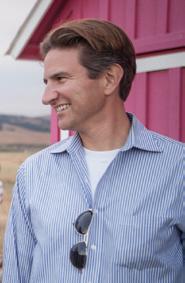 - DEAN ARRIGHI
- DEAN ARRIGHI
Guns and oil seem to be two modern unmanageable problems. No matter the data on how many people kill themselves or are killed we can’t bring ourselves to control guns.
Also no matter the facts on how much climate change is caused by carbon burning, we can’t give it up.
Just wanted to tell you how much I appreciated the Publisher Message by Tom Franciskovich in the last issue titled HUMBLE AND KIND. I had a similar reaction to the song and was re-inspired when I read the letter. Thank you.
 - LIZ MOODY
- LIZ MOODY
In the Q&A of the last issue with Heather Muran, Executive Director of the San Luis Obispo Wine Country, we misquoted her as saying, “silt” rather than “salt” when describing local soil types. Also, the total membership of her group now stands at thirty.
Oil to be used must be moved. Therefore we are burdened by the threat caused by oil trains. At least three oil trains that are one mile long come through SLO each day. Any one of these could derail causing death and havoc.
The Board of Supervisors must take action to stop this oil spur in any way it can. Write to them. Call them. Insist they do something!
It might be helpful to remind the Supervisors of what legal liability the County might have if there is an accident and they have done nothing.
Write your letter now. Our voices matter.
- JAMES M. & DIANE N. DUENOWHey, SLO LIFE readers: Send us your photos the next time you’re relaxing in town or traveling far and away with your copy of the magazine. Email us at info@slolifemagazine.com


 OAHU,
Aloha SLO LIFE Magazine!
- Alyssa Mazzella, Jen Dawson, Isabella Dawson, Katie Shreeves, Anna Shreeves, Pam Shreeves
OAHU,
Aloha SLO LIFE Magazine!
- Alyssa Mazzella, Jen Dawson, Isabella Dawson, Katie Shreeves, Anna Shreeves, Pam Shreeves

I just returned from a three week trip to Hungary and Czech Republic. My husband and I went to Budapest for four days and took a train to Prague then after four days rented a car and traveled around the Czech Republic area.




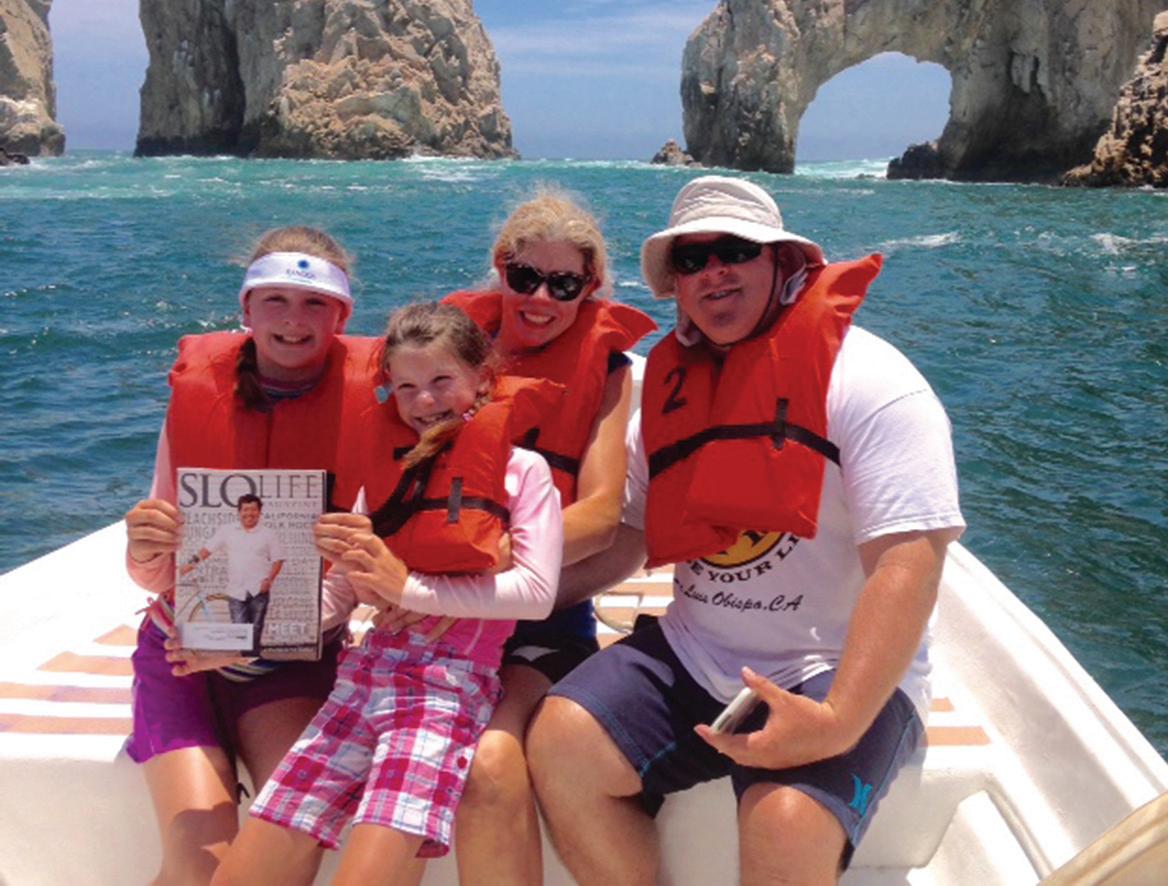
The Metro is great, but the best way to get around Paris is by bike... 23,000 bikes at 1,800 stations and they’re practically free!— Louis Zimmerman
Keepin’ up with SLO Life is easier than keeping up with a 3 year old!


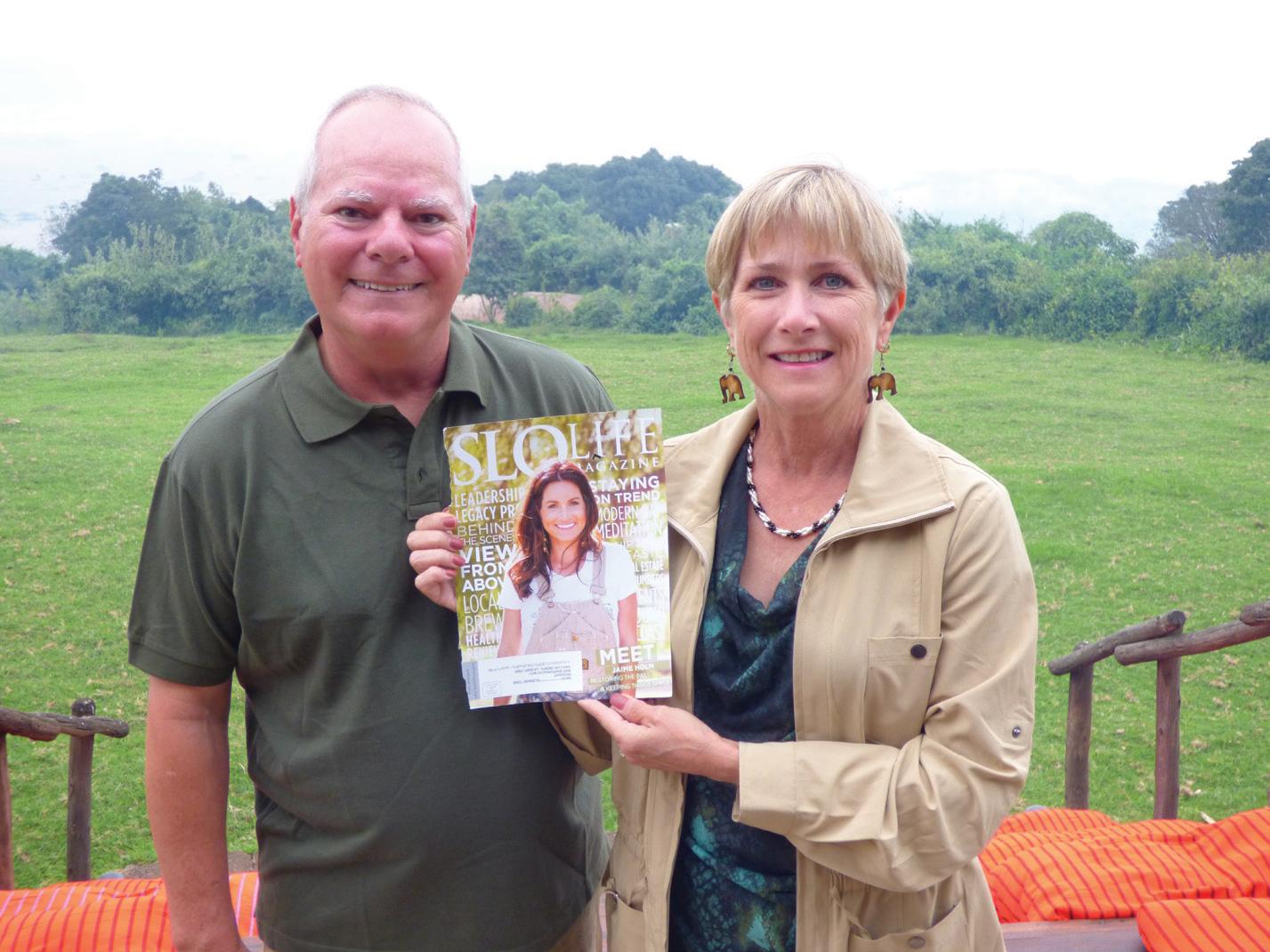 We traveled to Ngorongoro Crater in Tanzania with SLO LIFE Magazine and the lovely San Simeon Travel group. Also, during the same trip, we went on a balloon ride over the Masai Mara game-filled plains in Kenya.
- Jill & Jerry DeMers
- Alex and Amber Barrett
LAKE TAHOE
We traveled to Ngorongoro Crater in Tanzania with SLO LIFE Magazine and the lovely San Simeon Travel group. Also, during the same trip, we went on a balloon ride over the Masai Mara game-filled plains in Kenya.
- Jill & Jerry DeMers
- Alex and Amber Barrett
LAKE TAHOE


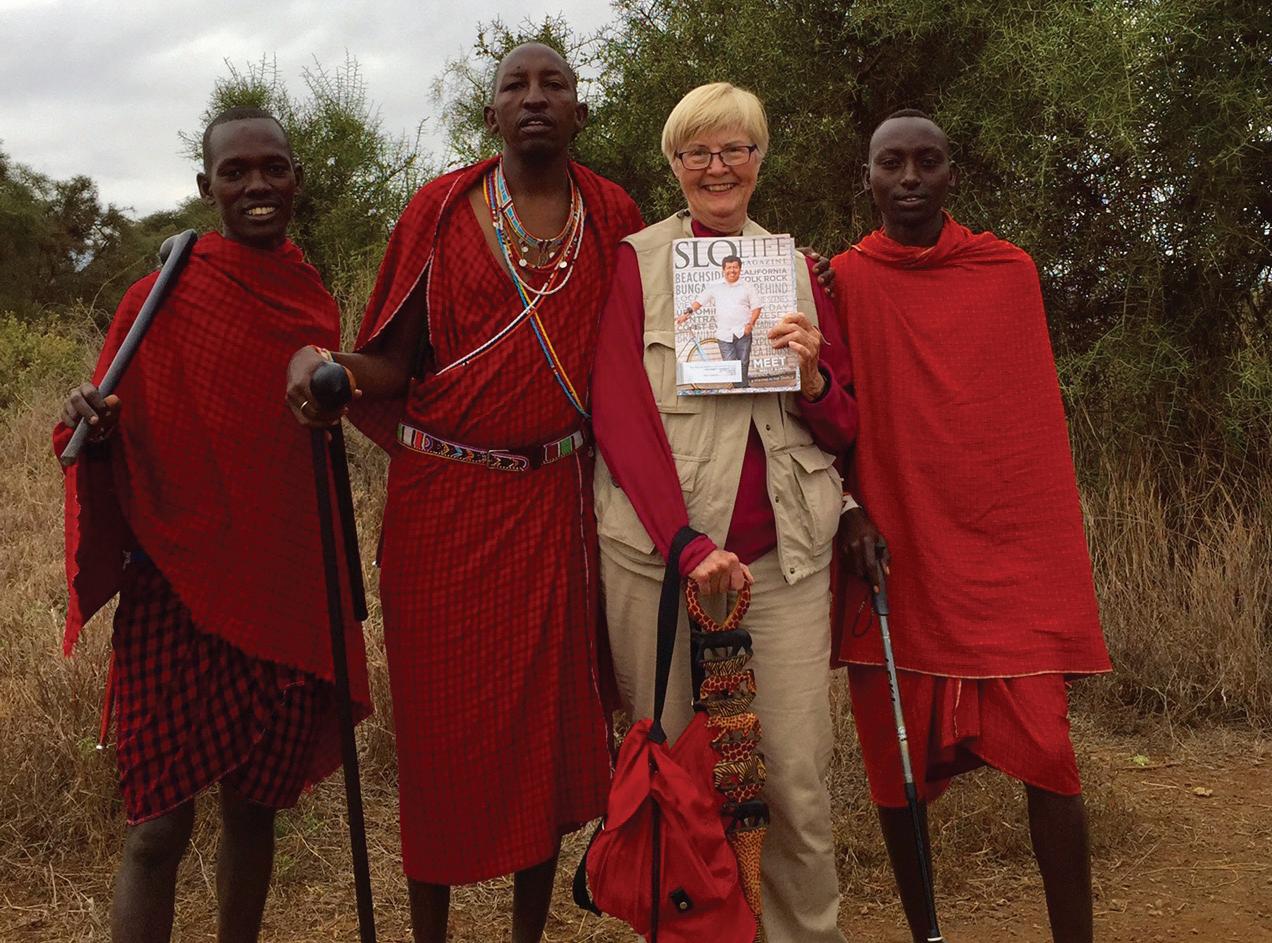






The seat on the County Board of Supervisors currently held by Frank Mecham, who is often considered the swing vote settling matters between the conservative bloc made up of Debbie Arnold and Lynn Compton, and the liberal contingency of Adam Hill and Bruce Gibson, remained up for grabs following the primary election when North County voters were unable to give a 50% majority to either John Peschong, a Republican political consultant, or Paso Robles Mayor Steve Martin. The winner will be determined in the general election on November 8th. Peschong, who received 45.6% of the vote, is considered the most conservative of the candidates, while Martin, who received 35.2%, is viewed as a moderate.
PG&E announced that it would shut down its Diablo Canyon nuclear power plant in 2025. The surprise move is expected to result in the loss of 3,286 jobs, which will likely create an annual $1 billion economic shortfall countywide. Among the hardest hit will be the San Luis Coastal Unified School District, which receives $10 million in tax revenues from the plant each year. The decision to close the aging facility, according to PG&E, was driven in part by a California requirement that 50% of its power be generated by renewal sources.

Reports surfaced that Paso Robles-based Justin Vineyards & Winery had received a stop-work order from the county for permit violations concerning grading and tree removal. The Wonderful Co., which owns the winery, claimed ignorance of the fact that hundreds of oak trees had been removed, and quickly vowed to donate the property to a local land conservancy. A month later, further investigation revealed that Justin Vineyards & Winery had clear-cut 17,000 trees, including 15,000 oaks, in 2012. In its wake, the board of supervisors passed by a 4-1 vote, with Debbie Arnold opposing, a 45-day emergency ordinance protecting native trees. [Learn more about this issue on page 68]

San Luis Obispo County earned the dubious distinction as the sixth least affordable place to live in the United States, according to a survey conducted by RealtyTrac. The study, which included 417 counties, measured the percentage of the average local monthly wages required to make the monthly payment on a median-priced home with a 3% down payment and a 30-year mortgage. Although more affordable than Brooklyn, New York, San Francisco, Marin County, Santa Cruz, and Maui, locally it requires 90.4% of the average salary to pay the mortgage. With the loss of Diablo Canyon, and its jobs that average $157,000 annually, many expect that this ratio will continue to increase.
The City of San Luis Obispo’s Cultural Heritage Committee approved a controversial 33-unit apartment complex at 71 Palomar Avenue ruling that moving the Sandford House, originally built in 1895, and converting it into a leasing office would not hinder its historical character. The project proposed by El Segundo-based developer and attorney, Loren Riehl, is vehemently opposed by the neighbors, who point to the fact that 49 mature trees would be sacrificed, as well as opening the road to through traffic at the end of nearby Luneta Drive, which they claim will lead to a 500% increase in traffic. The 1.3-acre park-like property also serves as a buffer between the quiet residential neighborhood and the Valencia apartment complex, primarily occupied by Cal Poly students, on Ramona Avenue.
The County Planning Department mailed a letter to Phillips 66 in which it gave the company an August 15th deadline to pay $240,000 in fees, as well as provide additional information about its controversial rail spur project, which would connect the Central Coast rail lines to its refinery in Nipomo. The county also notified Phillips 66 that its discovery that the company had been transporting oil to the refinery by truck, rather than by its pipeline as has been the case in the past, was not in compliance with their permit. Opponents point to the June 3rd derailment near the Oregon-Washington border where overturned rail cars dumped 42,000 gallons of crude oil that sparked a massive fire as more evidence of the proposal’s inherent dangers. As of this writing, Phillps 66 has yet to respond to the county’s letter.

The worldwide phenomenon known as Pokémon Go, a smart phone app, captures the imagination of millions, including thousands here on the Central Coast where many locals could be seen staring at their screens as they engaged in a type of virtual reality scavenger hunt. Amid reports of people injuring themselves by distractedly walking into street signs, some property owners expressed frustration that rare Pokémon characters had taken up residence in front of their homes leading to hoards of unwelcomed visiting players.

Jason Robert Porter, 44, of Paso Robles is arrested again just three weeks after he is apprehended after a woman discovers him taking lewd photographs of her juvenile daughter. Porter, who had been free on bail, was incarcerated again on 31 charges after the Paso Robles Police Department confiscated computers and cameras at his home, where he lives with his parents, Lyle and Margaret Porter, and found evidence of him molesting at least nine different girls. In her 2012 book, “Divorcing a Narcissist – One Mom’s Battle,” San Luis Obispo resident Tina Swithin documents her struggles dating back to 2003 to prevent the local family court from allowing her children near Porter, who was her former brother-in-law. The bail set for Porter is $7 million and is among the highest ever for San Luis Obispo County.

As shark sightings become more commonplace off the shores of the Central Coast, partly due to drones flying overhead, several great whites are spotted near the Pismo Pier. It turns out that Joshua Carr, a 25-year-old Oceano fisherman, had caught and posed for photos with one of them in June and, after being identified, Carr turned himself in to authorities. While it is not illegal to catch a great white shark, failure to promptly release the animal back to the water can result in a misdemeanor requiring up to six months of jail time and a $1,000 fine.

The board of supervisors, in a 3-2 vote, with Debbie Arnold and Lynn Compton against, elected to put a measure on the November 8th ballot that, if approved by two-thirds of county voters, would increase the local sales tax by a half-cent in unincorporated areas. The additional funds—expected to generate $25 million annually—would go toward transportation related projects and would make the county what is known as “selfhelp” because it would fund itself rather than relying on state and federal funds. Currently, twenty of California’s counties are considered “self-help,” as others ponder a similar move during a time when additional funding for highways, bike paths, and trails have become increasingly scarce.
The sixth and final supermoon of 2015, which appeared last fall, was set to rise around the same time that a spectacularly perfect day on the Central Coast was to go to sleep. And Steve Corey had a hunch, so he called up his friend Robert DeGraff. For Corey, the math was easy, as he had spent his career as a nuclear engineer at the San Onofre plant, and it was just a matter of timing really. The way he saw it, the moon would be rising at almost exactly the same time the sun was setting. And, from the vantage point of the Pismo Preserve, the two ought to line up at just the right moment for an unforgettable photograph. DeGraff, an attorney and board trustee for the Land Conservancy, was in, and the two bushwhacked their way up the virgin hillside late in the afternoon to set up for the shot.

There was no question about where to place the camera, as earlier in the year, a photo taken from the same perspective played a roll in galvanizing the local movement to raise the funds required to preserve the pristine coastal land. As the digital version of Corey’s image was shared, liked, and commented on, awareness grew for the $12 million purchase of the 900-acre property, and many of those moved by the imagery and its promise of a new 11-mile trail system opened their wallets to contribute. Today, after years of dogged effort by a coalition of conservation groups, policymakers, and local volunteers—more than 230 locals have contributed approximately 6,500 hours to the trail building effort alone—the Pismo Preserve is on pace to officially open to the public sometime this fall.
As the two friends killed time talking about current events, the sun started to touch down on the Pacific. Corey then wheeled around and could see the moon poking up over the hillside. It is around this point in the story where the events become jumbled, but somewhere along the line, a full grown buck appeared. “He looked at us; he was curious about what we were doing. But, you could tell that he had not seen people around there before,” Corey does his best to recreate the timeline. The buck, having seen enough, bounds away through the tall grass. Returning his attention to the coast live oak, Corey realizes that the setting sun behind him and the supermoon in front of him were illuminating the elderly tree in a way that he could not have imagined. The shot you see here is a composite. The moon has been made slightly larger than it was that night by photographing it separately with a zoom lens, then combining it with the original.
When Corey retired from the nuclear plant in 1996, his employer presented him with a gift—a full-fledged single lens reflex film-based camera. With some time on his hands, Corey started fiddling around with it, and one thing led to another. Before long he found himself in Northern Arizona’s Antelope Canyon seeking an epic landscape shot, but a windstorm foiled the venture and ruined his camera. Now, with his trusty Nikon ND 7000 never further than arm’s length away, Corey’s passion has found many subjects around the Central Coast. And, since he and his wife moved to San Luis Obispo in 2006, photography has become a way of life.
SLO LIFE
Last year, JOHN SPATAFORE, a San Luis Obispo-based attorney, was named Citizen of the Year by the Chamber of Commerce. Following many years of community service, which have included his role as a founding member of the group that brought to life the Damon-Garcia Sports Complex, as well as a co-founder of the Foundation for the Performing Arts Center, he has been leading the charge for the construction of 40 Prado, a multimillion dollar homeless services and overnight facility. We sat down to talk one recent afternoon...

Tell us about yourself, John. I was born and raised in a small town called Price in Eastern Utah. My grandparents immigrated there from Italy through Ellis Island. They were both from the same village in Calabria. They found work there in the coal mines. My dad went to school up to the third grade, but he and my mother wanted to make sure we all went to college. There were four of us, three boys and a girl. I followed my brother to the University of San Francisco. I had visited him when he was a student there and was twelve years old at the time. I will never forget the first time we drove over the Bay Bridge heading into the city. I said to myself, “This is probably the best place in the world!” I met my wife my freshman year there, and she was from here, so we moved back to San Luis Obispo. We’ve been married for 43 years and our relationship, my wife and I, has been incredible. We have two grown daughters. Both of our daughters have lived in San Francisco, but one of them just moved back to San Luis Obispo with her husband and her two kids. She’s going to finish her law school here and then she is going to work with me in my law office.
Looking back, can you point to something that set you on your current path? I remember when I was five or six years old, my dad had a restaurant and I was there helping him one day behind the counter and an AfricanAmerican man came in and pulled my father aside to talk with him. Then he left after a minute or two and came back in with his wife and their two young children. After they ate and left I asked, “Who was that?” He said, “They were from the South. They are African-American and they asked if it was okay if they ate here.” I said, “Why would they have to ask?” And, my dad explained that there were people in this country who have difficulty being treated equally, and sometimes other people won’t let them eat in their restaurants. That got me started in thinking about differences and about how some people are treated, mistreated, or poorly treated.
How can you make a difference with this problem?
In the 80’s or 90’s here, we started a program where we would take youth from South Central L.A. and bring them to San Luis Obispo where they would spend two weeks with local families. We would take them over to tour Cal Poly, and we’d take them up to Big Sur. These were 8, 9, 10, 13, 14-year-old African-American kids. I’ll never forget taking a group down to Jade Cove Beach in Big Sur and two of them, one boy and one girl, started crying. I asked them what was wrong and they said, “I’ve never felt this before—I’ve never seen the ocean before.” And they lived twelve miles from ocean. So, it started me thinking again about the real disparity in the country. From there I was elected to the San Luis Coastal school board and began seeing the ramifications of homelessness

for the students. San Luis Coastal, which represents a pretty affluent community, 10% of the kids, K through 12, were considered homeless. I saw what happened with these students when there was no structure at home, no support, no consistency. They did very poorly in school; had a hard time concentrating; got in trouble. And it was clear that they would likely be struggling with this cycle for the rest of their lives.
So this leads us to 40 Prado. How’s it going? stands now, we’re probably going to break ground in October. It’s a $5.2 million project and we’ve raised $4.6 million so far. It will take about a year to build it; it’s a 20,000 square-foot building. The services that will be available there may be the most unique and broad based that have been in any homeless center anywhere. It’s going to be very impactful. The facility will provide medical care, after school tutoring, computer stations, job placement, job training, counseling, and case management. The idea is to have a 24-hour, 7-day a week support center. And people there will not have to walk all over town to get what they need. Currently, the overnight shelter at Maxine Lewis, which has 46 beds, is falling apart. It won’t last for more than a few more years. Plus, there is a group of local churches and a synagogue that provide temporary overnight shelters for the overflow, which numbers somewhere around 40 additional beds. So, all together that’s around 85 beds available in town on any given night. The new facility at 40 Prado will have about 100 beds.
A cynic may say, “If you build it, they will come.” Is there a risk that this new facility may actually increase our local homeless population by attracting more out of town transients? to understand all of the different types of individuals who make up the homeless population. For instance, many people panhandling downtown are not homeless. They have residences and panhandling pays the rent; much of that money goes to alcohol and drug abuse. The people at the new center will have to be sobriety tested. That means there can be no alcohol and drug issues to receive services. The program is set up for someone who wants to return to sustainability—it’s the beginning, the first step. They will be there for a reason; they don’t want to live on the street. It’s really designed to help people get back to a place where they can be more stable. It’s temporary, and set up to serve a vulnerable population. And, it also allows the city—the police and the administration—to say, “We’re a city that provides services to those who are homeless. People who do not choose to receive those services will then be in a different situation.”


I heard that.








No, you didn’t.






Did someone say something?





This month, after years of effort and many thousands of dollars of investment, San Luis Obispo native KRISTEN HAZARD officially launches her highly anticipated software she calls Wildnote. Here is her story…


Okay, Kristen, we like to take it from the top. Tell us where you are from originally. I’m from here. Born in San Luis Obispo, Sierra Vista Hospital. Raised mostly here, but also Atascadero, Grover, Garden Farms, which is in Santa Margarita, that teeny little part of Santa Margarita. My mom was a bit of a gypsy. At some point we were also in Fresno, and we were in Shaver Lake, and then Hawaii, but mostly I grew up here. I went to Allan Hancock because I got a volleyball scholarship
there and really wanted to play Division 1 volleyball, but I injured myself and that went away; so I went to Cal Poly where I majored in mechanical engineering. And then I drove across the country to get out of California because I thought it was too expensive. I did a three-month road trip and then hightailed it right back to California. [laughter] I had run out of money, so I went to the Bay Area to find work.
Where did you land? I got kind of wrapped up in some startup that is referred to as “vaporware.” It’s basically fraudulent, and I got myself caught up in this company. It was during the first dot com boom and these people basically made a bunch of stuff up about their business. And nobody knew about it, and they would get investors but nothing was really happening. It was pretty much a scam. So I kind of got wrapped up in the company, not knowing what was going on. This was in the
late 90’s and I found myself in the middle of this thing. It was all very weird and so I was disillusioned and decided to go to law school. I went to this really tiny, very interesting law school called New College in San Francisco.
Let’s talk about that. It was really cool. I was friends with a Columbian guerilla fighter, and there were all of these interesting international gays there, and also a few shysters, because it wasn’t a very hard law school to get into. It was really interesting and I had been trained as an engineer, so law school was really easy for me because it’s a very similar thinking pattern. Most people come into it from liberal arts and they’re not trained to think that way, and they struggled. So I did that, and then I thought I was going to be a public defender in San Francisco, but I had to wait for my bar exam results, so I took a job with a criminal defense attorney in the meantime. But he only hired me part-time, so I found another job at
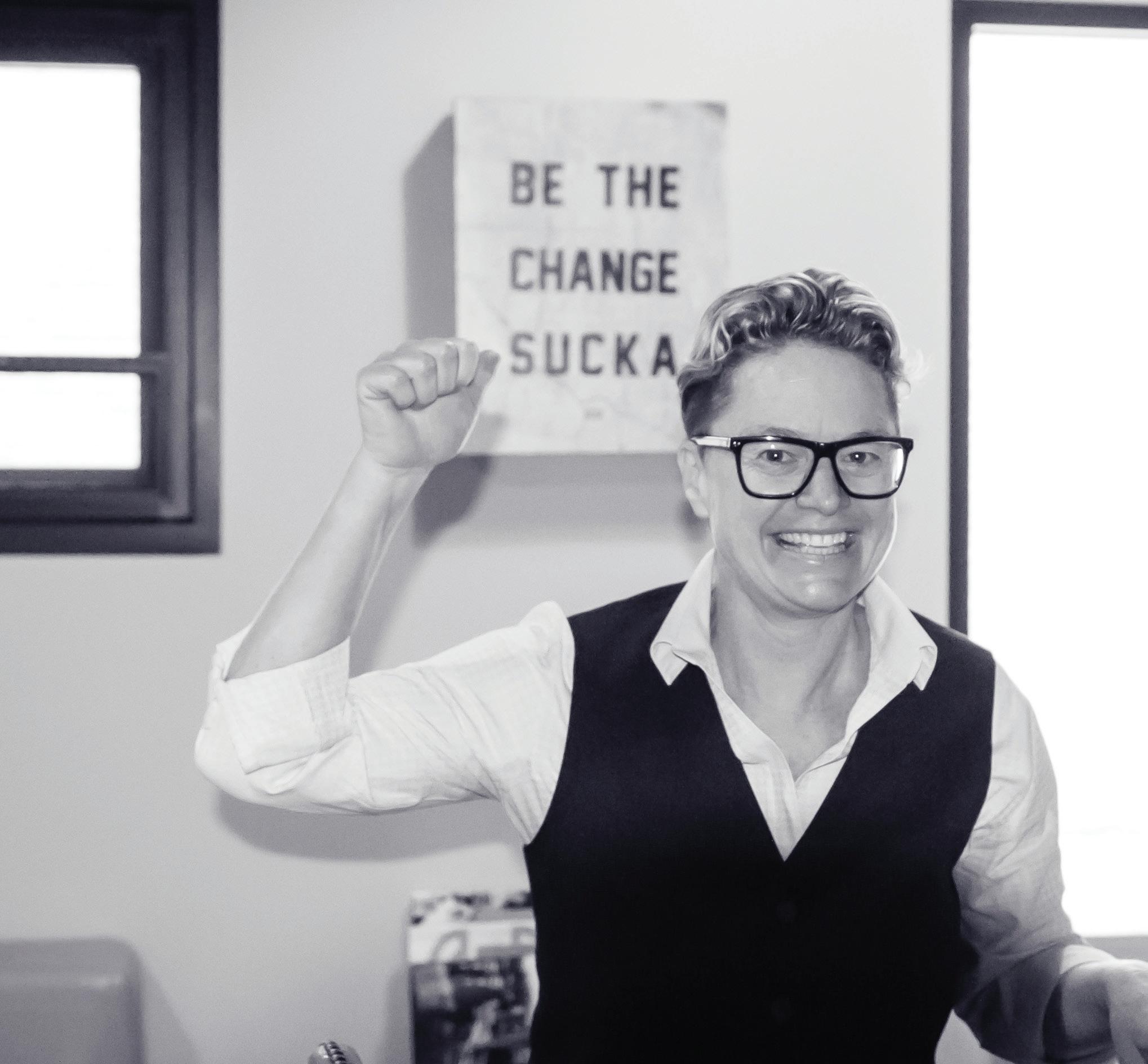
a startup in the Valley. It was 20 hours a week at the law firm, and 20 hours at the startup. The differences between the two were really crazy. So, at the law firm, what was this lefty law firm, I sort of expected this kind of familial thing to happen, like we would all be friendly with each other. It wasn’t like that at all. I was like their factory motion writer. They had no interest in me as a person. And the reason they hired me part-time was that they hired another person part-time, and we were competing for the job. I didn’t know that at the time. I just thought they didn’t have money to pay for a full-time person.
Alright, what came next? So, I’m in that situation, and it just felt really weird. And I’m also at the startup playing ping pong, getting free food, a brand new computer with the cubicle. Everyone’s talking to me. It’s very social. You know what I mean? It was really different, and so I was like, “I love programming!” I realized how much I liked it and thought that I should have studied it instead of going to law school and taking on $50,000 in debt. I said to myself, “I can’t be so irresponsible though.” I said that I would give myself a year, “I’m just going to have fun for a year and then I’m going to go back to lawyering and be a serious person.” It was five years later that I received a letter in the mail from the State Bar Association that said, “If you don’t come pick this thing up, it’s going to expire, and you’re going to lose the fact that you passed the bar, and you’re never going to receive your license.” That’s how quick the time went. And I never thought about law one time.
It was Silicon Valley all the way… Uh, not really. I had been in the Bay Area and I kind of felt a little bit like a trapped animal. There’s just too many people for me; too much pollution. I was living in the city, and the whole thing was really just a little hard for me. I love it down here so much. I love this little life. But, I also love the startup life. I had sort of gotten a taste of it, but I was able to merge the two in 2001 when I moved back. I came down here and the company I was with at the time let me work remotely. So I was managing a team in India, a development team in Bangalore, and a team in L.A., and a team in Sacramento. It was really intense working across time zones, and I spent a lot of days on the phone. It was actually very taxing and kind of a sucky job, but I did it for about five years. I was also programming, but mostly I was managing teams of programmers. I love programming, it’s actually my favorite thing to do. But my personality and my bossy nature always seem to land me in management. I’m an okay coder. I’m not the best. I know really good coders. I’m not one of them, but I’m getting better every day.
Tell us about your first programming experience. Well, the very first time was at Cal Poly. I took a robotics class. So you had to write the code to make the machine function; it was really almost like a manufacturing machine, but that is a robot in a sense. So I had to write the code to make it move around. And, then I got a job for a guy running a T-shirt business and I wrote a FileMaker Pro app for him to track all his stuff, which is just the teeniest bit of coding. After that, I worked for a manufacturing facility and wrote a bunch of macros in their Excel documents to track all their performance and stuff. So I would just kind of find my way into doing little baby bits of coding. But it wasn’t until after law school, when I first got hired to do real coding. After that, I just kept coding, and learning, and managing, and coding.
Had you ever gone out on your own? Yes, I actually built an app. I thought, “Oh, I’m going to build this. I’m going to get rich!” The joke, as it turns out, is “if you build it, they won’t come.” [laughter] No, I did not know that joke. So I built this thing. I put it online and waited for my riches to come in. But nobody showed up. Turns out that there’s this whole other part of building a product. But now I had something for my portfolio, an actual product, and I taught myself how to build it on my own. Then I ended up going to work for another company in the Bay called Dot429 to gain more experience in a programming language called Ruby on Rails and a steady paycheck. That’s another thing—I’m >>




for, for six months or so. They’re like a gay version of LinkedIn, an online community of gay professionals.
Okay, what happened next? I did one more stint with a company in Ventura as their CTO [Chief Technology Officer] then I started SunToucher Software here in town, which is basically a consultancy where I build apps for my clients. A little while later, my girlfriend at the time, Brooke, started an environmental consulting group in San Luis called

Terra Verde and I did her technology stuff. As I was helping her get the business off the ground I was learning about this niche, and through that relationship I ended up building PG&E’s environmental reporting app for them for their Carrizo-Midway solar farm project. I built the software that allowed them to stay within environmental compliance and regulations during construction so they could track and report everything quickly and efficiently and accurately.
When did the light bulb click on? Somewhere along the line Brooke started telling me that what I created is something that people in her industry needed. There wasn’t anything like it out there. But, what I had done was for PG&E and was owned by them; they were my client and it was their intellectual property. I could not open it up to anybody else. So then I thought, “I’m going to build it for everybody, but I’ll start from a fresh code base.” And it has basically become an open field data collection application for environmental compliance. So what I think is interesting about this part of the story is that I bootstrapped the company. I haven’t taken any venture capital money. I first started down this path five years ago and probably three years ago I began building the program, which is now called Wildnote.
Can you give us a quick elevator pitch for your software? Sure, okay, so if you’re a biologist, botanist, archeologist, paleontologist, any kind of an -ologist who goes into the field, it allows you to collect your data on your phone or tablet, sync it to the cloud, and be done, right? Versus, really, seriously they’re still using pen and paper. So, for example, if the county sends out a biologist to a location somewhere he or she can say, “Okay there’s a bunch of oaks over here. There’s maybe a red-legged frog habitat over there. A particular type of raptor in that tree. And some fairy shrimp over there.” Of course, fairy shrimp are rare but you get my gist of it, right? Now you can do it all from your phone or iPad in the field, on site; put some drop pins in the various map locations, add photos, add notes and sync it all to the cloud. One click, you have a report, and you’re done.
How did the initial roll out go? We did a test with Terra Verde. And it failed. I quickly realized that it was not going to work the way we did it. So we had to go back and rethink how we were building it, re-architect it, rebuild it. Then I started going to industry conferences and showed people the early versions of the product to ask them what they thought. Probably 90% of the feedback was, “Does it work offline?” Of course it didn’t, so I had to go back to the drawing board again. I was super bummed. If I had found that out earlier it would have saved probably six months and who knows how many thousands of dollars. But, at the end of the day I’m so excited to build a product company right here in San Luis Obispo and I think we’re going to do good. It’s been—I can’t even believe how much work it’s been—it’s so much more work than I could have ever imagined and we’re in the thick

than I thought it would be.
Let’s talk about money for a minute. Your company is a member of 1% for the Planet. Tell us about that. Okay, so we give 1% of our revenues to the local land conservancy in San Luis Obispo. We’re really into that, and it’s just 1%. I think a lot of us live here because of the open space, and air quality. I really wish all of our businesses would be giving back because it would make a huge impact. And that’s what I like about the land conservancy. They’re doing two things: One is that they’re acquiring open space and holding it in perpetuity as open space. Some of it is available to the public, some is not. And, two, they’re also doing conservation easements with local ranchers and farmers. And that’s a win-win because the ranchers and farmers may not be able to afford those properties anymore because of property taxes. There’s also the concept of wildlife corridors where you want to keep enough connected open space for wild animals to be able to do their thing. Take the Pismo Preserve, for example. How cool is that? That was an amazing thing that they pulled off. So, I’m super into all that. And I feel like that’s kind of my way to contribute back to, a little teeny bit back to, how much I love this county. That, and employment. I mean, I couldn’t believe how happy I was the first time I wrote a check to somebody, you know, for their wages. I was like, “Oh, this feels pretty good.”
Let’s talk about that, because there aren’t a whole lot of women signing paychecks—or earning paychecks for that matter—in the tech world. Yes, that’s right. The numbers are just astounding. I think it is something like women make up only around 10% of the technology sector. I’ve gotten involved with a group in town called CodeSLO that basically offers free training in Javascript, which is just awesome because there is a talent gap in San Luis. There are more companies that need talent and not enough coding talent locally. And, the more tech companies we can have
a little subgroup there that is just for women. It just kind of organically happened. And the reason we don’t let men join is because some women, still to this day, when they get around men they just clam up. It’s just this natural thing that we were taught, some of us were taught, and so we try to keep it an environment where women will be truly themselves and ask questions. Because when you’re learning this stuff, if you feel shy about being dumb, you’re not going to get anywhere. You’re stuck, basically. And that’s what we did. We just created a space where women who want to break into tech can come and I’ll help them. I’m super into it.
How do you see the group making a difference? Because, I think, for example, if you’re a single mom, if you have enough, just a little bit, maybe a year’s worth of training, you can make a great living and provide for your family; if not with a local company then with another one out of the area working here remotely. I just think there’s a way to funnel people into these information technology jobs. And, you don’t have to be programmer. You can get into product or project management, or user support. There are all these different things that, if you have a little bit of a technical brain, you can get into. When you start to think about all the jobs that are going to be vulnerable to computers and robotics in the future, following an information technology career is a pretty safe bet for people. So, we get together and we just try to help women break into tech.
What is the number one advice you give to women in the program? Build something. And then build something else. And then, as you build, you’ll see, “Am I really into this or not?” Right? And, “Is this fun?” Because you’re going to just hit a bunch of hurdles. But, “Is it fun to figure those out?” And then you’ll start meeting people to help you and then you get connected, basically. So that’s my advice—just start building. Don’t talk about it. Just pick something you like and do it.
>>









One last thing before we let you go. As we’ve been talking, we couldn’t help but notice the tattoo on your forearm. Is there a story behind it? Yeah. Okay, so this is a raven. And, it’s like a totem pole style design. So I did a silent retreat and I really was struck by how active my mind was. No one is talking. I was around all these people, we were all there together, and we would all eat together, but no one was talking. And I would notice that I would see a stranger in front of me, just like I see you now. And I’d have this whole story about you worked out in my head, all of these preconceived notions. But I’m not getting
any feedback from you because there is no talking, only total silence. Then I began to realize, “Oh, my God, I think that when I’m getting feedback from people I’m using it to perpetuate the story I’ve already made up about them.” It was such a profound revelation for me to realize that my mind was playing tricks on me—our minds play tricks on all of us—and to not always believe what it was saying. I know that probably sounds a little weird, but since the raven is known as a trickster, it is my constant reminder to try to stay away from that as much as possible—and to be open.

Proudly serving the entire Central Coast 992 Monterey Street, Suite E San Luis Obispo, California 93401 (805) 709-4342 | (559) 421-0329 fax www.hallieambrizlaw.com hambriz@hallieambrizlaw.com





History may best be learned from those who’ve lived it, and if you’re interested in a Who’s Who of country music on the west coast, MONTE MILLS is your man. For 40 years, Mills and his Lucky Horseshoe Band have been sharing stories and performing traditional western swing classics countywide, and as Mills says, they make it an event each time they perform.
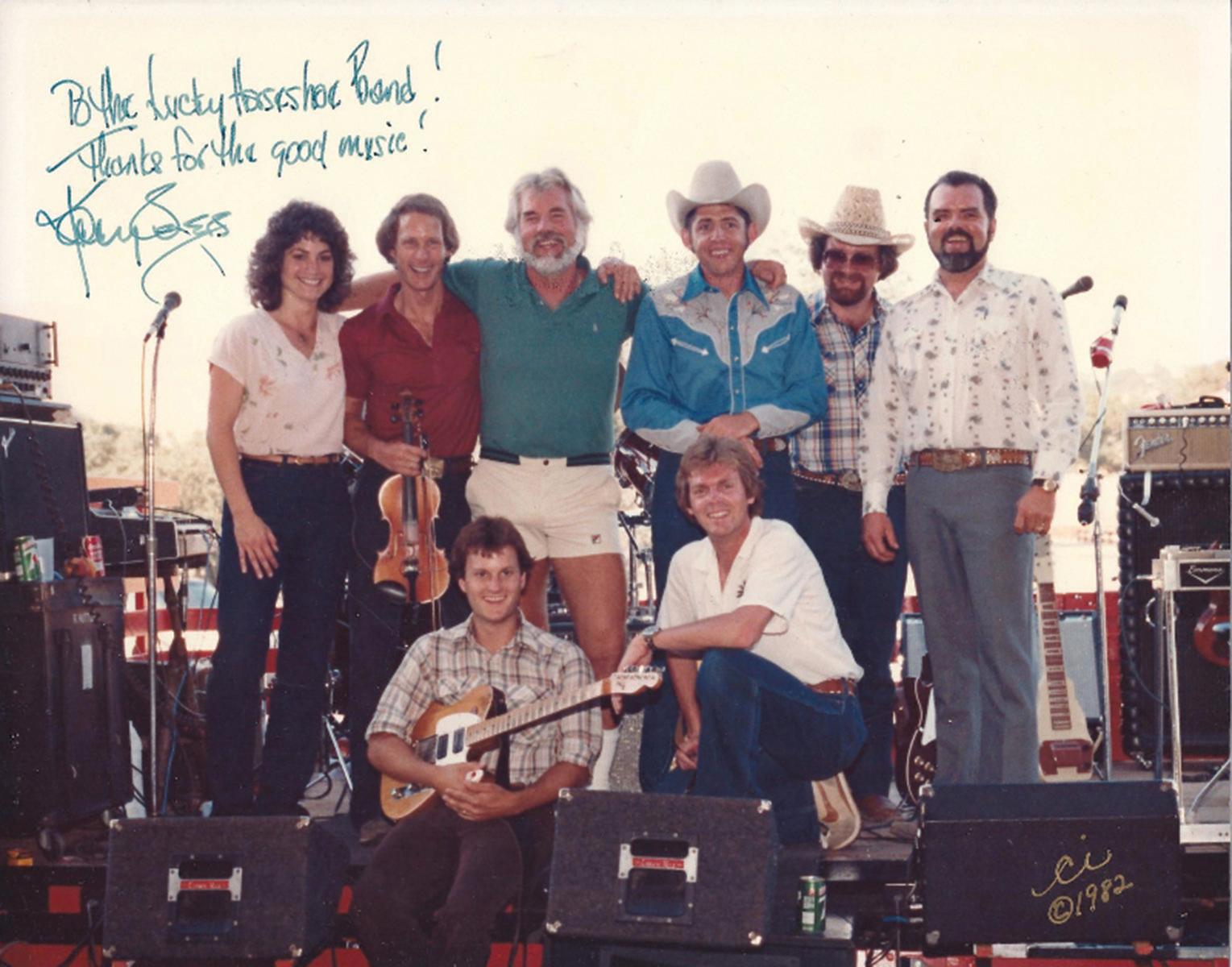

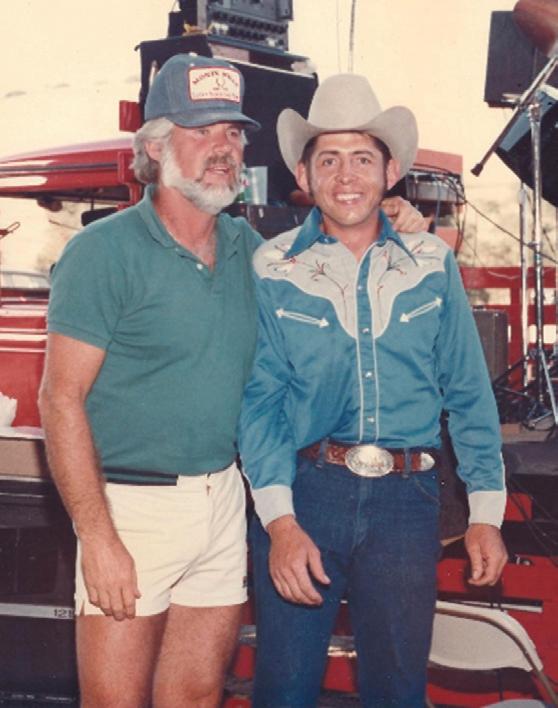
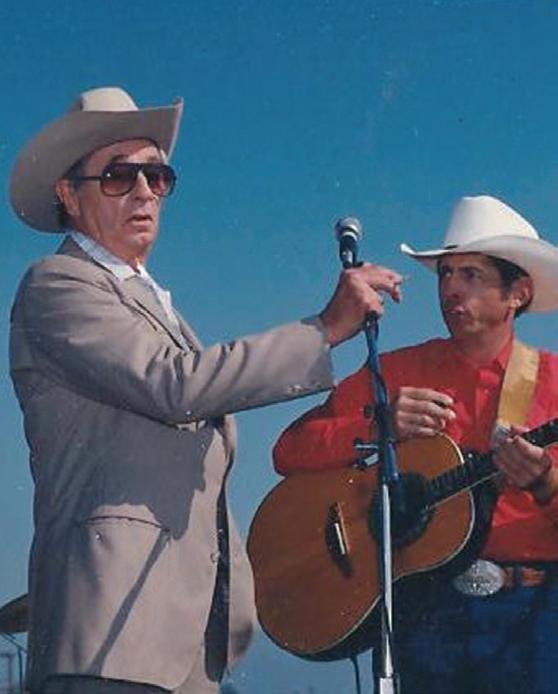
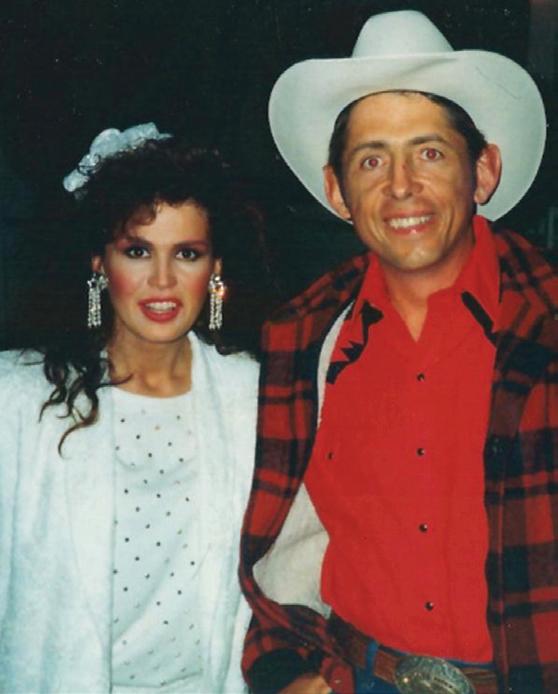

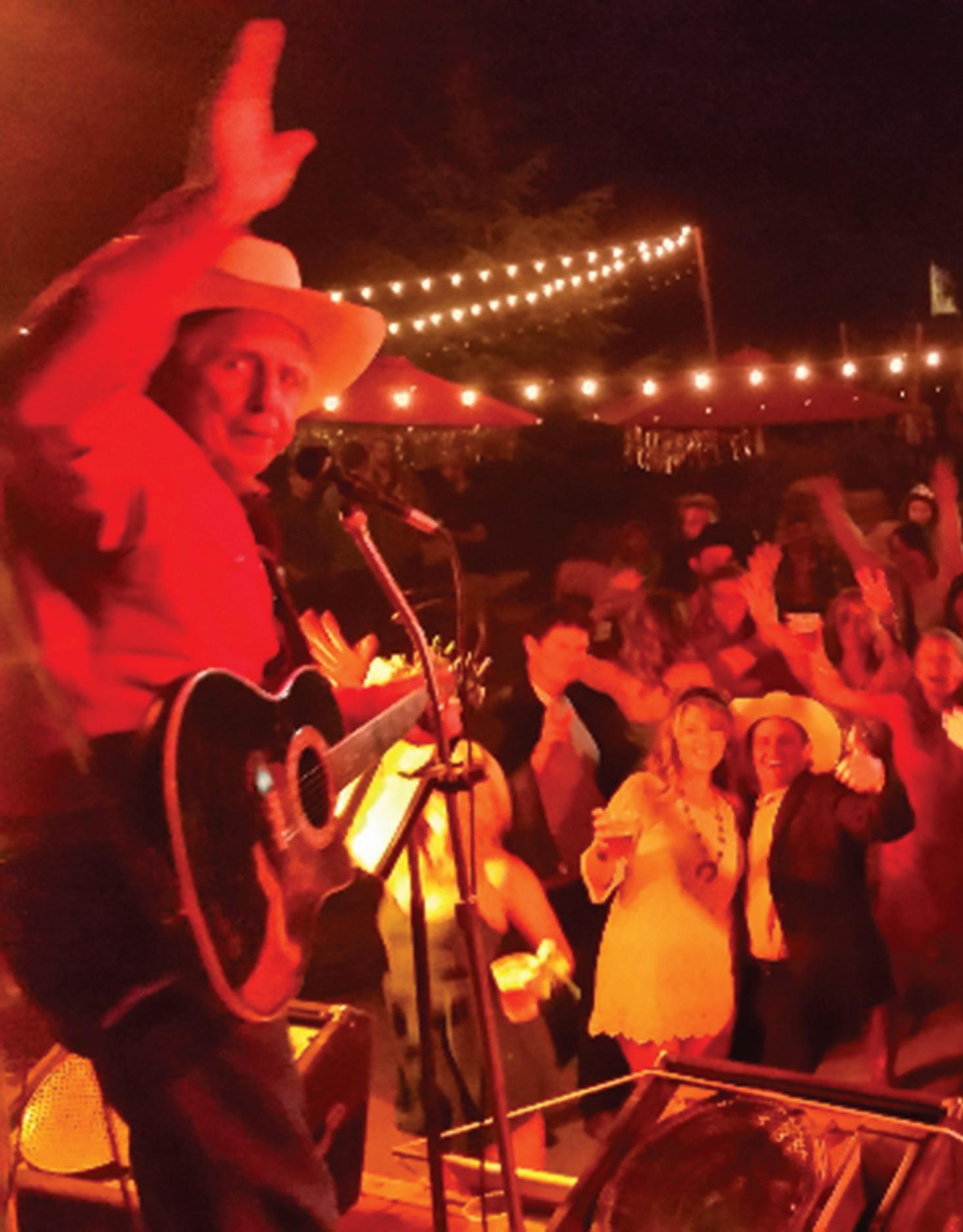 BY DAWN JANKE PHOTOGRAPHY BY STEVE HILSTEIN & KATHY MILLS
BY DAWN JANKE PHOTOGRAPHY BY STEVE HILSTEIN & KATHY MILLS
The Hospice Hoedown | Hearst Ranch, San Simeon | August 6 Tunes at Talley | Talley Vineyards, Arroyo Grande | August 7
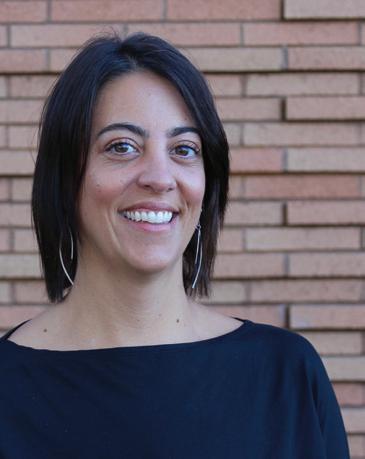
Central Coast Wine Classic | Greengate Vineyard, SLO | August 10 Summer Concert | Templeton Park, Templeton | August 17 Stone Soup Concert | Ramona Park, Grover Beach | August 27 Burgers & Brews | Loading Chute, Creston | September 4 Caledonia Days | Caledonia Adobe, San Miguel | September 25
Mills got his start in music in the 1970’s while serving as the farrier for the Rancheros Visitadores, an elite riding club that meets yearly in the Santa Ynez Valley for a week-long journey into the wilderness. He’d bring his
guitar on those rides, and it was there that he was invited to record at the Sage & Sound Recording Studio in Hollywood. Monte Mills Plays Old Favorites was recorded in 1975 and featured the famed Sons of the Pioneers’ Roy Lanham on guitar. “I didn’t realize how good I’d had it,” says Mills.
Growing up in Colorado, Mills’ granddad had a Stella guitar and would play on Sundays with friends and family. “Being around that at a young age had an influence on me,” he says. “The first song I learned was an old Stuart Hamblen song called ‘This Ole House;’” he continues, “I was always tuned into music.”
Mills started the Lucky Horseshoe Band in the mid-70’s with the help of Glen Rathbone, who still sits in and plays with the band from time to time. Mills describes Rathbone as brilliant: “The way he can talk music theory is so far beyond what I can do.” He adds, “The musician’s mind just amazes me. I don’t feel like I am one of them; I am just the presenter.”
He considers himself to be more like an Ed Sullivan or a Lawrence Welk: “I grew up watching those TV shows,” explains Mills, “and I guess I have that in the back of my mind as far as keeping things going. I introduce people and sing a few tunes, but it’s the other musicians that make it all work.”
The current lineup of the Lucky Horseshoe Band includes Willie Klearman on guitar; Steve Hilstein, on drums and vocals; Corine Manroe on bass and vocals; and piano player Randy Allen, who has performed with Mills for 30 years. Mills says, “For big shows, I add a few more musicians, like Julie Beaver on fiddle—she is a very accomplished musician.”
Through the years, Mills and his band have kept it simple, “playing classic songs where anyone can fill in.” He explains, “Everybody in the band can’t make every gig so we have to adapt. And, we never have rehearsals—we play off the cuff.” Perhaps that is what has kept Mills and the Lucky Horseshoe Band around for so long: as Mills says, “rehearsals are where bands fight and break up.”
While there’s no history of breakups in the Lucky Horseshoe Band, there have been band members who have gone on to other gigs. Peter Morgan, marketing manager at Intel, for example, was Mills’ guitar player in the early years while he attended Cal Poly. Another former band member is one of Mills’ favorites of all time, Roy Nichols, who played guitar for Merle Haggard for 20 years. Mills says, “When Roy got off the road with Merle, he played
with us for three years.” Mandolin player Tiny Moore, who played with Bob Wills in the ‘40’s, also joined Mills for a bit, as did saxophonist Glen Reese.
“It’s like a musical family, and we get to play with people we look up to,” he says. The band’s 35-year reunion celebration had a rotation of special guests, including harmonica player Mike Caldwell. Mills describes Caldwell as the best harmonica player in the world. “He grew up in Templeton and played with us when he was fifteen. He went on to play with greats like Loretta Lynn and Boxcar Willie.”
Mills and the Lucky Horseshoe Band have a number of fulllength recordings, some of which were recorded at Rick Sutton’s Sound Studio in Atascadero and others in Cambria at Steve Crimmel’s Painted Sky Studios. But, it is during live performances that the band really shines. Mills says, “I learned a lot from Frank Bogert, the Mayor of Palm Springs, who was the emcee for the Rancheros Visitadores rides. Frank would pick on the guys, like one time he pointed to Alex Madonna and said, ‘Oh yeah, he owns a Motel 6 up there in SLO County,’ and I figured out that people like being involved.”
During the band’s live performances, the audience is always involved. Famous artists like Jim Belushi, Brooke Shields, and Robert Mitchum have joined Mills on stage, and the band has performed a long list of notable gigs, including a Memorial Day BBQ for P!NK. His most memorable? “Opening for Merle Haggard in Turlock,” says Mills. The band was also a staple at McClintock’s in downtown San Luis Obispo every Thursday night after the Farmers’ Market, performing for the Cal Poly crowd for over 20 years. During a show, Mills says, “We don’t take a break because we don’t want the energy to drop.”
Mills and his band have been keeping traditional western swing music alive on the Central Coast for decades. “We like to pay homage to the history of country music when we perform. We do a lot of old Jimmie Rodgers tunes”—Rodgers was one of the first musicians inducted into the Country Music Hall of Fame—“and we also play a lot of Bob Wills and His Texas Playboys’ tunes.” Mills says, “If the music we play can get people together by the end of the night, we’ve accomplished something that’s positive.”
Sixteen-year-old San Luis Obispo High School junior and older brother to August and Charli, OLIVER HICKS stops by to talk between innings...
What sort of extra-curricular activities are you involved in? Leadership (High School ASB), Youth and Government, club sports, high school sports, National Honors Society, and I perform and volunteer for the Phyllis Madonna Annual Music Revue.
What recognition have you received? National Latin Exam Summa Cum Laude, Golden Tiger Award for Top Ten in Class, current Vice President of Youth and Government, former Sophomore Class Officer, current Commissioner of Intramurals at SLO High, Mayor’s Award for Community Service, USSSA Baseball All-American, Principal’s Honor Roll, and SLO High school “We Belong” Inclusion Award.
What have you been up to lately? I have been playing a lot of baseball with my travel team based out of Ventura with the goal of getting recruited, preferably by an Ivy League or strong academic program. I am also taking a US History course at Hancock College and working with the Santa Barbara Democratic Party on Salud Carbajal’s congressional campaign; plus hanging out with my friends and family whenever I can.
What is one of your favorite memories of all time? One of them would be the first time I walked into a Youth and Government joint session. It’s the only time all 4,000 delegates are in a room together. We were there to hear campaign speeches from the candidates running for Chief Justice, Lt. Governor, and Speaker of the Assembly. I was mesmerized by the energy that everyone brought and the amazing speeches that all of the student candidates gave.
What annoys you the most? People’s tendency to defy logic in order to fit in with an ideal that they blindly accept.
If you could go back in history and meet anyone, who would it be ? Martin Luther King Jr. —but I wouldn’t ask him about his philosophies on the world or his thoughts on the civil rights movement. All I would want to know is what it is like to stand in front of millions of people, eyes fixed on your every move, ears trained to your every word, waiting for you to inspire them, and still be able to deliver one of the greatest speeches ever written with ease.
What schools are you considering for college? Since I still have two years left of high school, I have a lot of time to consider different opportunities and change my mind, but as of right now I’m very interested in Harvard, Columbia, Brown, Penn, NYU, Georgetown, Dartmouth, Yale, Princeton, and Stanford.
What career do you see yourself in someday? I hope to be involved in politics somehow when I am older, either covering it as a journalist/analyst or working as a political strategist or speechwriter. I’ve become very engaged in current events and politics—it is a regular topic of conversation with my friends and family that I enjoy.
What do you want people to know about you? I’m way more than just a left-handed pitcher.

What else should we know? I’ve never been featured in a magazine before and I’m extremely flattered that someone nominated me for this article. Just goes to show that you should always strive be your best, you never know who is paying attention.
Introduce us at slolifemagazine.com/share







With a history and personality as unique as its owners, one of San Luis Obispo’s most eclectic homes opens its doors for a peek into its past, present, and future.
 PHOTOGRAPHY BY TREVOR POVAH
PHOTOGRAPHY BY TREVOR POVAH
n his book, “The Tipping Point,” Malcolm Gladwell describes “connectors” as people in the community who know a large number of others, and are in the habit of making introductions. They are the people who “link us up with the world… people who have a special gift for bringing the world together.” As we visited with Patty Andreen in her favorite corner of her whimsical home in San Luis Obispo’s Anholm District, it quickly became apparent that Andreen is a connector.
Before settling in to discuss the home, two houseguests, both from China, were introduced
and brought into the conversation. One of them is a musician, who was in town to perform in Festival Mozaic. The other, a medical doctor and Ph.D., was wrapping up his schooling before heading home. Andreen prompted a discussion that bounced from questions like, “What did you think of Trump’s choice of running mate?” to “How are the acoustics inside the Mission?” After the cultural exchange, we were serenaded by the violin, which was being tuned by an expert in the back guestroom. All the while, Andreens’ phone rang. “I don’t need to take that call,” she declared after glancing down at the screen. “I’ll call him back.” Then, a knock on the

door, and another phone call a few minutes later, and Andreen laughs to herself, “Oh, I can call her back. She likes to talk.” As she settles back down to her seat—in the only matching set of chairs in the house—she immediately pops right back up again. “This is my favorite piece,” she explains, as she moves various parts of an old grandfather clock around. “I inherited it from my dad.”
Andreen, a lawyer by training, and her husband, Ken, now a retired judge, moved to town twenty-four years ago after looking for a place to relocate to from Fresno. The couple had

identified small towns from San Diego to Ashland, Oregon, and spent time traveling to see them. Although they had both lived in San Luis Obispo as children, it never occurred to them to make it their home again. But, as they were passing through to somewhere else on their wish list, they said to one another, “It’s right here. What were we thinking? We were looking far and wide, and it was right here under our noses.” The Andreens settled in and quickly formed bonds with their new neighbors and friends. After a while, though, they realized that the house they bought was “cold and dark,” so the couple left for a nice, sunny spot in Avila

Beach. It was not long before they decided it was time to return, and they started hunting for the perfect place.
One day, as Andreen was talking to a friend on the sidewalk, she spotted someone pounding a “For Rent” sign into the front yard of a house that had caught her eye for many years. In her characteristic disarming way, Andreen marched up to the stranger and proclaimed, “You can’t rent that house—I want to buy it!” A bit taken aback at first, the would-be landlord became a potential seller over the course of an hour-long conversation. For Andreen, there was no doubt,
although she had never set foot in the house up to that point, that it was a home the couple would cherish.
The house was originally built in 1930. Back then, it was owned and occupied by the Halpins, who saw no need for bedrooms solely for the two of them. Instead, a sort of loft space was created above the living area, which is where the pair slept. Much later, some fifteen years ago, reportedly started by a kid playing with firecrackers in that loft, a fire ignited the old house and quickly the top half of the structure was lost, including the roof. When it was rebuilt,
the owners saw an opportunity to do away with the home’s traditional styling and, instead, go for a whimsical, perhaps fanciful, design. Technically falling under the French Eclectic period of architecture, the house is more like something that would have been constructed by hand somewhere in the countryside of Northern France. The roof alone represents an uncommon amount of detail and craftsmanship, as it curls under at the outside edges to approximate thatching with straw overhead. Although covered with shingles, they are all randomly misplaced in a way that looks handmade by a group of inexperienced villagers pitching in to
help. Design meets function and collides with fantasy in a way in which Walt Disney would be proud.
The whimsy does not end with the exterior. Throughout the 4-bedroom, 2-bath house, visitors will find the former inventory of secondhand stores and consignment shops throughout the Central Coast. A story accompanies each piece, and although nothing appears to go together in the cohesive manner found in a Pottery Barn catalog, somehow it all works. Because of all the light the home takes in from multiple windows, the Chorro Street









house feels much larger than its 2,413 square feet. With varied ceiling heights and a winding staircase, there is much for the senses to feast

upon. The tour continues with the recounting of how Andreen ended up with certain pieces; “Our neighbor, an Art professor at Cal Poly, gave us this Toulouse-Lautrec painting. I just love it!” Everything comes with a connection to another person and those relationships
consume much of the conversation, which is peppered with, “Do you know so-and-so? Oh, okay, I will make sure you meet him.”
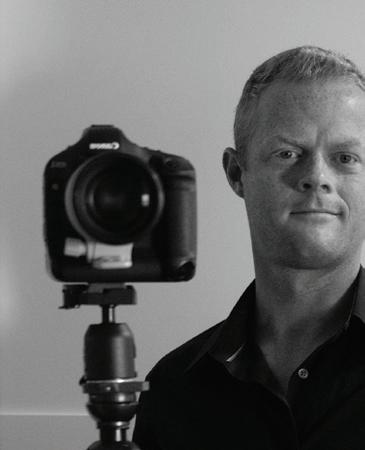
So much energy is felt in this old house. And the Andreens have clearly poured a lot of life into it. But, beginning around eight years ago, Ken has been struggling with a form of dementia. Although the 91-yearold worked up until recently as a volunteer assistant to local judges, clues started appearing indicating a slow change. Normally adhering to a “like clockwork” promptness, he uncharacteristically began showing up late and missing appointments. As Andreen recalls, “My husband has always had a very twinkly face. But, then he sort of had a blank stare and
was confused. He lost his twinkle.” The disease progressed to the point where he was recently placed in a full-time, offsite care facility. Now on her own, Andreen has decided that the house, although often full of visitors, is too big for one person to handle. So, the sign out front will again be pounded into the ground, only it will say “For Sale” this time, and she hopes that someone, perhaps a young family, will fall in love with it, just as she did. Andreen then picks up a photo of her husband, taken on the 4th of July, which shows him smiling broadly as he hoists a glass of red wine; and she explains that the care he has been receiving is making a difference. Returning her husband’s smile as she studies the picture she shares, “He’s got his twinkle back.”


In this new architecture feature, SLO LIFE Magazine is proud to partner with the American Institute of Architects California Central Coast to unveil its current project winners and highlight our local design and engineering talent. Every other month, the organization reviews submissions and selects the top Central Coast projects. Below are the first two installments of this ongoing series.


Owner Bill and Lise Van Beurden
Architect Michael Boudreau, AIA Structural Engineer Kelsey Parolini, Smith Structural Group Energy Consultant Michelle Dunn, Central Coast Energy Compliance Soils Engineer Patrick McNeill, GeoSolutions Civil Engineer Scott Stokes, Above Grade Engineering General Contractor Steve Soenke
Situated on a coastal ridge covered with two hundred-year-old oak trees, this new sustainable custom home sits on a one-of-a-kind site which overlooks Avila Bay and Pismo Beach. Owners Bill and Lise Van Beurden had no preconceived notions of what the home design was to be, other than livable and responsive to the qualities of the existing site. “Let Gaia speak to us,” Bill Van Beurden would often say.

Drawn to the Central Coast for its ideal weather and to join the rest of their family, the Van Beurdens recruited builder and artist Steve Soenke and architect Michael Boudreau to help them build their home on this beautiful piece of property. The team immediately settled on one major goal: all of the oak trees had to be preserved. The home
must live among them and honor the natural beauty of the surrounding area. The floor plan therefore responds to the view and the steep topography, while pushing into the hill and tucking under the existing tree canopy. The resulting home nicely disguises itself in the hillside, and can barely be seen from Highway 101.
The team was also very passionate about creating a project that was an example of sustainability. This building captures all rain and grey water for site irrigation and is wired for photovoltaic panels. The roof assembly is made up of structurally-insulated roof panels, which provide an insulation value of R-80. This and many other innovative building solutions helped the building score 141 points on the green point rating system. >>




139 West Branch Street is a locally designated historic resource in Arroyo Grande Village. The designation was based on owners/occupants who significantly contributed to local history and the property’s location within a concentration of historic resources that visually contribute to each other and together present a visual record of the town’s settlement. The building was at various times a residence, a business, and even a mortuary. The new design copied the original façade, including carriage doors, and asymmetrical window, door, and signage placement. Using new materials, the design replicated the Spanish-tiled eyebrows over the windows and doors, as well as original trim, cornice details, and entry columns. Most challenging was how to retain the integrity of the historic structure up front,
while creating more usable and attractive commercial space. A new glass link now connects the small historic building with the new twostory addition at the back. During construction it was discovered that the original moisture barrier had failed between the stucco and wood framing. Following the Secretary of the Interior’s Guidelines for Restoration of Historic Buildings, the city allowed reconstruction of the old walls so long as they retained the appearance of the original walls. This new mixed-use project creates an interesting dialogue for the Village of Arroyo Grande, and offers a strong language of what quality architecture can do to respond to site context, historical context, and complex code issues. 139 West Branch Street is a beautiful building and a welcomed addition to this downtown area.
The American Institute of Architects has been the leading professional membership association for licensed architects, emerging professionals, and allied partners since 1957. The local California Central Coast division works in collaboration with SLO Life Magazine to showcase its monthly award winning projects demonstrating notable concepts that have been constructed after being designed by local architects. SLO LIFE


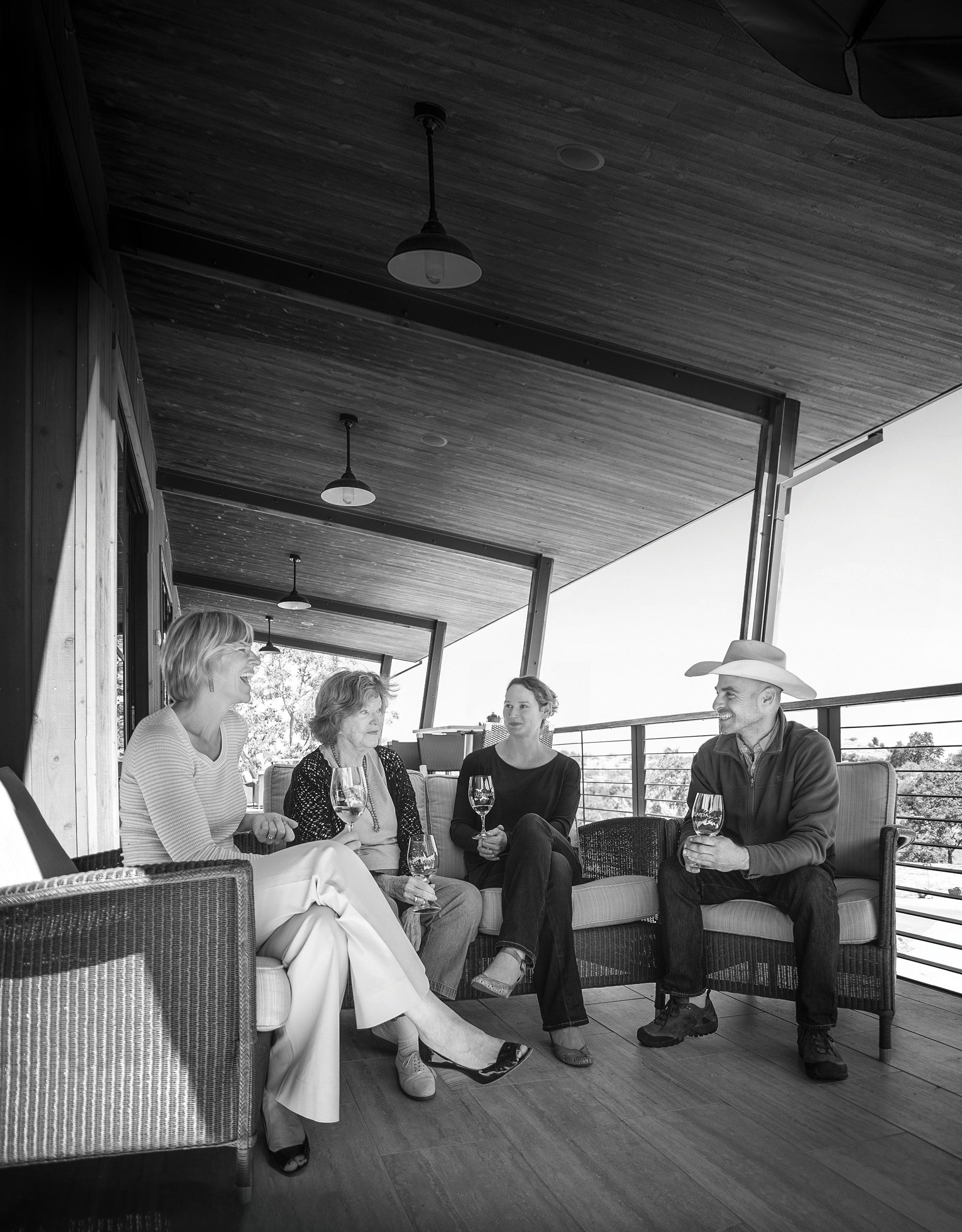
Total Homes Sold Average Asking Price Average Selling Price Sales Price as a % of Asking Price Average # of Days on the Market
2015 37 641,016 627,560 98.10 57
Total Homes Sold Average Asking Price Average Selling Price Sales Price as a % of Asking Price Average # of Days on the Market
2015 12 730,325 721,282 98.82 71
Total Homes Sold Average Asking Price Average Selling Price Sales Price as a % of Asking Price Average # of Days on the Market
2015 22 540,964 521,300 97.70 35
2016 30 717,520 708,588 98.80 30
+/-18.92% 11.93% 12.91% 0.70% -47.37%
2016 18 757,072 752,038 99.38 43
+/50.00% 3.66% 4.26% 0.56% -39.44%
2016 28 645,111 641,798 99.37 12
Total Homes Sold Average Asking Price Average Selling Price Sales Price as a % of Asking Price Average # of Days on the Market
2015 4 947,250 872,500 93.81 30
Total Homes Sold Average Asking Price Average Selling Price Sales Price as a % of Asking Price Average # of Days on the Market
2015 16 719,931 730,712 102.59 24
Total Homes Sold Average Asking Price Average Selling Price Sales Price as a % of Asking Price Average # of Days on the Market
2015 28 737,271 722,552 98.13 26
2016 12 1,192,000 1,153,250 97.01 60
+/27.27% 19.25% 23.11% 1.67% -65.71%
+/200.00% 25.84% 32.18% 3.20% 100.00%
2016 19 696,100 701,556 101.20 15
+/18.75% -3.31% -3.99% -1.39% -37.50%
2016 21 759,362 748,304 98.99 32
+/-25.00% 3.00% 3.56% 0.86% 23.08%
2016 30 725,468 719,419 99.20 67 johnson ave *Comparing 1/1/15 - 7/20/15 to 1/1/16 - 7/20/16
2015 32 650,138 634,241 97.55 36
+/-6.25% 11.59% 13.43% 1.65% 86.11%
SOURCE: San Luis Obispo Association of REALTORS®






627,450 460,000 870,500 570,000 873,750 795,000 482,500 555,000 587,000 570,000 409,900 799,000 440,000 324,500 452,500 425,000 707,750 174,500 540,000 549,000






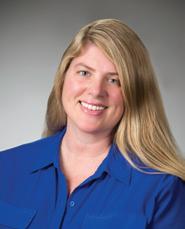
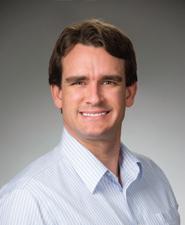

1. a sensational dramatic piece with exaggerated characters and exciting events intended to appeal to the emotions.
2. a play interspersed with songs and orchestral music accompanying the action.
 BY PADEN HUGHES
BY PADEN HUGHES
The hunt for a fun-filled, unique theatre experience, led my husband and I to The Great Amercian Melodrama & Vaudeville in Oceano. Upon arrival we were cheerfully ushered to our small bistro table on the floor of a quaint theater to watch “Under the Boardwalk,” a locally written melodrama along the same storyline
as “West Side Story.” A bit crowded, and with food, beer, and wine served, the atmosphere was more jovial and family oriented than we’d expected. The intimate setting, along with encouraged crowd participation, made us feel like we were part of the show. The family affair continued with the staff running the concession stand and bussing the tables during intermission.
The show was two hours long and comprised of three acts. The first two acts told a simple story of Pismo pier clams trying to survive the clamming season and the rival gang of gulls. In the midst of the angst and musical renditions of modern songs, an unlikely love story ensues. The highlights for us during this melodrama were the repurposed modern tunes given hilarious new lyrics to match the story content. The crowd roared with laughter when MC Clammer rapped a moving rendition of “Can’t Touch This” to taunt seagulls away from their “territory.” We all giggled while Glen the love torn clam sang the reworked Katy Perry song “I Kissed a Gull.” Light, entertaining, and over the top, I got my first taste of a melodrama.
The show wrapped with its final act, a Vaudeville routine. Called “I love the 90’s,” my husband and I, having grown up in this era, were beyond impressed and entertained. We were literally buckled over in laughter during the hilarious

mash-up of 90’s pop culture. From Jim Carrey dressed in a tutu ordering a latte from the Central Perk coffee shop on the TV show “Friends,” to an episode of “Wayne’s World,” and review of the rise of country music during the time period, it was one of the more entertaining things we’d seen in a while. The finale took the cake with a review of the top songs of the decade.
After the show we met the Artistic Director Dan Schultz who shared, “We’ve always liked doing two shows in one. The vaudeville routine at the end showcases the variety of skills our actors have in a different way. Originally, we threw in vaudeville at the end of the melodrama as an extra, but now it’s the most popular part every time.” It certainly was for us.




What’s new and now? We take a look at the latest craze in fitness, beauty, and nutrition.

Suddenly, everyone is talking about this underwater plant for its nutrient profile, skin-care benefits, and incredible potential for combatting climate change (as recently detailed in The New Yorker, which called it “a miracle food”). “Seaweeds are amongst the most nutrient-dense plants on the planet, and as they have access to all of the nutrients in the sea, they are an extremely rich source of minerals,” explains Scotland’s Mara Seaweed CEO and co-founder Fiona Houston. Houston says an array of Michelin-starred chefs are now cooking with her products, and “Manufacturers are using seaweed as a healthy option to replacing the salt added to processed foods,” adds Jane McKenzie, PhD, a food and nutrition expert at Queen Margaret University.
Repechage founder Lydia Sarfati was one of the first to bring highquality seaweed harvested off the coasts of France and Maine to skin-care in the U.S. and says she’s seen its popularity growing recently, which doesn’t surprise her. “The bioactive substances derived from seaweed provide a beneficial and functional role at the cellular level, contributing to healthy looking skin, hair, and nails,” she says.
Vitamins may be used to getting all the glory, but recently experts are calling minerals the real health rockstars. The ailments of modern life that affect us all—stress, sleeplessness, and a dependence on afternoon double espressos—aren’t just giving us something to whine about, they’re depleting our mineral levels, particularly magnesium. Functional medicine docs say that 80 percent of us are deficient. Why is that a problem? Magnesium is linked to improving your muscle and bone strength, and “controls hundreds of chemical reactions in the body, helps regulate blood pressure, and keeps the immune system strong,” explains Frank Lipman, MD.

More people are making sure they’re “remineralizing” either by taking supplements, or using topical magnesium oils and sprays, which are said to be just as beneficial, or by soaking in Epsom salts or magnesium flakes in a hot bath. “Transdermal absorption [through the skin] is an effective way to increase your magnesium levels,” says Ania Mankowska-Allard, director of The Nob Hill Spa at The Scarlet Huntington in San Francisco, which taps the mineral’s homeopathic history for a luxe Magnesium Wellness Treatment to help with everything from stress and insomnia to eczema.
Comprehensive fitness programs, which incorporate additional lifestyle elements such as nutrition and health coaching, are getting more popular as a way to ramp up and recommit to health and fitness, with the added gratification of achieving measureable results (like muscle gain, and lost inches). In addition to tools for healthier living, these programs also provide the support and accountability that helps people create healthier habits, which is what gives the programs staying power.


The current skin-care trend isn’t about what you slather on, it’s what you’re sipping as part of your beauty regimen. Dozens of companies are making beauty-boosting beverages loaded with the nutrients that help promote a healthy glow from within, or fight acne, or prevent the signs of aging, and more. Many of these elixirs contain superfood ingredients and antioxidants linked to skin health, and they come in a powdered form that you just stir into a glass of water.

Why are these products on the rise? “Consumers are increasingly making the connection between skin care and nutrition,” says Walter Faulstroh, founder of leading beauty supplement brand Hum Nutrition. We’re seeing big retailers starting to take note, rolling out these inner-beauty beverages in stores from Urban Outfitters (Moon Juice Beauty Dust) to Sephora. “People are becoming more and more savvy about how improved wellness can also benefit their appearance, says Sephora director of merchandising Catherine Lepetit, who stocked 100 stores with Hum Nutrition back in mid-February. “It’s a unique and innovative offering in the skin-care category and industry,” she says.
Matcha (a Japanese green tea that’s in a powdered form and is whisked into hot water or milk) is becoming a trendy new staple in pretty much any coffee shop you go to (yup, even Starbucks), and more and more brands from Teavana to T2 are making at-home versions of the lightly caffeinated beverage, as well. “We experienced double-digit sales growth last year of our Organic Imperial Grade Matcha,” says Teavana director of tea development Naoko Tsunoda.
We expect to see more matchadedicated cafés pop up around the country to join MatchaBar in New York City and Matcha Box in Los Angeles. And we wouldn’t be surprised if the antioxidantrich green tea started to show up in beauty products or if matcha machines soon occupied a place next to your Nespresso. (In fact, Sharp recently released an instant matcha maker…)
You’ve heard of superfoods. Well, meet the superherbs. Some plants have superpowers that help the body adapt to stress and handle it in a healthy way. These wonders are called adaptogens, and they have the attention of physicians like Frank Lipman, MD, who is excited about their potential to improve all kind of issues related to health and beauty. “They help your body adapt to its specific needs,” says Dr. Lipman, who has long been prescribing adaptogenic herbs to his patients. “No food can do that, and I don’t know any other herbs that work that way.” Take a close look and you’ll start to see adaptogenic ingredients like Tulsi, Ashwagandha, Rhodiola Rosea, goji berries, and Ginseng in your juices, health food items (including chocolate), beauty products, and more.
More people are drinking nut and seed milks than ever before, thanks to all the exposure around dairy intolerance and the bad press surrounding soy. People now want milks that are all-natural and emulsifier-free (a 2015 study published in the journal Nature suggests emulsifiers may also be contributing to the rising incidence of obesity, metabolic syndrome, and inflammatory bowel disease by interfering with microbes in the gastrointestinal tract). Today’s educated customers are looking at ingredients, says Elly Truesdell, brand buyer for Whole Foods, and they’re putting down the milk cartons. “As better milk alternatives have been made—that are refrigerated and not shelf-stable, and are free of certain ingredients—people are starting to choose those.” And beyond the supermarket, many cafés are making their own nut milks, with San Luis Obispo locals praising the creamy homemade offerings at Scout Coffee Co. and Bello Mundo Café.

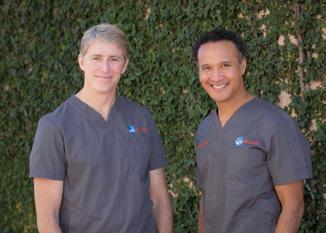












It all started with smoothie bowls. You know, the ridiculously photogenic ones that populate your Instagram feed every morning? But now bowls are branching out to claim lunch and dinner, too, and they’re making a savory appearance on healthy-leaning restaurant menus, going by the name of grain bowls, macro bowls, veggie bowls, poke (sushi-style) bowls, and more. And with new cookbooks such as “Bowl” by Lukas Volger and “Whole Bowls” by Allison Day you can make these nutrition packed treats at home.
But there may be more than just taste buds directing this trend. Some say that portion control is behind the bowl, that it’s a great way to get your protein, grains, and veggies, in perfect proportions. Others say that this is just the healthy, casual way more Americans want to be eating right now. “There’s something really comforting about the serving vessel,” says Volger. “There’s something nice about the whole meal being there.”

This hot new beauty practice has a lot in common with your grandmother’s evening cold cream ritual to remove dirt and makeup—only this modern technique uses natural plant oils. Dozens of beauty brands, from Tata Harper and Elizabeth Dehn for One Love Organics to Burt’s Bees, are launching buzzy cleansing oils—but, of course, you can create your own cleanser right at home (we recommend a 3:1 ratio of castor oil combined with almond oil to help fight acne). The super gentle concept of oil cleansing is based on the chemistry of “like dissolving like”—an oil cleanser effectively tackles the dirt and oil on your face—versus water-based cleansers that need surfactants to provide suds to get your skin clean. More people are giving the holistic practice a go. Without wetting your face: “You massage the oil in from chin to forehead in tiny circular motions for a few minutes,” explains CAP Beauty’s Kerrilynn Pamer. “The massaging action creates heat in the skin, which gently encourages the pores to open, making the cleansing ritual much more effective.” Simply wipe face clean with a wet, warm washcloth and you’re done. Fans and formulators say with oil cleansing there’s no stripping of the skin’s acid mantle to the point of it feeling tight and dry, or interfering with your skin’s sebum production or pH levels. And it you choose a plant-based oil cleanser (versus mineral or petroleum-based one), “it will remove the emulsified oil, makeup, and pollution while leaving your skin balanced and nourished,” and Pamer swears, “that oil causes breakouts is a myth.”
Whether you choose invisalign or braces, Dr. Daniel will give you the smile you need to make you feel like you were born a star!





ater this year, the International Union of Geological Sciences will step out of obscurity as it debates the ratification of a new epoch called the Anthropocene period. While many leading researchers in this field of study argue that humankind entered this period after World War II, others suggest it could be traced back to the 1960’s when the Soviets first began using the word. Some rationalize that its roots are found with the advent of agriculture some 10,000 years ago, as we Homo sapiens transitioned away from hunting and gathering. Regardless of when it began, few academics argue that mankind has not turned the page and begun a new chapter in its relationship to the blue marble hurtling through space called Earth. Literally speaking, the word Anthropocene is the combination of anthropo- (human) and -cene (epoch). The new era we are entering is defined by the undeniable fact that humans have passed a tipping point, beyond which we are fundamentally altering the systems of our planet.
For eons, humankind was the hunter, as well as the prey, in a system that could be noted for a remarkable degree of parity.
Sometimes we found food and made it to another day; other times, we were lunch for some other creature in the animal kingdom. Today, we are just the hunter. And our bounty is found not in the wild, but at Costco. As the uncontested kings and queens of the jungle, it is now left up to us to determine what happens next. Perhaps nothing is more symbolic of this fact—at least here on the Central Coast—than the plight of our oak trees.
As he banked to the right, flying low and slow, like he had done so many times before, in this very spot, Matt Trevisan looked down at a landscape that he did not recognize. In addition to an empty hillside that more closely resembled a West Virginia strip mining operation than the bucolic Santa Lucias, the winemaker and owner of nearby Linne Calodo also spotted a massive crater with a small fleet of earthmoving equipment crisscrossing the terrain below. Still puzzled over what he had witnessed, Trevisan touched down on the runway and immediately headed for a nearby computer, logged onto Google Earth, and plugged in the same coordinates. While the website processed his
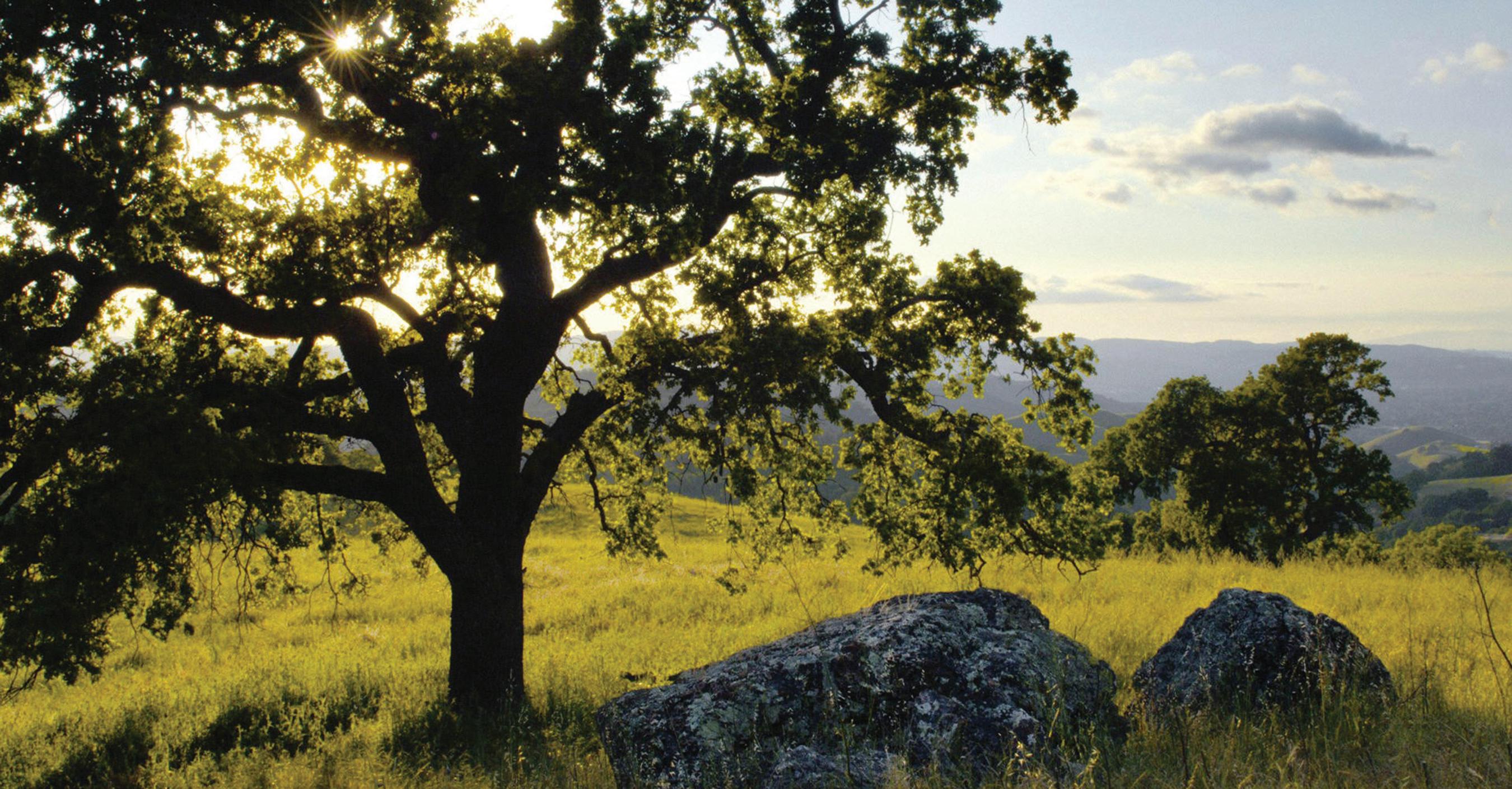
request, the satellite began zooming in. On the screen, a sea of green materialized. He panned back and realized that the hundreds of oak trees he was accustomed to seeing from the sky were gone—all of them.

County inspectors jumped on the complaint and found that Justin Vineyards & Winery had been doing hillside grading without a permit, and an investigation ensued. Meanwhile, local news outlets picked up the story, which soon attracted national attention. As links to the articles were shared on social media, more details began to emerge. The 20-acrefoot (6.5 million gallons) agricultural pond had been permitted by the Upper Salinas-Las Tablas Resource Conservation District, but had been revoked by the agency when it was found that the winery failed to comply with a series of notifications and environmental surveys prior to construction. Plus, as their neighbors pointed out, there was massive inequity in having a deep-pocketed corporation drilling a well deeper into the ground than anyone else was able to afford, and then pumping it into a pond where it would then be diverted to a hillside full of grapes.

In 2010, The Wonderful Co. of Los Angeles bought Justin Vineyards & Winery for an undisclosed sum. At the time, many in the wine industry saw the acquisition as a vanity purchase—the cherry on top of an ice cream sundae. The owners of The Wonderful Co., Stewart and Lynda Resnick, were already billionaires by that time. Over the years, the Resnicks had acquired 70,000 acres of almonds and pistachios in the San Joaquin Valley. Head east on Highway 46 for an hour or two and a desolate landscape—similar to the desert planet of Tatooine where Luke Skywalker grew up—gives way to a lush Garden of Eden in Lost Hills, about 40 miles west of Bakersfield. As far as the eye can see, in every direction, is what Forbes estimates is $3 billion of the Resnick’s $4.3 billion fortune. The remaining balance of their net worth comes from ownership of their other companies: Fiji Water, Teleflora flower delivery service, POM Wonderful pomegranate juice, plus 32,000 acres of California citrus sold mostly under their Halos and Sweet Scarletts brands, and, of course, Justin Vineyards & Winery.

With a foothold in San Luis Obispo County, the Resnicks purchased in 2012 the 747-acre Hardham Ranch, which had been used for dry farming and cattle grazing since the early 1900’s. Almost immediately upon closing escrow, the Beverly Hills-based couple began clear-cutting oak trees, planting grape vines, and constructing two massive reservoirs with an estimated holding capacity of 184-acre-feet (60 million gallons). Amid an intractable drought and a quickly dwindling water basin, it was not long before the neighbors’ wells began to go dry. Those that were able, dug deeper. Some began trucking in domestic water. Others put up a “For Sale” sign and moved away. Water, as it turns out, is something that the Resnicks know quite a bit about. And more than anything else, it is the source of their fortune.


As owners of the Westside Mutual Water Company, the Resnicks secured in 1994 a sweetheart deal from the State of California when, in meetings closed to the public, they locked up the exclusive rights to an aquifer on public lands with an estimated 500 billion gallons of water. Since then, the Resnicks have dug 85 wells on the property and constructed a six-mile-long canal. Farmers and water activists on the Valley’s west side, which is perennially dry, cried foul as they pointed to the couple’s outsized influence in Sacramento—among their many political contributions to politicians on both sides of the aisle, the Resnicks gave $350,000 to Governor Gray Davis, whose administration negotiated the privatization of the state-owned water basin. Today, as the ground above the aquifer shrinks at an estimated one foot per year, their stake in what is now known as the Kern Water Bank is estimated to be worth $250 million. And it is because of that entity the Resnicks have seen their thirsty nut trees—one gallon of water is required to grow a single almond—explode in value.
The backlash against Justin Vineyards & Winery on the Central Coast was swift and unforgiving. Right away, the winery sent out an email stating that they were within the law to fell the oaks and that it would
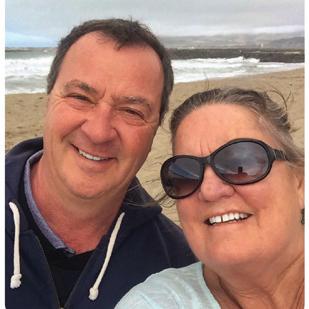
be planting many more new ones. Presumably, executives figured the whole thing would blow over, but restaurants canceled orders and began selling deeply discounted glasses of their wines to move the inventory that customers were shunning. Bottles with the distinctive Justin isosceles triangle gathered dust as they sat on supermarket shelves with stickers that read “50% off.” It was a stunning fall from grace after being named Wine Enthusiast’s 2015 Winery of the Year. As the backlash grew beyond the bounds of San Luis Obispo County, and news outlets around the country picked up the story, The Wonderful Co. got to work on damage control. Not only were wine sales dropping precipitously, so too were pomegranate juice and Fiji water, not to mention Wonderful Pistachios.
In the Information Age, the market speaks at the speed of a click, a share, and a Like. Amid a series of we’re-so-sorry-we-really-didn’t-knowwhat-was-going-on explanations that no one believed—especially those who knew Stewart Resnick and his reputation for being involved in the minutiae of every last detail—the company entered into a public relations tailspin. The only way out of it was to donate the property, which they pledged to do after negotiating with the County Planning Department. In exchange for not receiving any penalties or fines, the 380 acres would be handed over to a local land conservancy.
An email was sent out to local media. In it was an attachment that read, “Statement from Lynda & Stewart Resnick, Owners, Justin Vineyards & Winery.” Of the hundreds of oak trees that had been cut down, the memo stated, “… we are ashamed and sorry. We fell asleep at the wheel.” The letter ended with a commitment to plant 5,000 new oak trees across their properties in North County. A couple of weeks later, the winery’s president, David Ricanati, and its founder, Justin Baldwin, sat down for a mea culpa with the Tribune . Ricanati said, in effect, that he was aware that oaks were being removed but did not realize “the scope of tree removal.” Baldwin, who now lives in Palm Desert where he works full-time as a brand ambassador for The Wonderful Co., told the paper that he “was not aware of the extent of the work that was proposed.”
But, someone had to know. The neighbors reported seeing a procession of trucks loaded with firewood leaving the property each day. And clearcutting thousands of old growth oak trees—many estimated to be over 250 years old—is no small feat. What about the small army Trevisan spied from his plane overhead? Despite what the company’s representatives have said in the aftermath, their permit application for the construction of the agricultural pond clearly stated that no trees would be removed in the process. In the letter to the County Planning Department that accompanied their permit application, they wrote, “The reservoir will be designed to conform to natural topography (rolling terrain) with no impact to native trees and the environment.” Justin Vineyards & Winery
and the Resnicks got their hands caught in the cookie jar. But it was about to get much worse.
Across the Central Coast, particularly in Paso Robles (Spanish for “pass of the oaks”), just as the uproar started quieting down, more news surfaced. Less than a week since the long-faced executives pled ignorance, a lawsuit, which somehow escaped the public eye, documented that Justin Vineyards & Winery had clear-cut 17,000 trees, including 15,000 mature native oaks—90% were at least two-feet in diameter—in 2011 at its Chimney Rock Road vineyard. The lawsuit, which went to trial in 2013, was filed by Keith Garl, owner of A-1 Tree Service of Nipomo, who claimed to not have been fully paid for the work. Superior Court Judge Jac Crawford sided with the plaintiff, and Justin Vineyards & Winery was ordered to pay $444,112. Clearly, it was not the first time.

Despite its esteemed place in Central Coast heritage, curiously, it is not expressly prohibited to fell a native oak tree. While restrictions do come into play when applying for a building permit with the County Planning Department, there is nothing on the books specifically concerning oak trees. Although neighboring counties to the north and south—Santa Barbara and Monterey—as well as various municipalities within San Luis Obispo County have restrictions, the board of supervisors have not established an ordinance concerning oak tree removal. Twenty years ago, it tried but failed under opposition from local property owners, yet the recent events changed the political climate. Recently, the board of supervisors deliberated on an emergency 45-day ordinance, which passed by a 4-1 vote—Debbie Arnold, predictably, voted “No.”
Stewart Resnick, who is 79, and his wife, Lynda, 73, are somewhat like a Rorschach test, in that how we see them says more about ourselves than anything else. The remarkable thing is just how divided we are in our opinion. On the one hand, there is outrage that the out-of-town couple exploited the natural beauty of our county for their own personal profit. On the other hand, their hard work, industriousness, and ingenuity are admired, even revered, with the same level of intensity by others who say they are the epitome of the American Dream. So, who’s right? And have we entered a new paradigm, a new age—without being “New Agey” about it—where the concepts of capitalism and private property are evolving? Perhaps the very idea of ownership requires rethinking. At the dawning of the Anthropocene epoch, maybe we will begin to truly see our place on Earth in terms of geological time, and that our existence as a people is but a blip on the radar. Perhaps, in the Judeo-Christian tradition, stewardship, rather than self-enrichment, will govern our philosophies and inform our lawmaking concerning private property rights going forward. In the meantime, let’s all agree to leave the oak trees alone. SLO LIFE




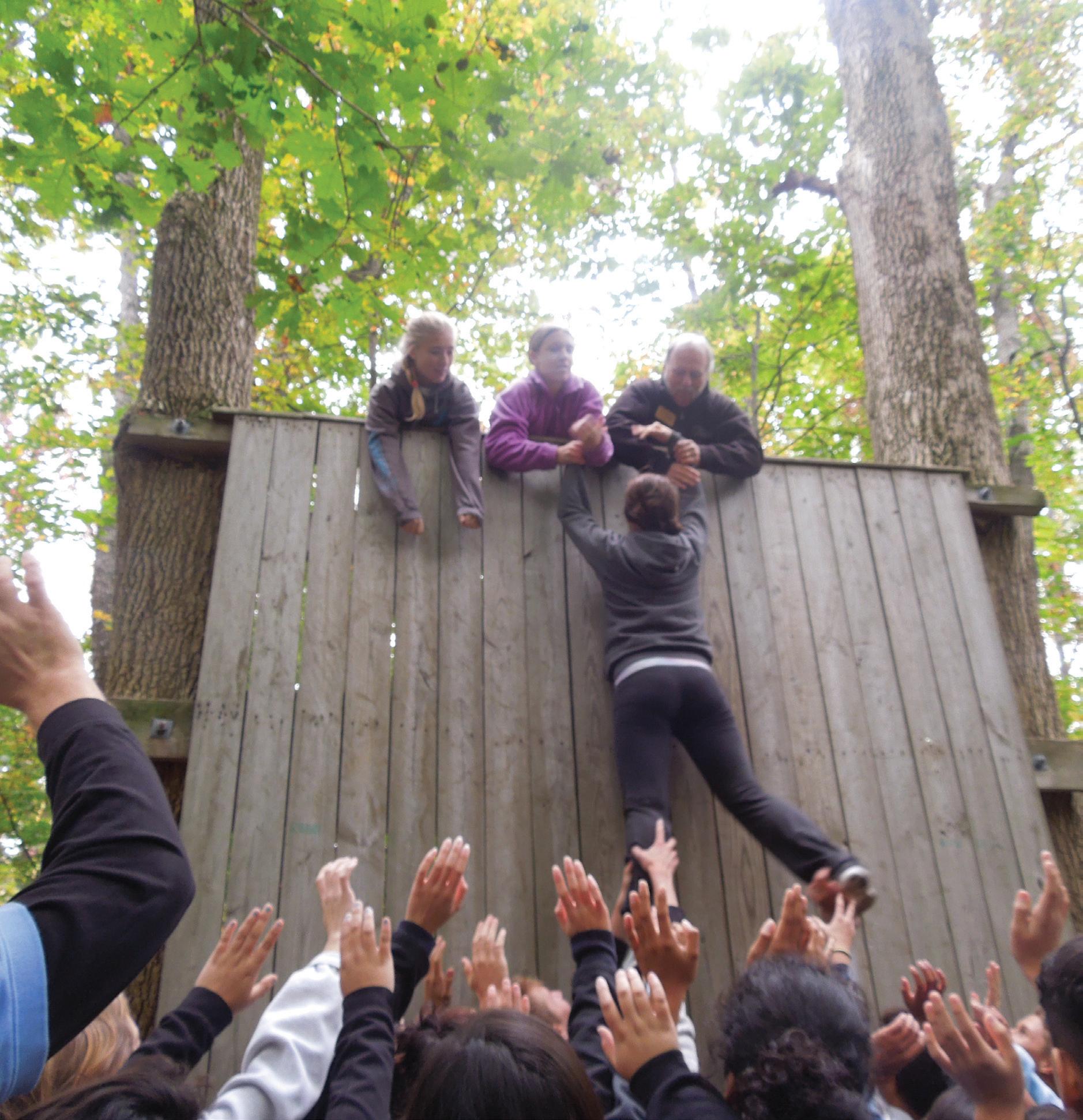 We continue our look into the beloved San Luis Obispo County institution known as Leadership SLO. With an alumni network featuring 900 members, the program has played an important role in the lives of many locals. This issue marks the fourth installment of this ongoing year-long series, and our own Paden Hughes continues her visit with one member from each of the classes during its twenty-five years of operation. This time, she shares perspectives from members of Classes XVI through XX.
We continue our look into the beloved San Luis Obispo County institution known as Leadership SLO. With an alumni network featuring 900 members, the program has played an important role in the lives of many locals. This issue marks the fourth installment of this ongoing year-long series, and our own Paden Hughes continues her visit with one member from each of the classes during its twenty-five years of operation. This time, she shares perspectives from members of Classes XVI through XX.
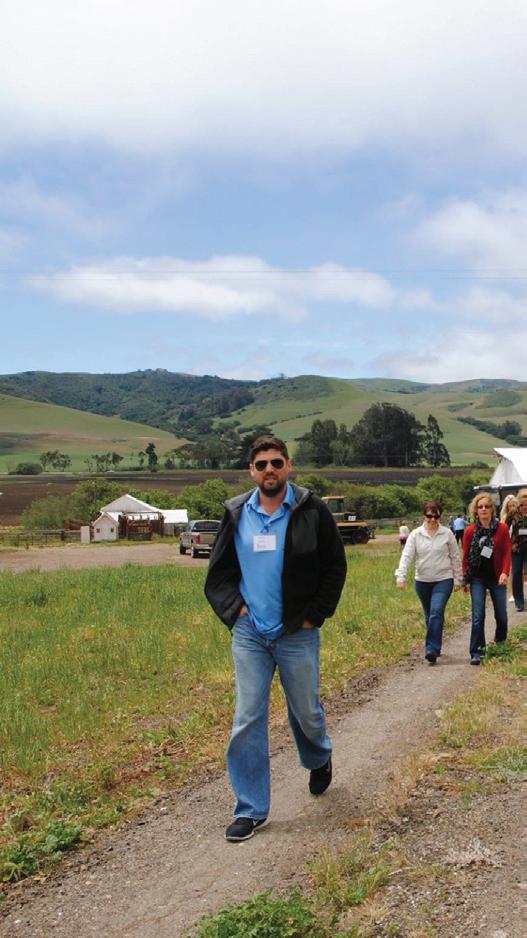

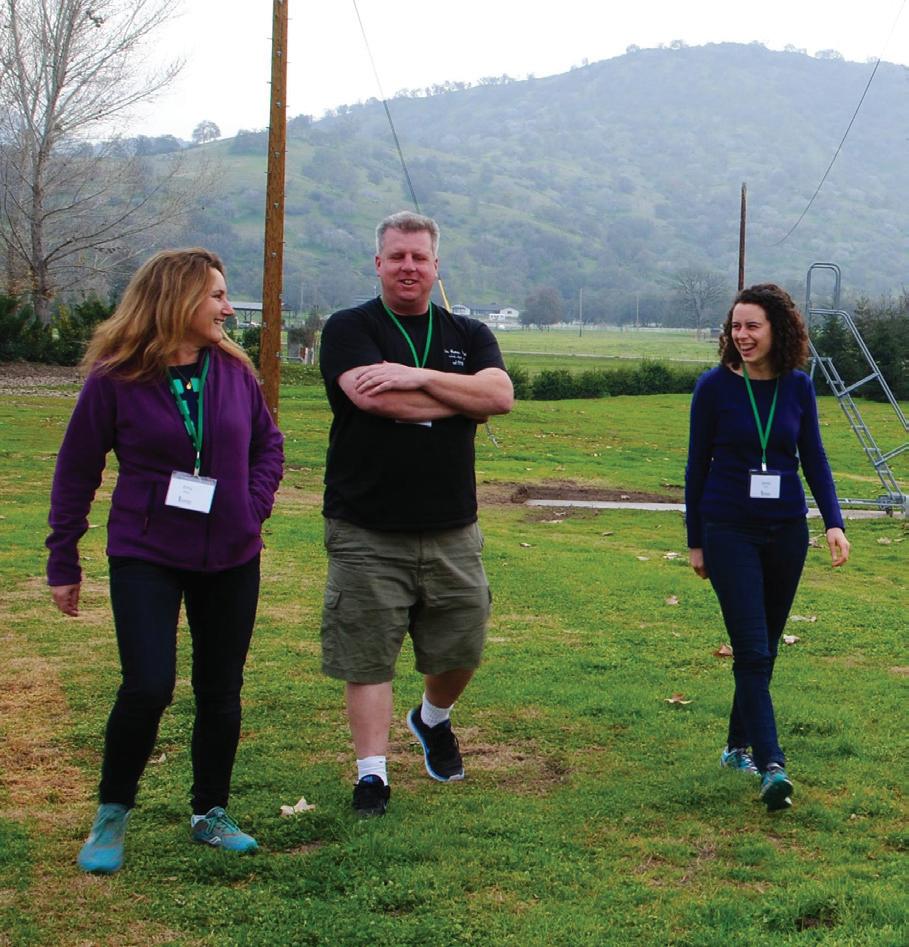
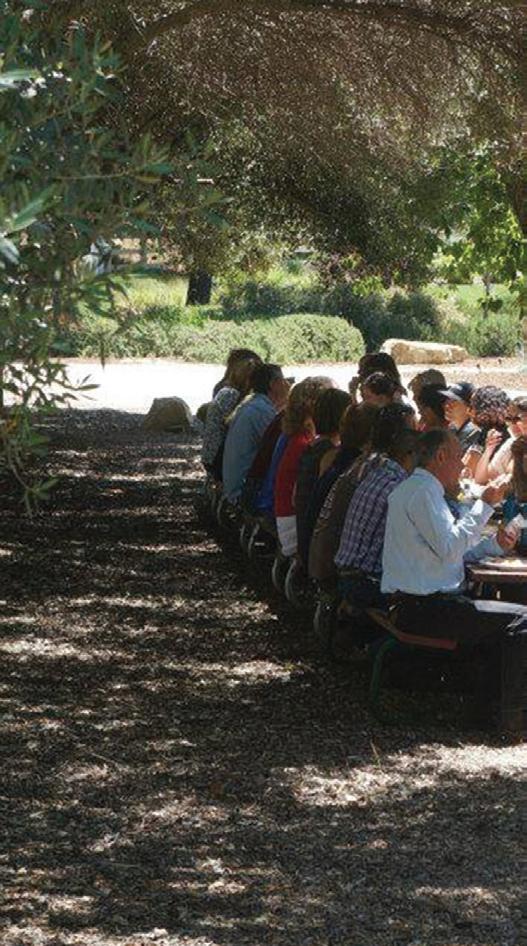



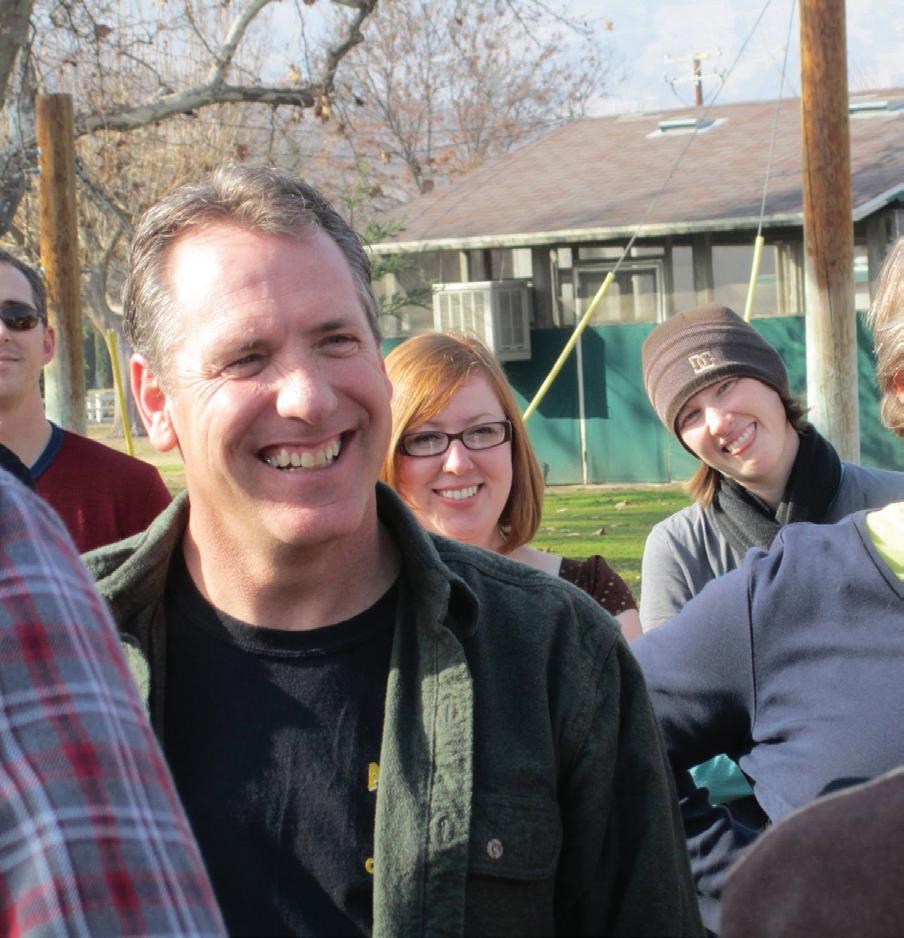
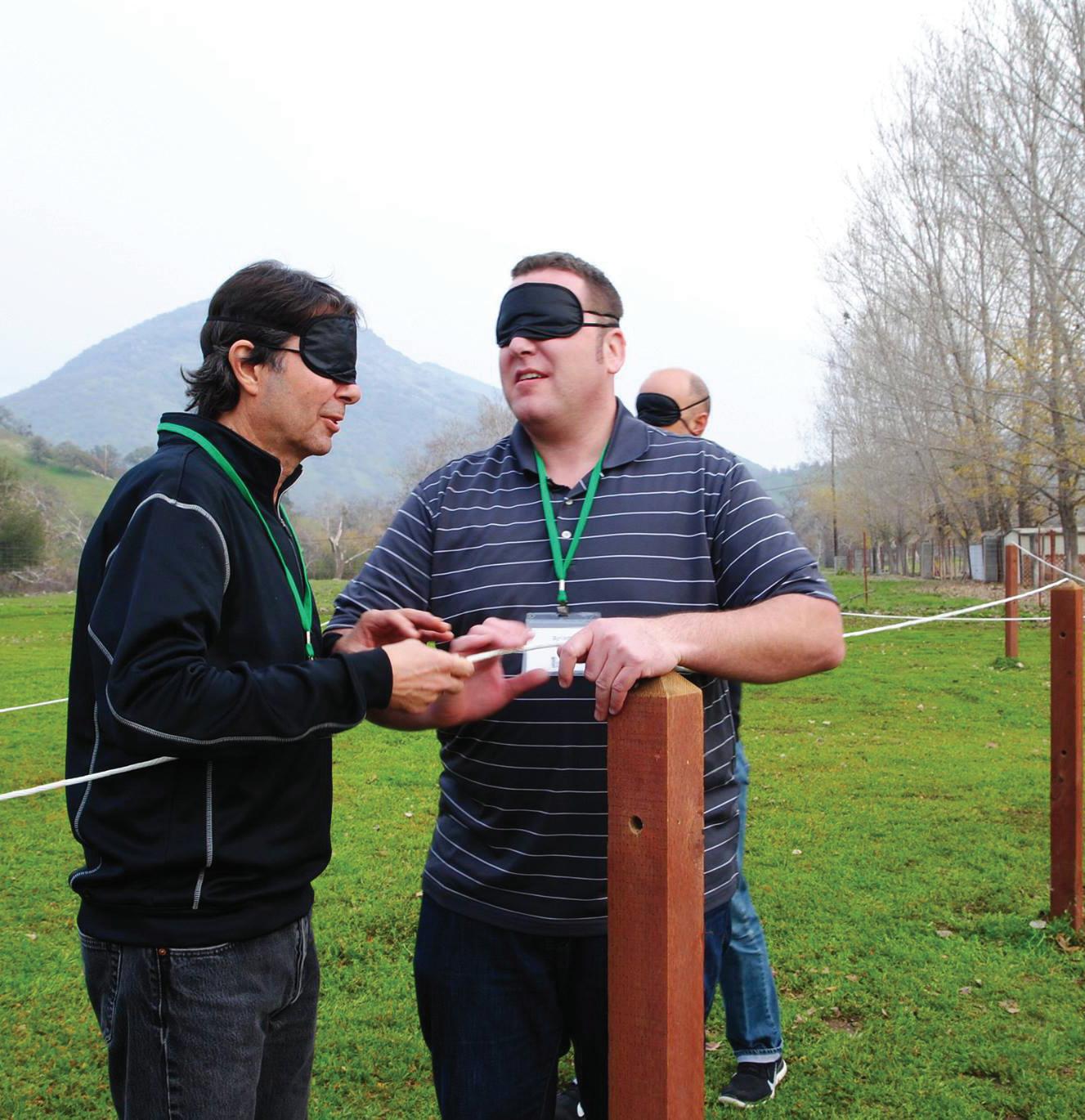
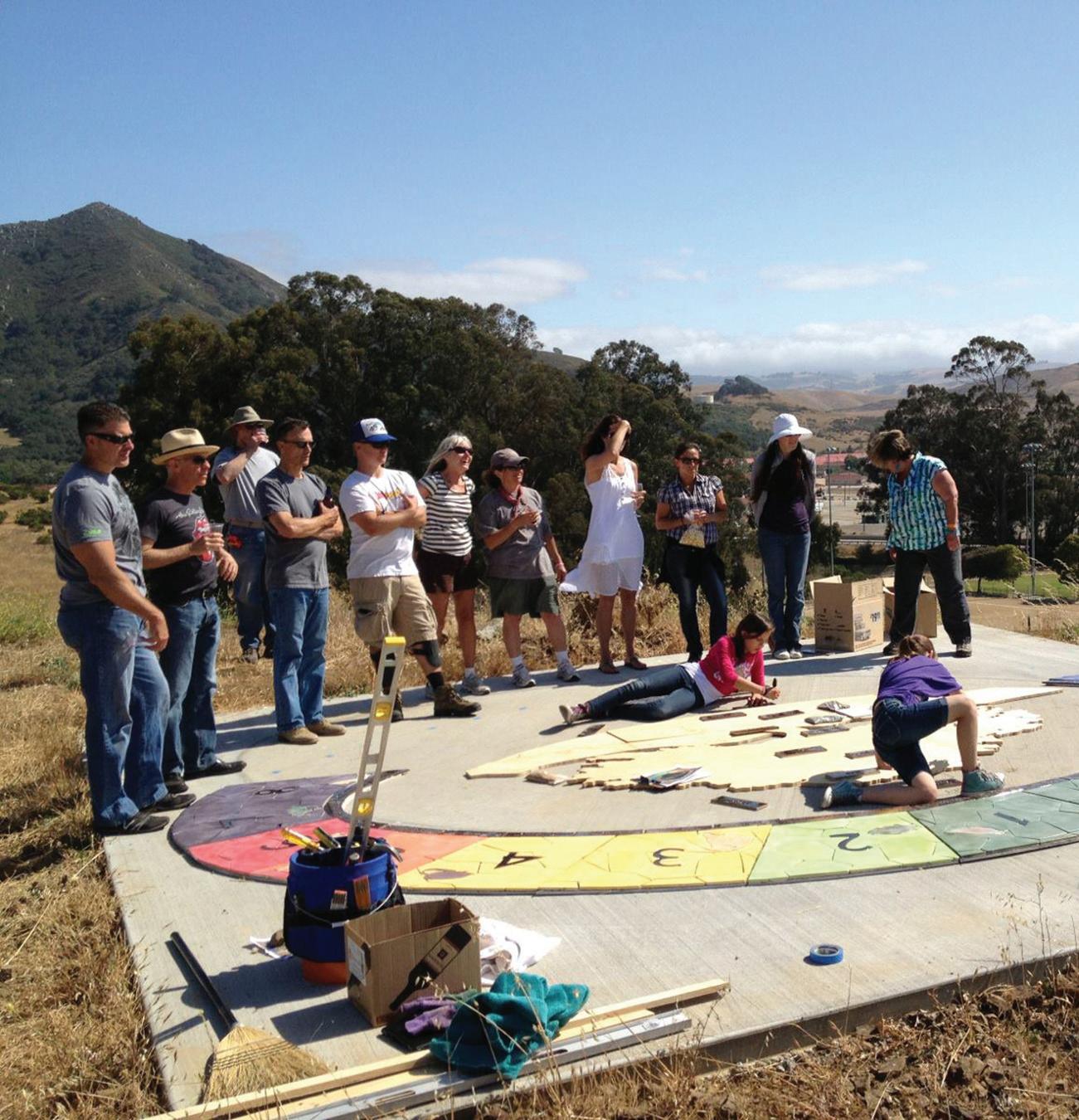
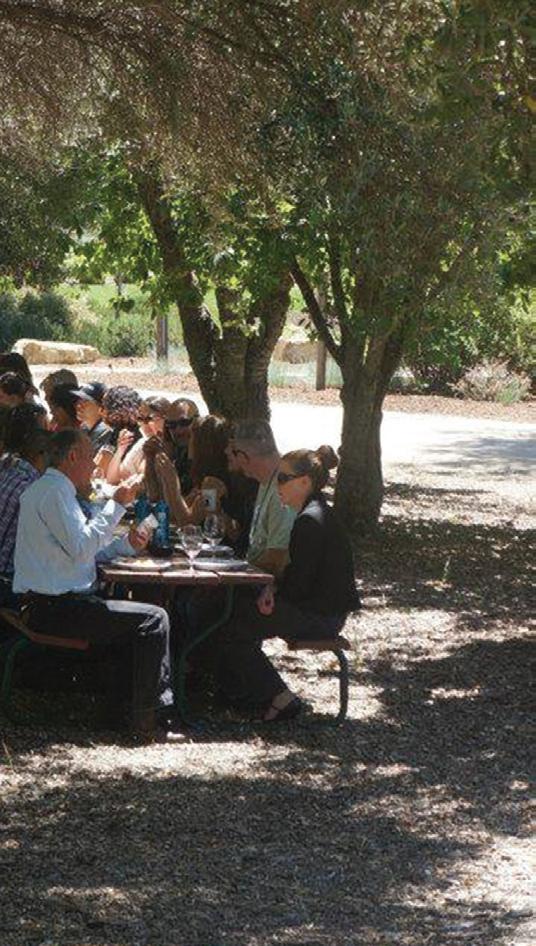
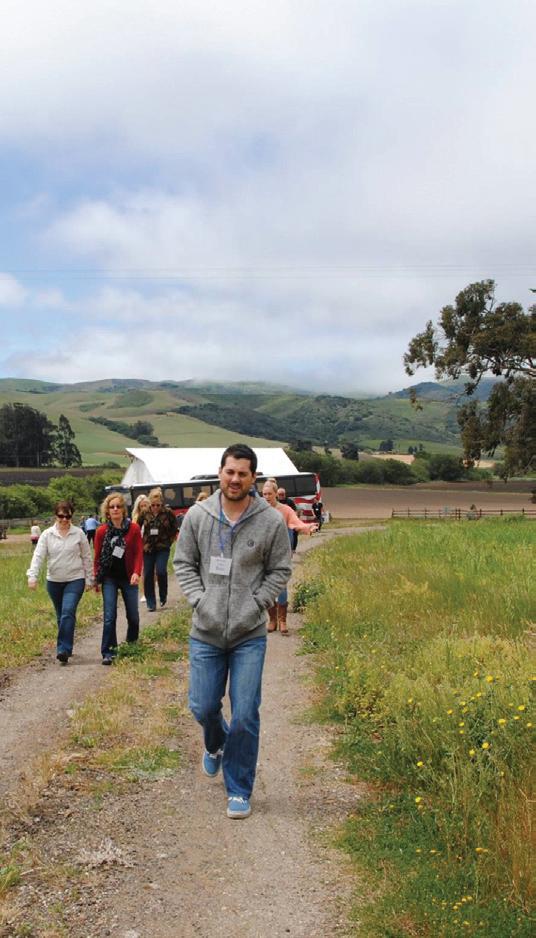
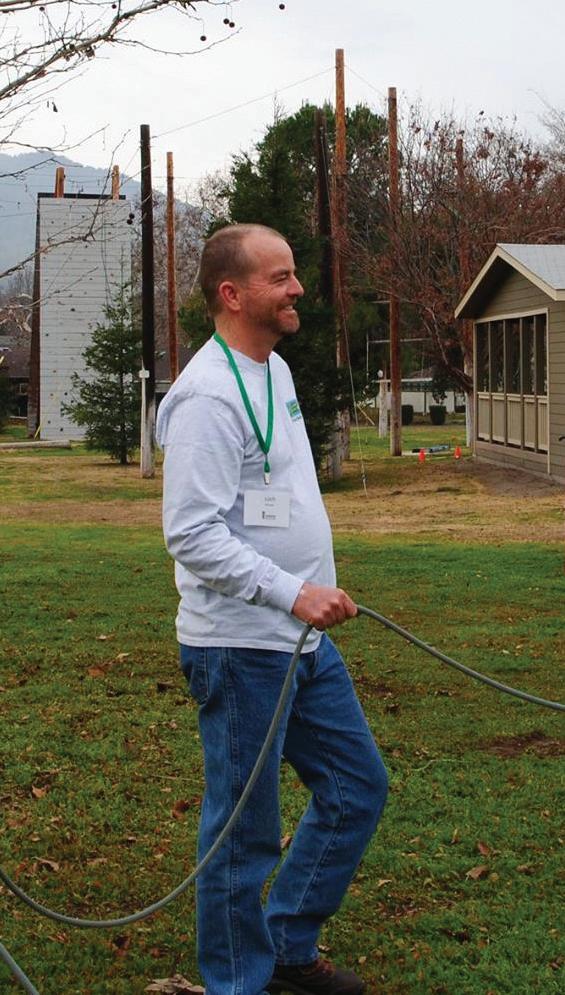
It was the class that included a trio of assistant city managers including DEBBIE MALICOAT from Arroyo Grande, MEG WILLIAMSON from Paso Robles, and TERRIE BANISH from Atascadero.
Formerly an anchor/reporter at KCOY-TV, MEGAN MALONEY now heads up all of the marketing and communications for the five Dignity Health Central Coast hospitals.
As a management consultant, ED COX became a valuable member of the Leadership SLO board who helped the organization craft its first strategic plan.
In addition to playing a trumpet, often in full Mariachi regalia, TOMMY GONG went on to become the County Clerk Recorder where he oversees, among other things, San Luis Obispo County elections.
TERRIE BANISH and her husband dreamed of owning their own winery one day. But, with a background in marketing and a career at Six Flags, the path was unclear. They started with just one little step, and then another. They first bought a house in San Miguel, then relocated. Banish took up employment with the Tribune and her husband started working at various wineries to learn the art of winemaking. Today, they are proud owners of a boutique winery and tasting room in Cambria called Black Hand Cellars.
Making connections and finding a sense of belonging was paramount for Banish, and Leadership San Luis Obispo played a key role in establishing a network, as well as lasting friendships. Banish first heard about Leadership SLO while she was working at the paper. She had been living in North County for six years and during that time was promoted to Advertising Sales Manager. Her bosses encouraged her to apply to because of the networking value and exposure to the inner workings of the community. According to Banish, “Leadership SLO is a great program to go through when you’re new in town. I formed relationships with dozens of other dynamic leaders. Our group was very vibrant, and I got to know so many of them well and benefit from learning next to such influential people. Today I’m still in touch with many of them and it’s amazing that we’ve stuck together. I felt very lucky to be part of Class 16.”
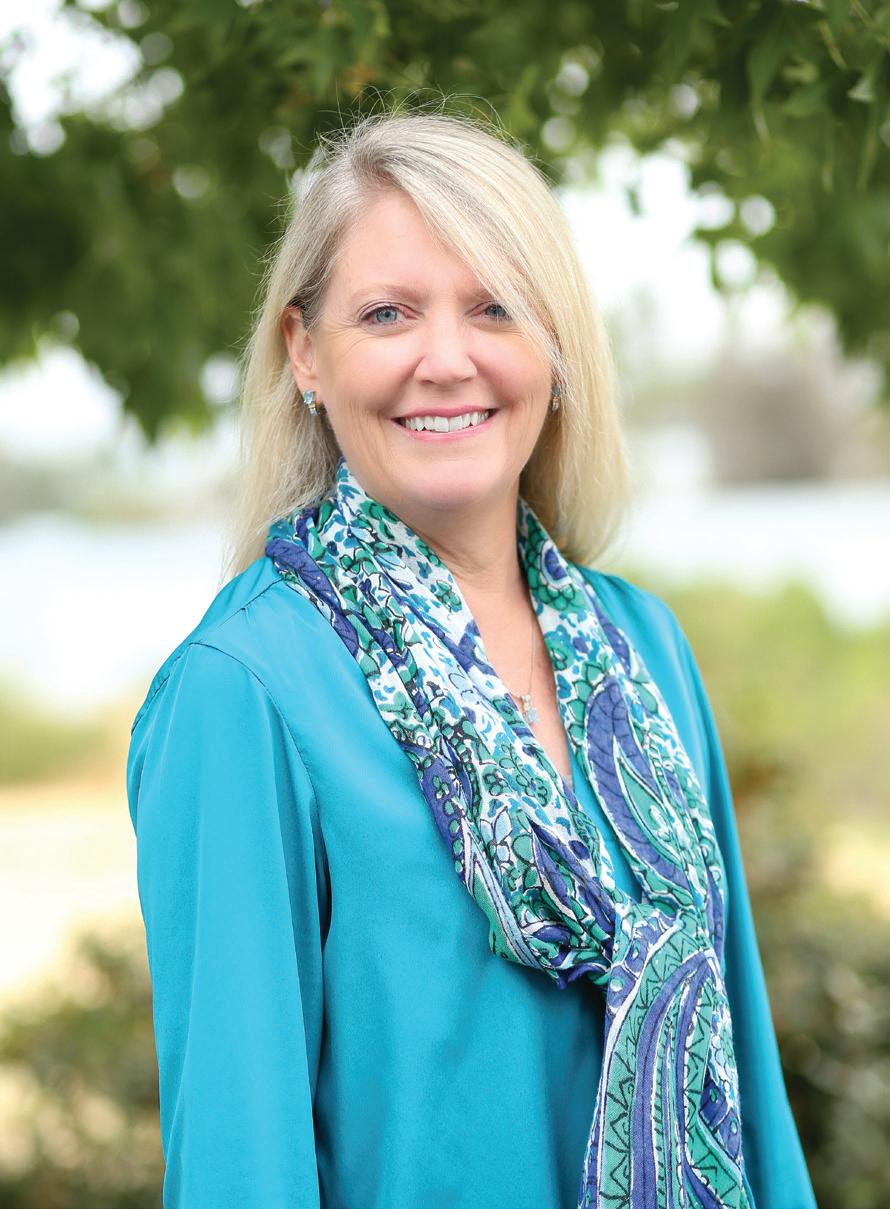
She then collects her thoughts and continues, “Before Leadership SLO, when I would attend Good Morning SLO and other events, I would feel as though I knew no one. After, it was a completely different story. I was amazed at how many people I knew. Leadership SLO certainly opens doors; I can’t emphasize that enough.”
Of all the days Banish experienced through Leadership SLO, she most valued the Government Day. Before the program Banish never really focused on the government sector, but she credits the experience for opening the door to a whole new world. Demonstrating how far she has come since that early exposure, she now serves as the Deputy City Manager for Atascadero. During Leadership SLO’s Government Day, she remembers role-playing with fellow class members while participating in a mock city council meeting.
When not busy working with the City of Atascadero, helping with the family winery, or being a mom, Banish enjoys going to the beach. She loves the water and swimming, and reveals that a perfect afternoon consists of bringing her dogs to the sandy shores. She also enjoys photography, and can be found capturing the beautiful imagery of the Central Coast.
Nancy Allison, Kristi Balzer, Terrie Banish, Stephen Barasch, Nancy Beighley, Neal Berryman, Kena Burke, Lisa Campolmi, Eric Cota, Ed Cox, Meadow DeVor, Shannon Fitzpatrick, Steve Fleury, Roger Frederickson, Tommy Gong, Deanne Gonzales, James Hall, Tracy Hall,Jessica Hamilton, Blanca Jeronimo, Erik Justesen, Justin Maire, Debbie Malicoat, Megan Maloney, Shannon McOuat, Jeff Mercer, Molly Morrison, Margaret Nesby, Jonna Phillips, Marci Powers, Kathleen Richen, Randy Scharlach, April Strong, Meg Williamson, David Yun
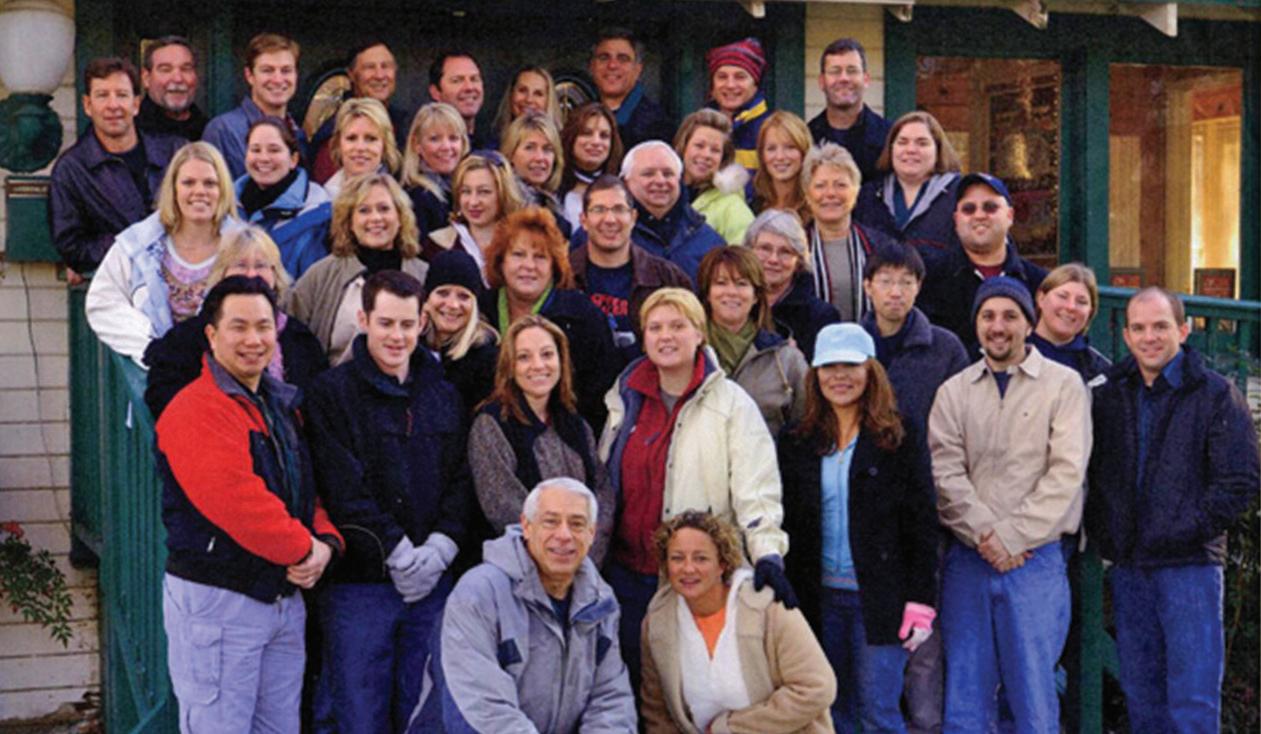











Passionate about maintaining clean air on the Central Coast, DORA DREXLER is now the Supervising Air Quality Specialist at the Air Pollution Control District of San Luis Obispo. National Geographic once highlighted JEREMY HOWARD for his expertise in earthquake preparation and communication. He is currently serving as an advisor to Class 25 were he facilitates its day sessions.
SLO City Biologist FREDDY OTTE is credited for shepherding Class 17’s Legacy Project— the construction of San Luis Obispo’s popular Johnson Ranch trail—through its early development.
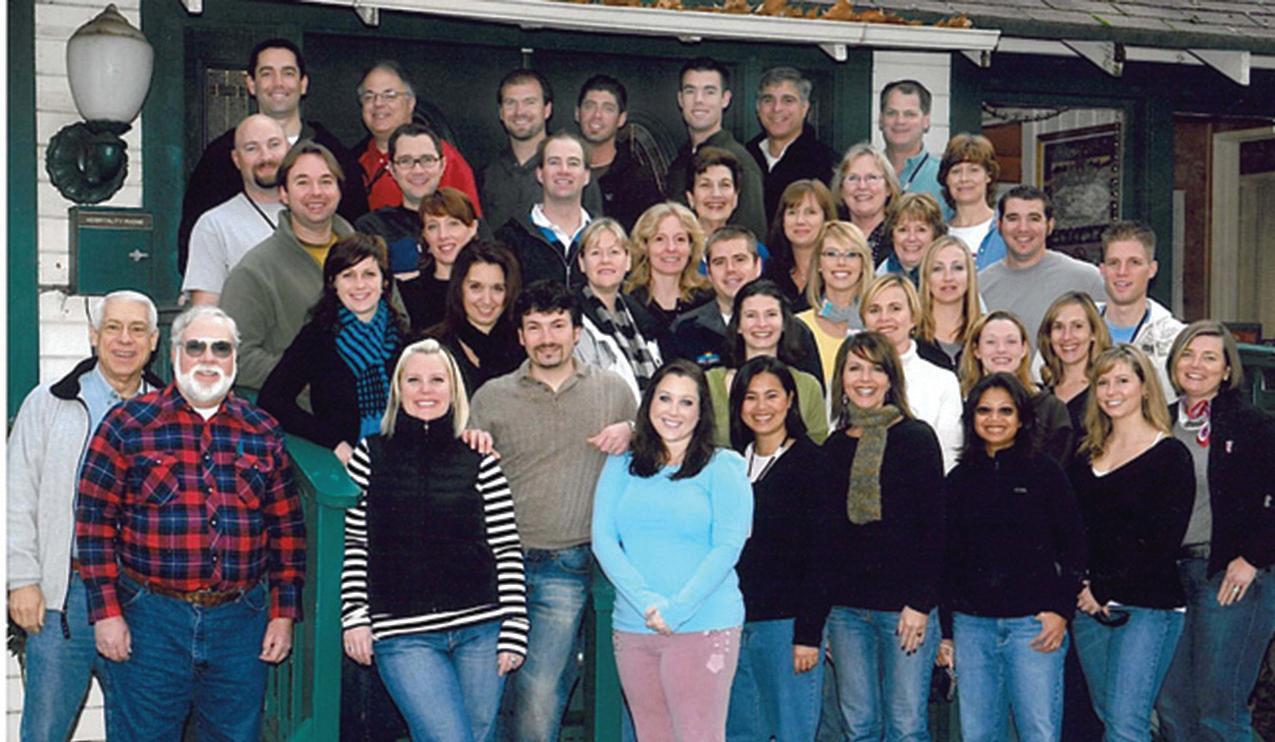
Born in Michigan, raised in the Bay Area, DAVID WHITAKER first came to San Luis Obispo as a Cal Poly student. Majoring in Computer Science, Whitaker’s entrepreneurial spirit came to life through an innovative internet company he and his brother started while still in college. Growing slow and steady, by the time he graduated college in 2001, the Whitaker brothers’ startup paid for their basic living expenses. Through an experience ordering promotional apparel for his business, Whitaker found the process fascinating. And, he realized there was a problem to solve: How to make custom apparel orders more affordable while still looking good. In 2003, the brothers started Left Coast T-Shirt Company. After selling their first venture, the internet company, Whitaker bought his brother out and today is the sole owner of t-shirt operation.
After a year of running the business on his own, Whitaker realized that he needed to better establish himself in the community as the company’s front man. In short, he needed a better presence and better connections. It was during that process that he applied to Leadership SLO and was accepted into Class 17.

“Going through Leadership SLO,” Whitaker begins, “was different than I thought. I had expected it to be more formal leadership training, but was happily surprised by how much more I learned about the community itself. Left Coast T-Shirt Company is community-oriented because it’s always mattered to me, but I always wanted to know more. Leadership SLO gave me that context and helped me understand the connections.”
An eye-opening experience for Whitaker came during the Arts and Education day when he learned about the role of many of the non-profits’ activities in the community. Prior to this exposure, his company had been involved primarily as a sponsor of sporting events, but after gaining this unique insight, he began looking for opportunities to support the arts whenever possible. He points to this new direction as one of the most tangible results of his participation in the program, but it is the intangible qualities that have had the most impact. Whitaker, while he credits Leadership SLO for allowing him to develop the business connections and confidence that he sought, counts the friendships he formed as the most enduring effect of his time with Class 17.
When he is not running his business Whitaker loves to spend time with his family. He also enjoys scuba diving, barbecuing, and traveling.
Grace Allen, Jeneé Arends, Kelli Blackburn, Aileen Cota, Susan Cox, Dora Drexler, Maria Fabula, Karen Fields, Jeremy Howard, Adam Jarman, Erik Jones, Amy Kardel, Wendy Knight, Steven Knudsen, Beau Kramer, Henry Lane, Russ Levanway, Jessica Martinez, Sallie McAndrew, Johden McNamara, Lindsey Miller, Mike Molfino, Amanda Nelson, Sandy Nichols, Freddy Otte, Jennifer Porcher, Morgan Rafferty, Bruce Ray, Agatha Reardon, Robbi Rizzo, Chris Smith, Shilo Terek, Amber Tierney, Barry VanderKelen, Christine Wallace, Lindsay Waugh, David Whitaker, Charles Whitney
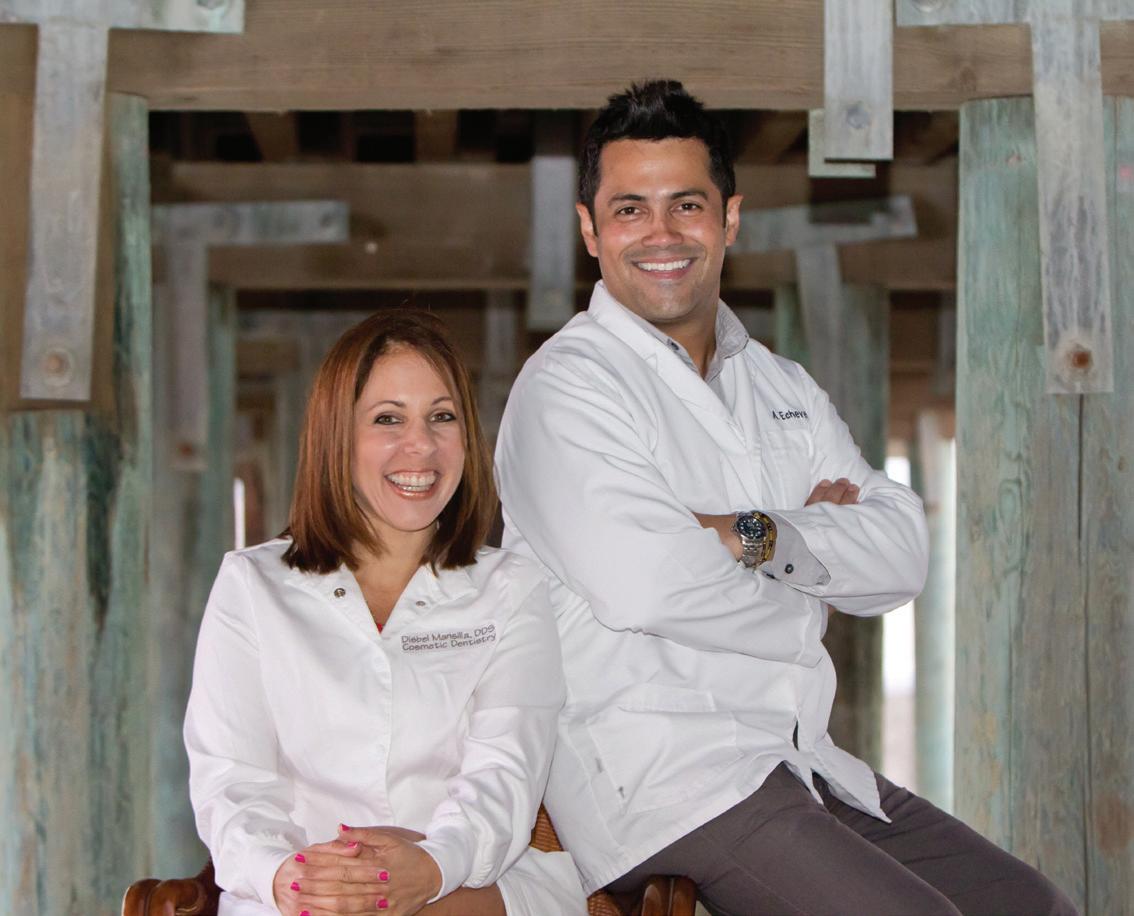



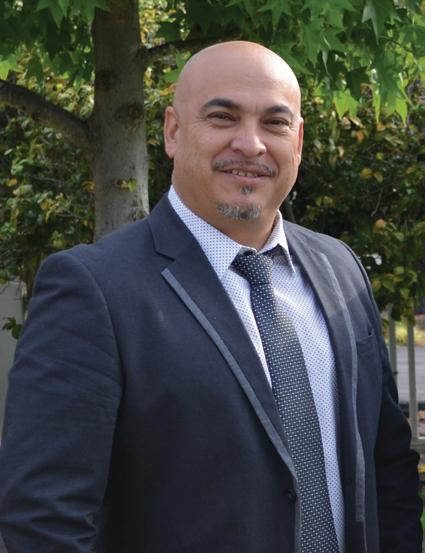
In her introductory class profile, JAMIE MAGON noted that she was recently married and hoped to have kids one day. Eight years later, she balances a life as owner of Promotional Concepts and the mother of two young daughters.
Bicycle enthusiast ADAM FUKUSHIMA moved from the Bike Coalition to Cal Trans, and most recently to the City of San Luis Obispo, where he is now employed as the Active Transportation Manager.
When a friend reached out to ERIK LINKUGEL to help build a new trail, the avid outdoorsman happily replied, “Yes.” He found himself shoulder-to-shoulder with Class 17 during the completion of their Legacy Project, helping to carve out what is now Johnson Ranch Trail. This was his first introduction into Leadership SLO. While shoveling dirt, he overheard the stories they shared and was hooked. He applied for Class 18 and headed off to the weekend retreat the following January.
Moving to San Luis Obispo as an Industrial Technology student, Linkugel grew to love the beauty of the Central Coast. After graduating with a Masters, Linkugel got a job with PG&E and headed to the Bay Area for a year-and-a-half. When a position opened up in San Luis Obispo, he took the opportunity to move back.
Six years into his role at PG&E, Linkugel was already pursuing ways to volunteer in the community. At the time he was becoming increasingly involved in his Rotary club and the Chamber of Commerce, but he wanted to learn more about the community. For Linkugel, Leadership SLO was a natural fit, a logical progression of his career and his involvement in the community.
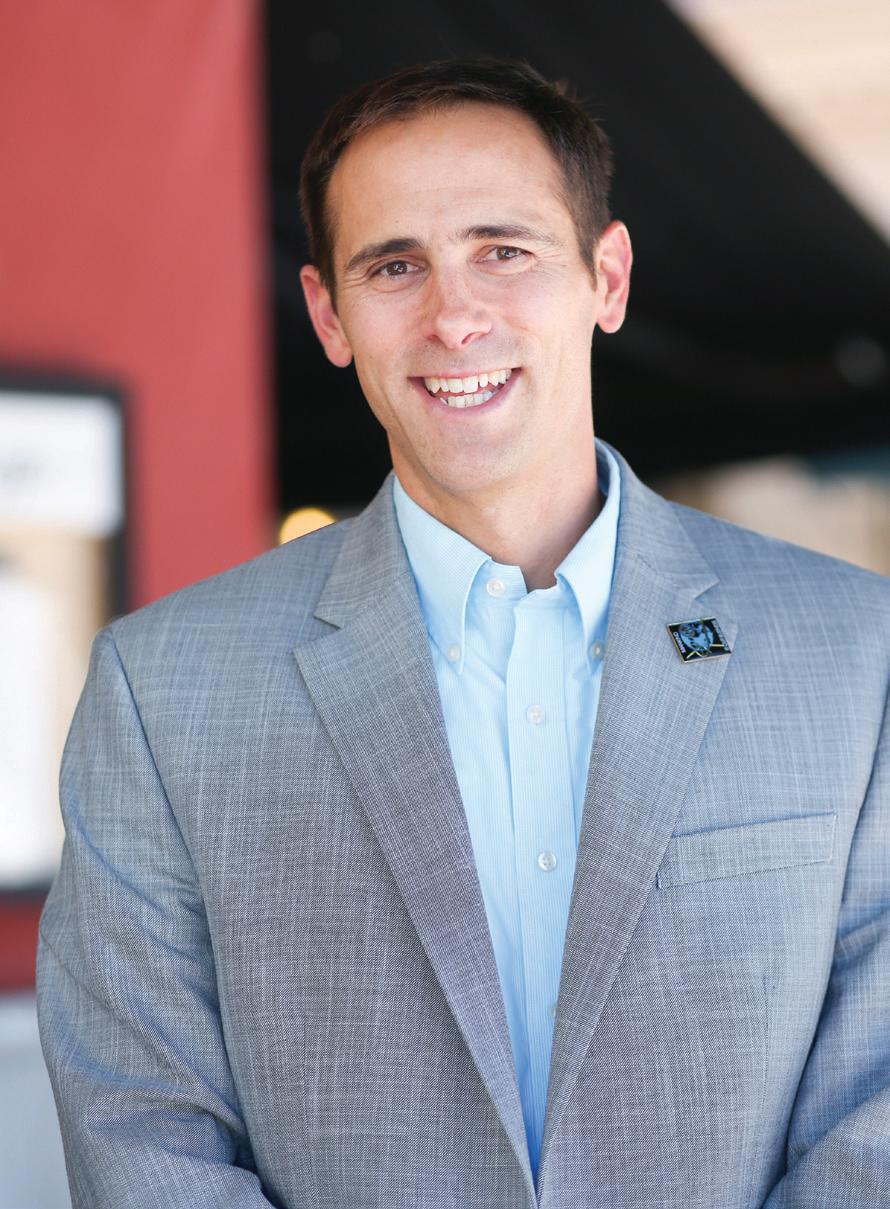
Looking back, Linkugel reports that he was impressed with the diversity of his class. It wasn’t full of young, thirty-somethings as expected; the ages of the 36 classmates varied as dramatically as the industries they represented, and the opinions, and life experiences they each had. It was an amazing year of being part of a group that reached consensus, or at least worked together to come to an adequate compromise. Laughing, he recalls, “It can be a challenge, to say the least.”
The day that resonated most for Linkugel was dedicated to learning about the nonprofit sector in the community. The over-arching theme was the many non-profits doing valuable work in the community, most of which were under-funded and relied heavily on volunteerism and fundraising to survive. Linkugel recalls an exercise his class went through that made him aware of how hard it is to pick one non-profit over another. The class was challenged to review a list of local non-profits that all needed funding, and to award limited resources to a select few. “One of the most inspiring parts about Leadership SLO is realizing how many ways there are to be involved and make a difference. There are tons of opportunities. Being a part of Leadership SLO certainly solidified to me that I wanted to be more involved and impact our community,” says Linkugel, who saw the bright side in the gap between community need and available resources.
Since his time in Leadership, Linkugel went on to serve in just about every board and subcommittee with the SLO Chamber of Commerce, remained involved with the Industrial Technology Advisory Board at Cal Poly, became President of his Rotary club, served on the Green Energy Cluster at the EVC, and continues to participate in PG&E’s various community volunteer programs. In his spare time, Linkugel participates in triathlons. Growing up in the foothills of the Sierras, he has a deep passion for backpacking, hiking, and just about everything in the natural environment. He also enjoys photography and music, playing piano and guitar.
Brooke Azevedo, Jay Beck, Anna Boyd-Bucy, Julie Butler, Joseph Castro, Linda Della Pelle, Lisa Dosch, Cynthia Eastman, Kevin Elder, Brigette Elke, Adam Farber, Al Ferguson, Adam Fukushima, Sarah Hedger, Christian Henderson, Doug Heumann, Sergio Holguin, Cory Holman, Amber Johnson, Tracy Lang Wood, Kate Ligler, Eric Linkugel, Jeff Little, Tom Lorish, Rodger Maggio, Jamie Magon, Carrie Mattingly, Cody Mead, Leonard Moothart, Steven Polk, Terri Rademaker, Marcia Torgerson, Linda Villanueva-Quesinberry, Ariel Weinger, Tyler Weterbruch, Sharon Whitney










Formerly with Collaboration, a San Luis Obispo-based small business consultancy, ERIC HUBBS is now employed by Google where he is the Global Performance Display Product Lead in its Detroit office.
Following their Leadership SLO experience, two class members launched their political careers: CHRISTINE JOHNSON serves on the Morro Bay City Council and DAN RIVOIRE sits on the SLO City Council.
Serving now as the Executive Director of the Jewish Community Center, LAUREN BANDARI was pregnant with twins during her Leadership year and, remarkably, missed just one day session as a result.
Long distance swimmer, DAVE VAN MOUWERIK once swam 12 miles from the Channel Islands to Santa Barbara. Last year, at 57 years old and wearing only a Speedo, he became the first person on record to swim the length of the Estero Bay—14.4 miles from Cayucos to Montana de Oro in just over 8 hours.
Growing up in Wisconsin, driving a Bronco that got just six miles per gallon, seems an unlikely start for someone who would eventually become an environmental leader living on California’s golden coast. ERIC VEIUM came to Cal Poly as an Industrial Engineering student and today is the Energy & Sustainability Analyst for the university.
While at Cal Poly, Veium became involved with a program called Poly Escapes, a series of student-led outdoor adventures, which fostered his passion for preserving and protecting the environment. He then joined the environmental networking group Empower Poly Coalition and attended the Council of Parties in Copenhagen to discuss solutions to climate change as a student delegate. After witnessing negotiations fail largely because of the lack of support from the U.S. and China, Veium returned to San Luis Obispo determined to start the conversation about climate change in his own community.

After graduating from Cal Poly, Veium knew that to stay in this area he would need to create an opportunity for himself, so he started a service called the Green Hand Handyman. He began taking on odd jobs, which often led him to like-minded people, and clients often transformed into friends. Spurred by a research project for renewable energy Veium had heard of, he turned to Leadership SLO. “Coming out of the disappointment of Copenhagen, I used that momentum to engage with my local community. The timing of Leadership SLO was perfect,” explains Veium. So, he piled into a car with four complete strangers and headed eastward toward Wonder Valley, in the Sierra Nevada foothills outside of Fresno, where he met the rest of his new classmates at the weekend Leadership SLO retreat.
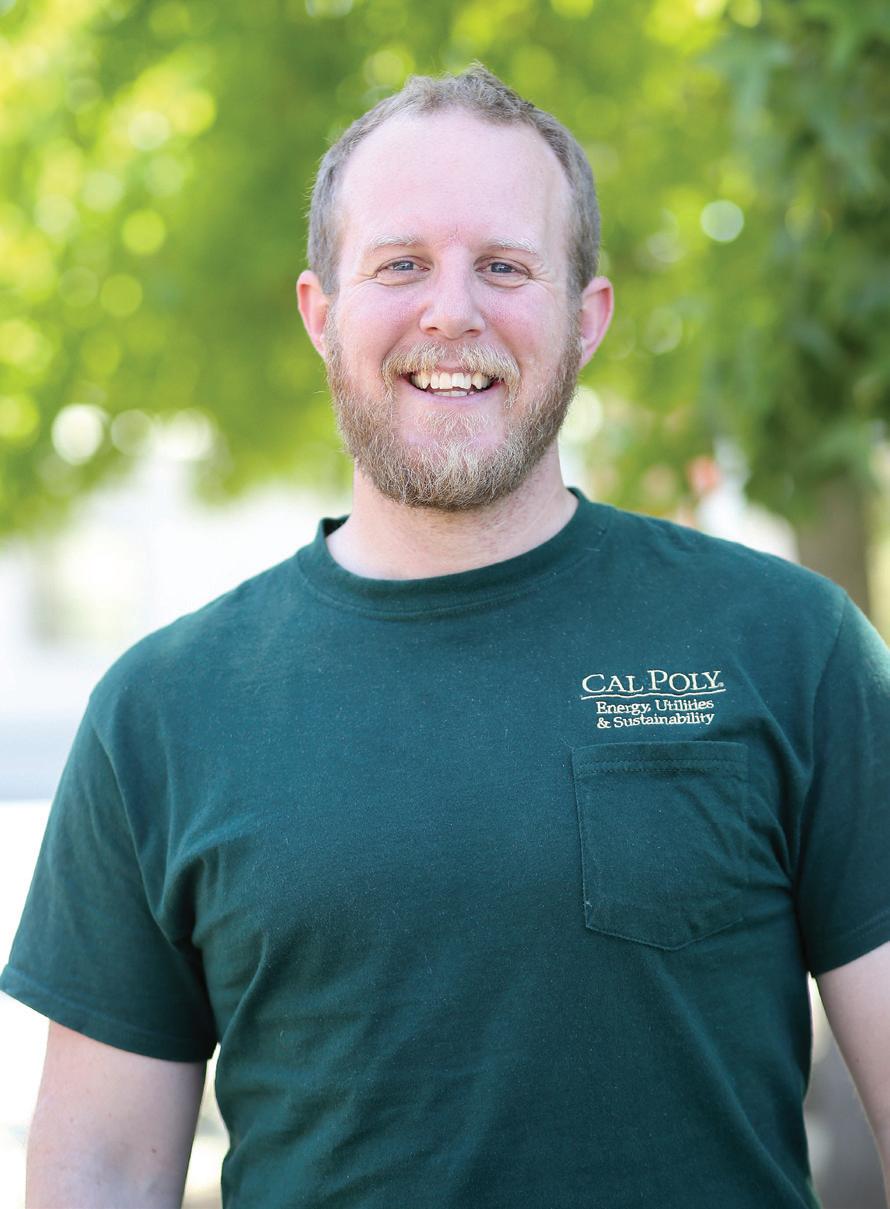
The program drives awareness on a variety of important issues and topics impacting the county and helps its participants build connections with other leaders. But, it was frustrating for Veium at times, because keeping up with the robust schedule for each day often meant not having the time to finish the conversation, and follow through to find the solutions to real problems. Yet, in his view, “It fires members up to really want to engage with the content, which leads to better informed and passionate citizens.” Veium found Government Day fascinating. And, after listening to a number of elected officials speak about their roles and key decisions, he became more clear on what sort of changes were possible locally. Yet, Veium’s sentiments are consistent with most of his classmates when he shares that it is the friendships formed that make the lasting impact. “The most powerful part of Leadership SLO to me are the relationships. For me, meeting Sandi Sigurdson [Leadership SLO’s Executive Director] was the highlight. She is like a second mother to me now; and, to this day, if I’m in trouble, I turn to her. She’s been very influential to me,” Veium expresses.
During his free time, Veium is enjoying his new role as a father of his six-month-old twin boys, Hans and Walden. He loves mountain biking, travel, adventure and enjoys meeting new people.
Mark Anelli, Lauren Bandari, Stacy Bartlett, Jim Black, Meagan Callahan, Charles Dellinger, Whitney Diaz, Lesley Dierks, Shannon Downing, Hal Hannula, Kevin Harris, Eric Hubbs, Keenan Jacobsen, Christine Johnson, Sharon Juhnke, Aubrey Kachmarik, Phil Koziel, Ashala Lawler, Morgen Marshall, Joy Molenaar, Trevor Moriarty, Scott Morrell, Kandy Noel, Suzanne Parker, Dan Podesto, Lisa Ramser, Dan Rivoire, Laurie Saldana, Teresa Tardiff, Holly Todd, Ardith Tregenza, Hillary Trout, Dave Van Mouwerik, Eric Veium



After her Leadership experience, ROXANNE BANTA reconsidered her career path and decided to ditch her marketing job to follow her heart by opening Smiling Dog Yoga in San Luis Obispo.
Frequent Central Coast non-profit board mentor and special events producer, DWYNE WILLIS went on to open SLO Provisions, a popular restaurant on Monterey Street in San Luis Obispo.
Today, SLO City’s Water Resource Recovery Facility Chief Plant Operator PAM OUELLETTE is tasked with keeping the drinking water coming from local taps clean and safe and now guides classes through the water treatment facility during Leadership SLO’s Sustainability Day.
Born and raised in San Luis Obispo, LORI BJORKLUND-SILVA treasures her hometown. She has a long history of working for community-oriented organizations, currently holding the position of Member Accounts Manager for the San Luis Obispo Chamber of Commerce.
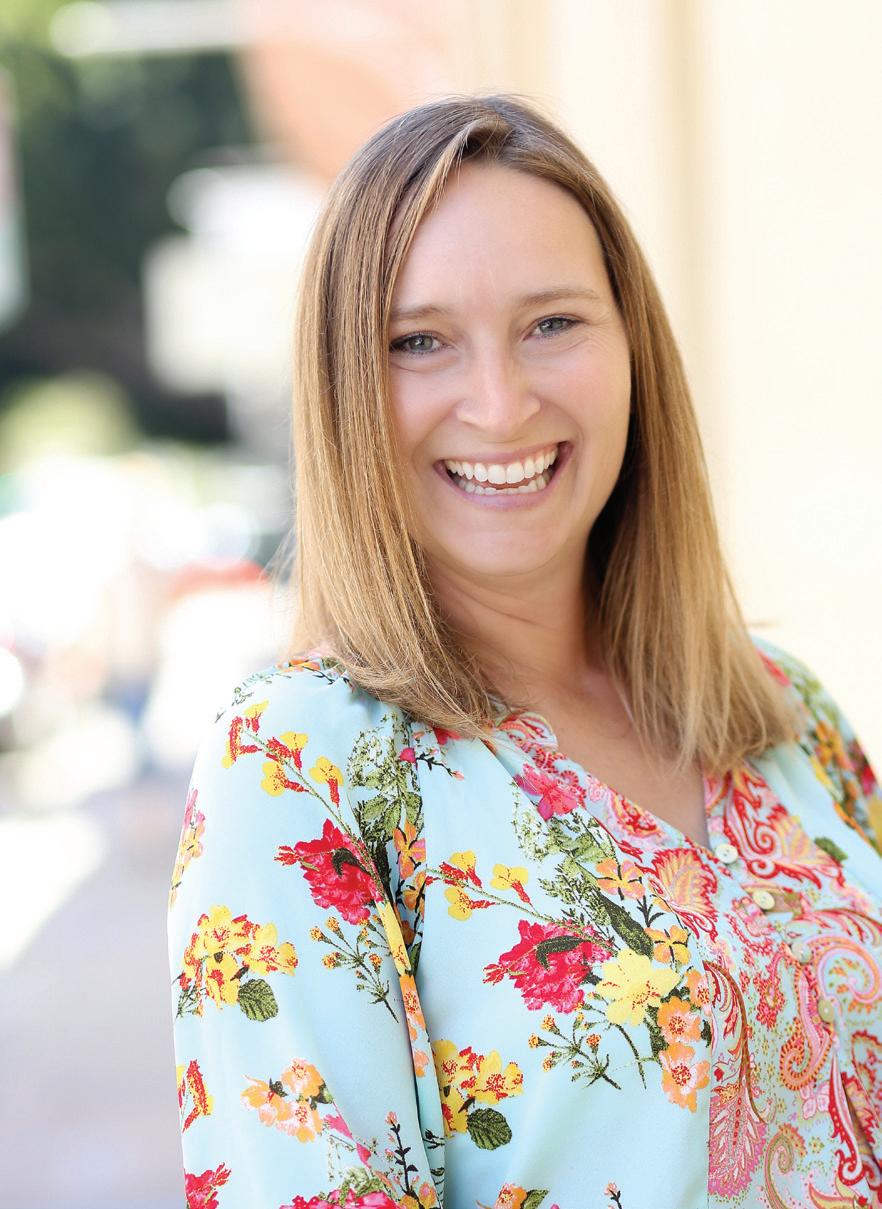
It was six years into her role at the Chamber that Bjorklund-Silva finally decided, with encouragement from then CEO Dave Garth, the timing was right to apply for this popular program. “It’s easy to think that since I grew up here that I already know about our county,” reflects Bjorklund-Silva. “But I was surprised how much I learned from Leadership SLO. For example, it may seem strange to admit, but I had no idea before this program how many large and successful companies thrive here, yet manage to stay under the radar. Representing the business community at the Chamber, this was so valuable to learn.”
One of the key takeaways for Bjorklund-Silva after going through the program was that all businesses, small or large, want to stay in San Luis Obispo and they work hard to do so. It was also clear that the leaders of these businesses and their employees, “want to be happy and live the SLO Life.”
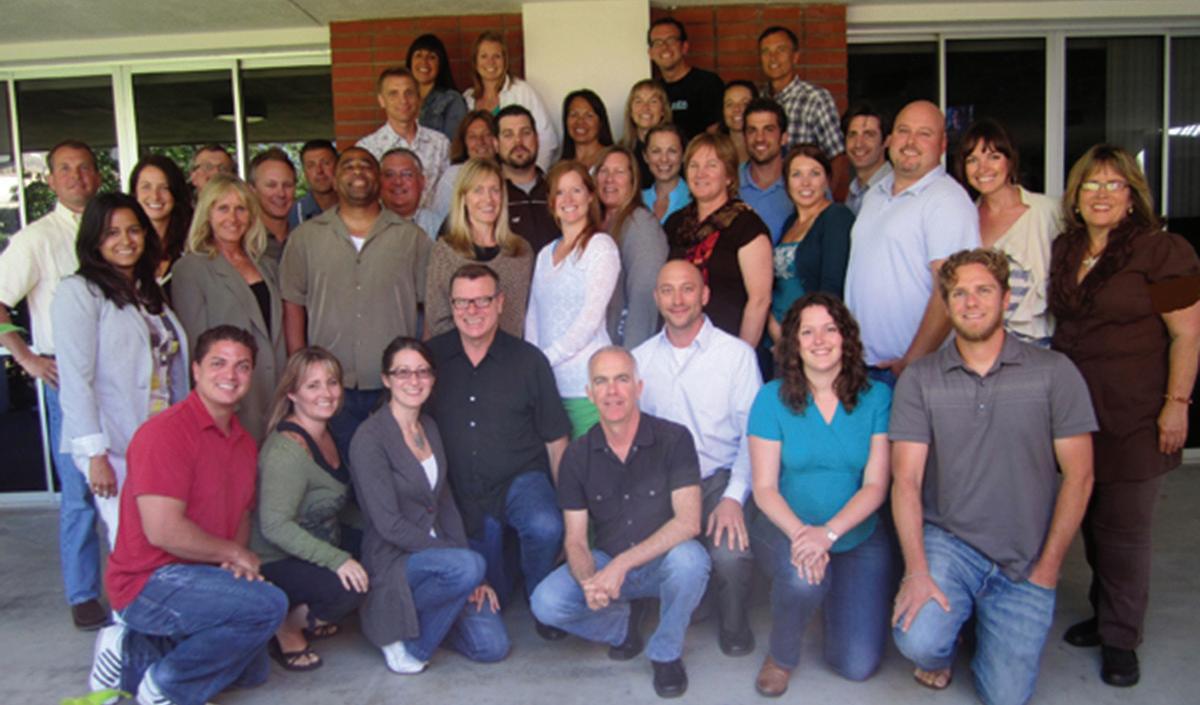
Of all the sectors showcased each meeting, it was the Criminal Justice Day that stood out to Bjorklund-Silva. With an in-depth look at local issues and solutions for implementing justice, this day is best known for the tour of the SLO County Jail. To walk through it, see the cells and where the inmates live for months, and even years, is eye-opening. Bjorklund-Silva originally thought it would be a bit more “cushioned,” but it was bleak and the day felt heavy. While she said she did not enjoy the experience, she was thankful to have it. She remembers being surprised by learning about the amount of recidivism, and the need for a better way to care for those with mental disabilities.
Leadership SLO inspired Bjorklund-Silva to find her voice at work and to share her opinions more freely. As someone who describes herself as a person who shies away from confrontation, she shares that the experience with Leadership SLO gave her the confidence to express her opinions. In addition, she gained the confidence to become involved as the Treasurer of the SLO High School Ag Youth Boosters Club. Realizing that she has value to bring to the table, and an ability to positively impact the community and her workplace, has been a great takeaway.
In her spare time Bjorklund-Silva loves being outside, taking her dogs to the beach, and just about anything that involves taking in the beauty of the Central Coast.
Alec Ramsey, Aletha Silverstein, Andrene Kaiwi-Lenting, Ashley Lopez, Bart Devaney, Bob Stets, Brian Hermanson, Carissa Nepstead, Carl Nelson, Chris Staley, Christina Jacobsen, Cory Karpin, Dawn Hutchison, Dwyne Willis, Ellen Goodwin, Erik Wright, Everette Brooks, Hans Poschman, Jaimee Frankian, Jason Grote, Jeff Garza, Jeff Van Kleeck, Jimmy apRoberts, Karen Crabtree, Kari Kittinger, Kathryn Rogers, Lara Lehmer, Lauren Cross, Lee Johnson, Lori Silva, Nicole Black, Pam Ouellette, Roxanne Banta, Ryan Caldwell, Tara Malzone, Zach Brenner





 BY JAIME LEWIS
BY JAIME LEWIS
ariety is the spice of life, and what better time to get spicy than in the heat of summer? This issue I’m featuring a few wildly unrelated, but very tasty treats that are tickling my fancy this season.




High Street Deli is SLO’s cult favorite for fat sandwiches on fresh bread, made in an itty-bitty wedge of a kitchen. I’ve favored their flavors (and admired the cheek of their, ahem, marketing) for years, but recently discovered that they’ll make any of their signature sandwiches into a salad or lettuce wrap. That seems like a no-brainer for sandwiches like the Turkey Pesto (roasted turkey, melted sharp provolone, homemade basil pesto, mayo, tomato) or the Tropical Vacation (roasted turkey, jalapeño Havarti cheese, sprouts, avocado, honey mustard and cranberry), but what about my favorite, The Heizenberger Meatloaf Sandwich?


Listen up: after trying it once, I am forever hooked. The meatloaf—from 100 percent grass-fed beef, smothered in Cheddar and flecked with olives and red pepper like something your Italian grandma makes—provides the centerpiece for a host of veggies like sliced tomatoes, carrot ribbons and cucumbers on a bed of Romaine lettuce. Along with the salad comes a side of chipotle mayo and barbecue sauce which, when combined, makes the perfect creamy-spicy dressing.
Maybe a meatloaf salad just sounds a little too confusing for you. I get it. But do yourself a favor and try the salad or salad wrap option on your favorite sandwich at High Street. I doubt you’ll be sorry. >>



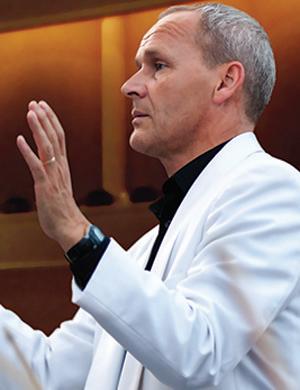










A re-boot of the stalwart Vieni Vai Trattoria, Flour House Pizza Bar and Pasteria brings authentic, flavorful, barely blistered pizza napoletana, Euro-style cocktails and a modern vibe to downtown SLO.
If you’ve ever had the pleasure of eating real pizza from Naples, you will be unfazed by Flour House pies, mastered by Naples native Alberto Russo. I, for one, can’t get enough of the chew and flavor of the crust, a wonder to behold. But if you’re accustomed to an almost-cracker-ish crust loaded with toppings, Chef Alberto’s soft, pillowy pizza will surprise you. It’s made with a very basic array of simple ingredients like Cinque Staggioni flour (the Holy Grail of pizza flours in Italy), San Marzano canned tomatoes (another Holy Grail), and one or two toppings like mozzarella di bufala (buffalo’s milk mozzarella) and speck (a smoked and salted prosciutto). Once assembled, the pizza fires in a Stefano Ferrara oven—the only one between San Francisco and Los Angeles—for a hot few minutes before plating. My favorite is the Queen Margherita, in which each of the few ingredients sings a pitch-perfect, harmonious tune.

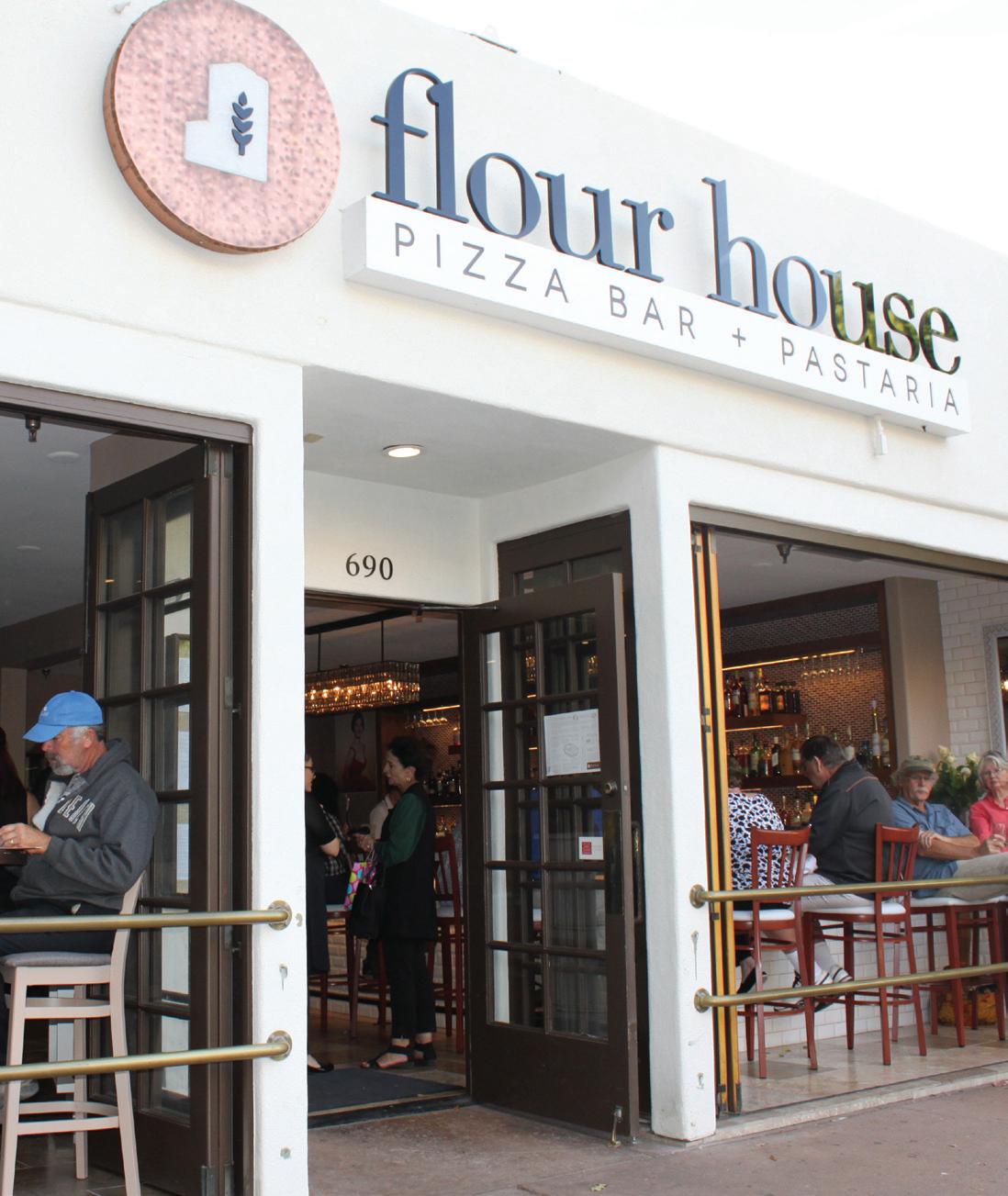
Flour House offers local and Italian wine as well as domestic and Italian beers, but the real attraction, drinks-wise, is the cocktail menu and what’s called “aperitivo hour.”
“It’s similar to an American happy hour, but more of an event,” says co-owner Gessica Russo, describing how Italians purchase a cocktail like the Negroni, Americano or Aperol Spritz, and receive complimentary small bites like pizzette, crostini, and various salads. “Italians live life on the street, enjoying the opportunity to dress up and socialize. Aperitivo hour is an extension of that. It’s the best hour in Italy.” Bringing the aperitivo hour concept to SLO—another streetfriendly scene—Flour House offers complimentary snacks with classic and creative cocktails from 3:00 PM to 5:30 PM on weekdays. >>




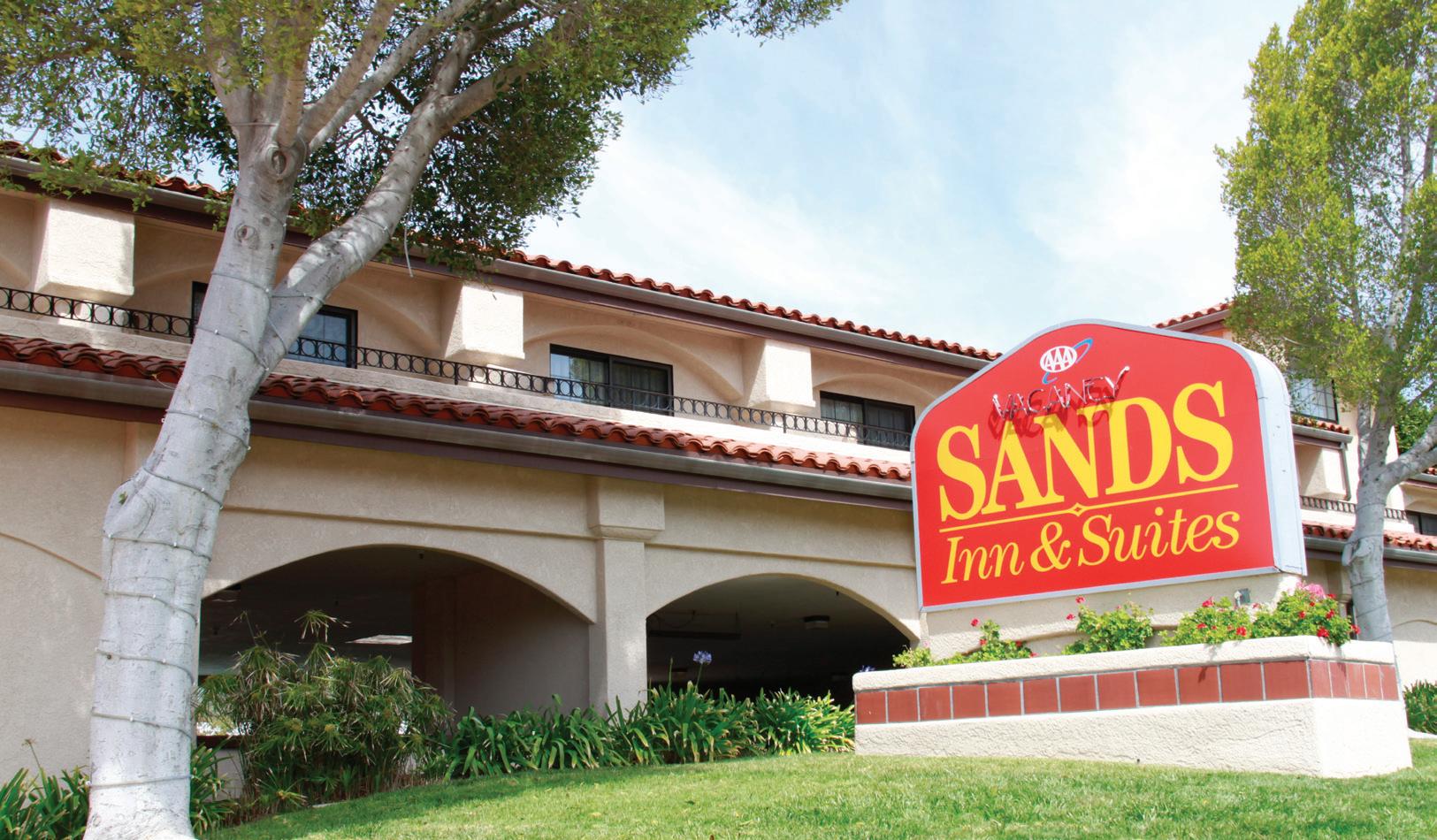

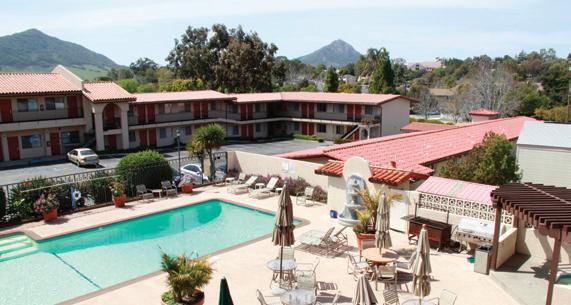



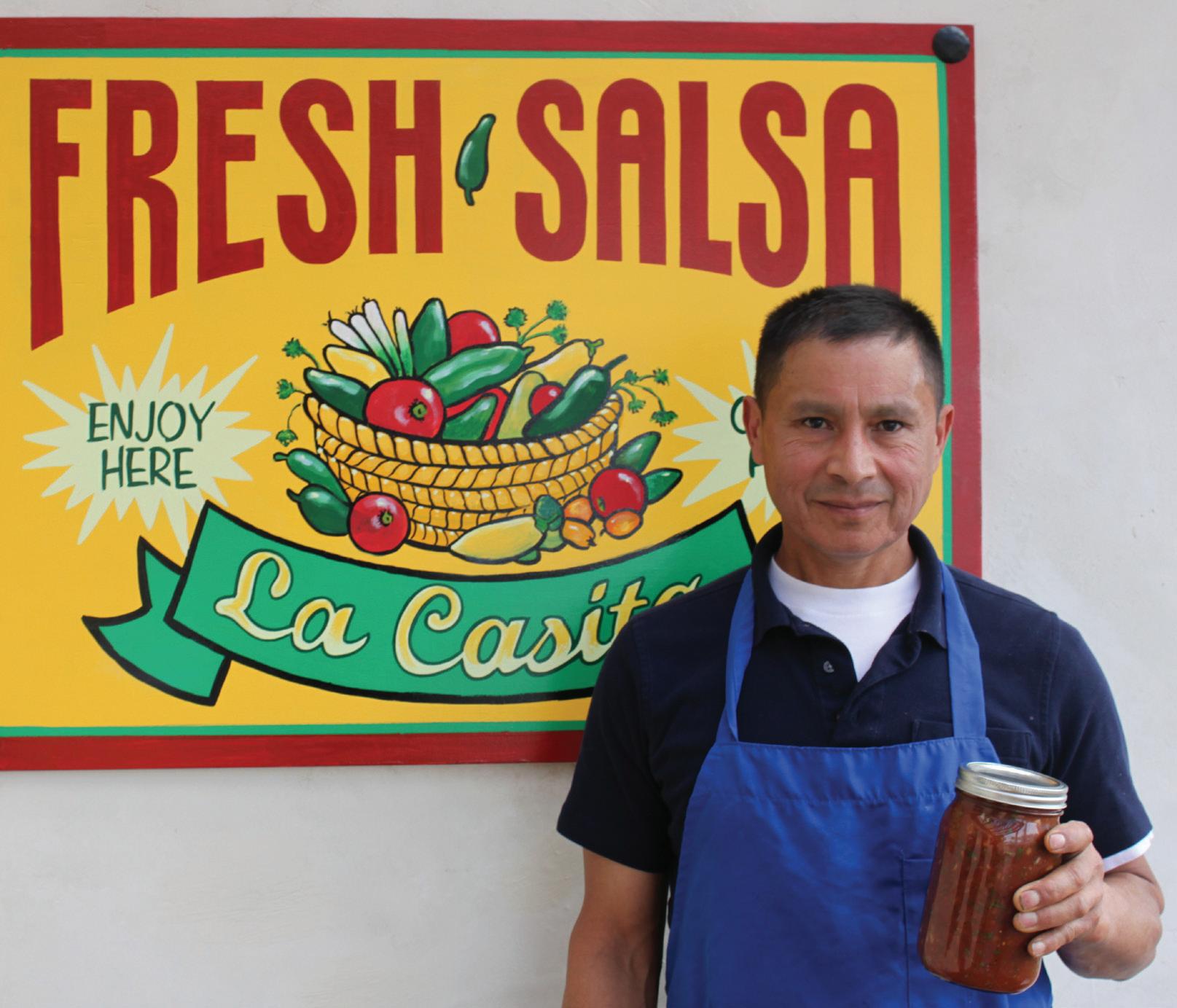

I live in SLO, but my heart beats in Los Osos— on 9th Street, to be exact. Established in 1988 by brothers Martin Michel and Saul Michel, La Casita Mexican Restaurant makes the best salsa I’ve ever tasted. No, really.
Why is it the best? For starters, it’s complex with multiple ingredients like tomatoes, jalapeños, garlic, Spanish Bay leaves, cilantro and Mayan onions (Peruvian relatives of the sweet Vidalia onion). Secondly, it offers a significant kick without sacrificing depth of flavor. And last, it offers a judicious amount of char owing to the secret ingredient, slow-roasted Tien Tsin Chinese peppers. “They have a nice little hidden bite,” says Martin, who, along with Saul, makes 50 gallons of salsa daily.
I would pay serious money for this salsa, but here’s another reason it rules: it’s $4.50 for 32 ounces. Bring your own mason jar and Martin will fill it up and throw in a big bag of chips for an extra $2. For a dreamy afternoon, haul your spoils out to the Baywood Pier, and indulge in a chip binge by the ocean, thanking God, with every bite, for the SLO Life.








Chef Jessie Rivas shares his classic oyster po’ boy sandwich—for those who don’t like their oysters raw. New Orleans’ first po’ boy makers settled on a roll that is light and mild, so that it doesn’t overpower the tender oysters inside, yet is substantial enough to keep its shape when the sweet juices are released from their cornmeal crust.
 BY CHEF JESSIE RIVAS
BY CHEF JESSIE RIVAS

Hot pepper sauce is the traditional condiment on an oyster po’ boy. For a little heat, top off your sandwich with a couple shakes of Crystal Louisiana Hot Sauce.
15-25 shucked oysters, depending on size 2 cups buttermilk 1 cup cornmeal ½ cup all purpose flour ¼ cup corn starch 2 Tbs Old Bay Seasoning 1 tsp garlic powder 1 tsp onion powder salt and pepper to taste canola oil for frying
Serve with: pickle slices tomato slices shredded lettuce hoagie rolls
Remoulade Sauce: 1 cup mayonnaise ½ cup ketchup 3 Tbs Old Bay Seasoning 2 Tbs lemon juice 1 medium dill pickle diced 3 Tbs minced shallots salt and pepper to taste

Oyster Directions: Soak shucked oysters in the buttermilk. Mix all dry ingredients in a large bowl or baking pan. Dredge the oysters in cornmeal mix, just until coated. Fry in canola oil at 350° until golden brown, about 3-7 minutes.
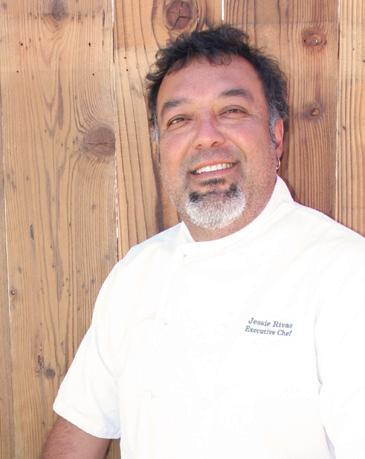
Remoulade Directions: Mix all ingredients and ½ the lemon juice. Add rest of lemon juice, salt and pepper to taste and set aside.

Po’ Boy Assembly:
Lightly toast hoagie rolls. Layer 5 slices of tomatoes, 4 slices of pickles, a layer of shredded lettuce, 3-4 fried oysters (depending on size) and finish with the remoulade sauce.

As our country is stepping away from mass-produced macrobrews, a funny thing is happening—we’re pioneering new taste and aroma experiences.
BY BRANT MYERShat used to be relegated to the back of liquor stores and chosen based on what our dads or grandpas used to drink, eccentric beers with exotic ingredients are coming to the forefront of beverage retailers, showcasing the newest, latest and sometimes weirdest, at the entrance to their store or on the counter next to the register. The owners proudly displaying their prized new releases like trophies of the industry.
Exotic ingredients and cutting edge brewing techniques come with a cost, though. You don’t just run down to the passion fruit and cheremoya store to pick up some juice and dump it in the fermentation tanks. Some of these bottles can run upward of twenty dollars each, so with the cost of admission for a blind tasting coming so high, there has to be a better way to experiment without breaking the bank. Bottle shares are not new, and the concept is simple—bring together a few friends with a bottle or two each, and voilà, instant fun. At first you admire the rarer or more unique bottles while tasting an ounce or two (make sure to leave enough for everyone) then you start getting louder, bolder, going after some mouth-watering sour or tongueburning habanero beer. The night goes on and you’re talking with your friends, comparing brews, and determining your favorites as the session culminates into a shared admiration of the top picks. Some of our local businesses are getting in on the fun and hosting such events. Check out the monthly bottle shares at Luis Wine Bar or Libertine Brewing where you can meet new people, sample dozens of new beers, and have a blast, all for less than the price of a pizza.
Bottle shares are a fantastic way to casually sample new brews in intimate settings, but what if you really want to dig in your heels and immerse yourself in the world of beer? Experience the aroma of hops as you turn a corner, admire the scruff of a brewer’s beard, and hear the

Wmakers of the beer describe how they actually made the beer? Then you, my friend, are going to love two of my favorite words: beer festival. Like visiting a dozen breweries, going to a concert, eating all the free samples at Costco and having a wild party all at once, beer festivals provide the opportunity to try new beers, learn about new breweries, and just plain have fun. Typically lasting four to five hours, it’s a roller coaster of experiences as you jump between dark beers and pale ales, roasty stouts and tropical fruit IPAs served a couple ounces at a time, so you get to appreciate what each brewery has to offer, and hopefully come away with the confidence to walk down the beer aisle next time and know exactly what you want to buy. Keep your ear to the ground for upcoming beer festivals and brewery anniversary parties to experience one for yourself.
Beer tourism, a subject near and dear to my heart, is a new phenomenon that we are seeing grow exponentially. And the Central Coast is becoming a beer destination unto itself. If you need proof, look no further than the upcoming first ever SLO Beer Week this October. A joint effort between

the City of SLO, SLO Chamber of Commerce, local breweries, and an all-star advisory board, this event is the epitome of sampling new beers and trying new things. With people flying in from all over the country to sample what our breweries are up to, it’s no wonder locals are getting excited for the special events taking place throughout the week. Seven full days of everything from collaboration releases to educational seminars, and beer pairing dinners to movie nights, you’ll be able to taste a variety of beers in the city that inspired them. As the heat of summer turns into the cool nights of fall, there is no better time to find your new favorite brew than right now. So don’t just share a beer with a friend, share an experience.











This event continues to heighten the educational mission by embracing an even greater depth and breadth of edifying wine and cuisine related topics at an array of special venues along the Central Coast. August 10 - 14 centralcoastwineclassic.org


This special evening will feature a four course gourmet dinner, live music, complimentary local beer, and a silent and live auction. All proceeds benefit Point San Luis Lighthouse charitable education programs and ongoing restoration projects.

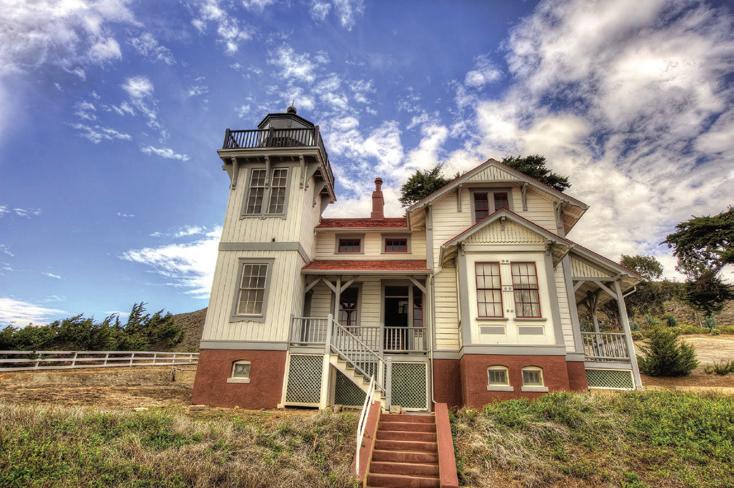
August 7 // brownpapertickets.com



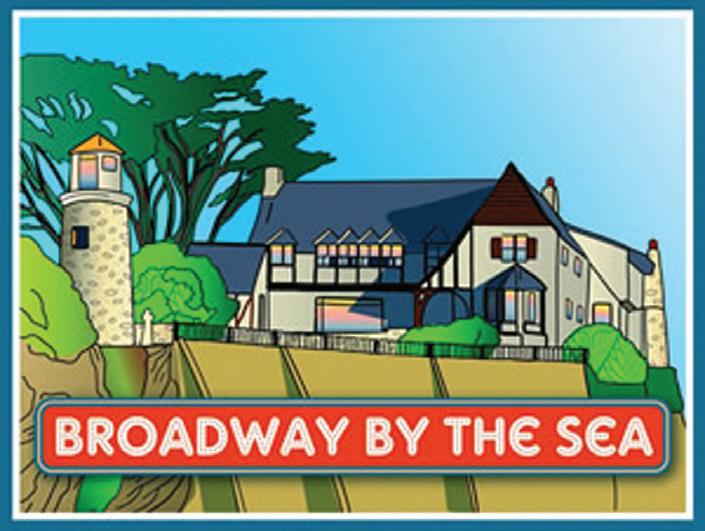
Once again, Opera San Luis Obispo presents its annual outdoor concert featuring an outstanding quintet of nationally acclaimed singers and pianist. Arrive early, picnic with friends, bid on auction items, stroll the gardens, and observe plein air painters.

August 13 // operaslo.org

Get ready to cut a rug Hep Cats because the San Luis Obispo Symphony is bringing the big band, boogie woogie rhythms of the 40’s to the Fremont Theater. Tell your friends to jump in the jalopy and join the Bobbysox Brigade for jivin’ music and swing a wing dancing.

August 14 // slosymphony.org

Winner of five Tony Awards, The Drowsy Chaperone is a loving send-up of 1920’s musicals featuring one show-stopping song and dance number after another. August 19 – September 11 slolittletheatre.org

The ensemble of 20 musicians will recreate the swinging sounds of Count Basie, Duke Ellington, Benny Goodman, Glenn Miller, Les Brown and other big bands of the 1940’s through the ’60’s. August 27 // cpcollegiansalumni.com
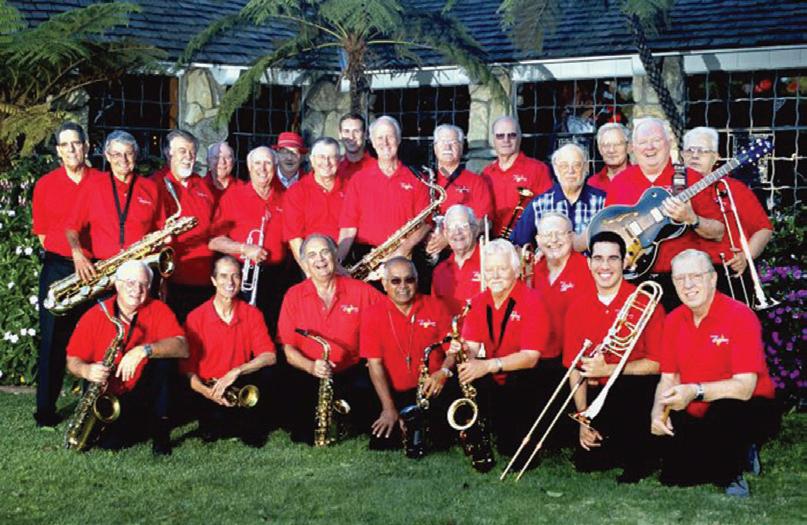
The Academy of Dance presents Dancin’ 2016. Dancers from beginner to professional, from two years old to 80 years old, take over the Performing Arts Center stage to show you what they have been working on all year. August 21 // pacslo.org




Enjoy a 30, 64, and 100-mile bike ride that tours through the most beautiful and scenic parts of San Luis Obispo County. Ride along the coast with oceanside views, through vineyards, farmscapes, and lakeside scenes. August 27 // centralcoastclassique.com

The Tedeschi Trucks Band with special guests Nicki Bluhm and The Gramblers come to California’s Premier Beachfront Concert Venue, the Avila Beach Resort for Labor Day Weekend. September 4 // otterproductionsinc.com

Savor the best in the Central Coast’s avocados, live music, entertainment, and atmosphere in a safe and fun street festival. September 10 // avomargfest.com


16 years after graduation, Mitch happens to catch Morrie’s appearance on a television news program and learns that his old professor is battling Lou Gehrig’s Disease. Mitch is reunited with Morrie, and what starts as a simple visit turns into a weekly pilgrimage and a last class in the meaning of life.

September 23 – October 9 slolittletheatre.com


Enjoy an evening of premier wines, gourmet dining, live and silent auctions, and more. All proceeds benefit abused and neglected children in San Luis Obispo County. CASA recruits, trains, and supervises volunteers who advocate for this vulnerable population with the goal of ensuring that each and every child grows up in a safe, nurturing, and permanent home. September 17 // slocasa.org

This festival is an exciting and unique three-day event at the Pismo Beach Pier designed to motivate the youth in California to get off of their computers and video games and go surfing.


September 24 – 25 // us.billabong.com

A “tale as old as time” is given fresh life when everybody’s favorite fairytale is blended with a sci-fi classic. Mixing in song parodies and pop culture references, Trudy and the Beast is a surefire crowd pleaser.
September 28 – November 13 americanmelodrama.com

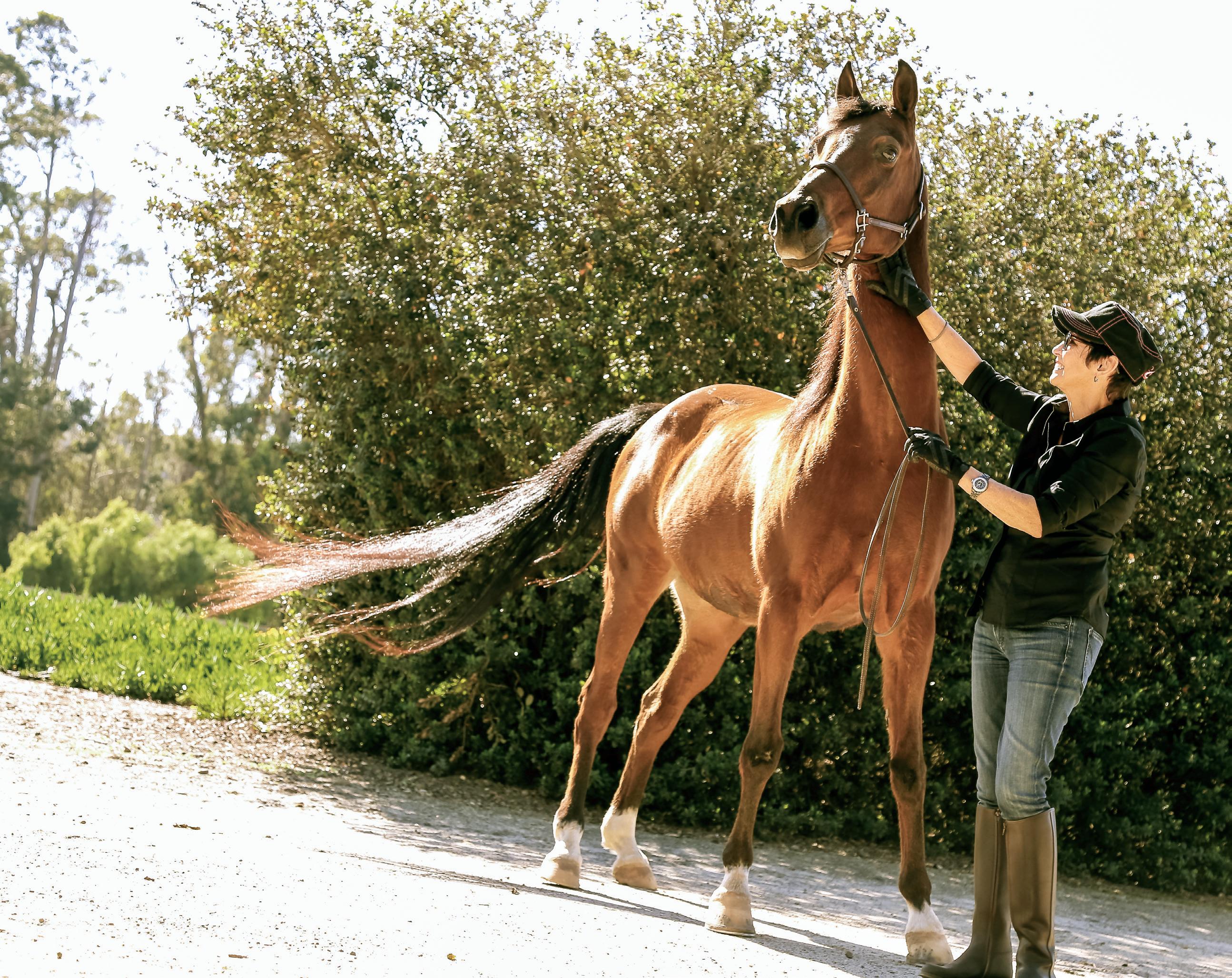




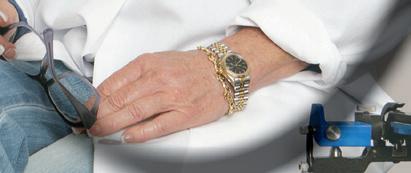









HAVEN PROPERTIES introduces Real Estate Laboratories. The HAVEN PROPERTIES Real Estate Lab is the FIRST and only home buying and selling EXPERIENCE that combines the efforts of multiple agents and real estate PROFESSIONALS to help you find or sell your home. Work with your favorite Haven agent but gain the expertise, market knowledge and NETWORK of all of us. Why hire just one agent to seek out your next home - let our Lab team search, network and locate your PERFECT HOME. With HAVEN PROPERTIES Real Estate Labs, you have the whole team behind you.
